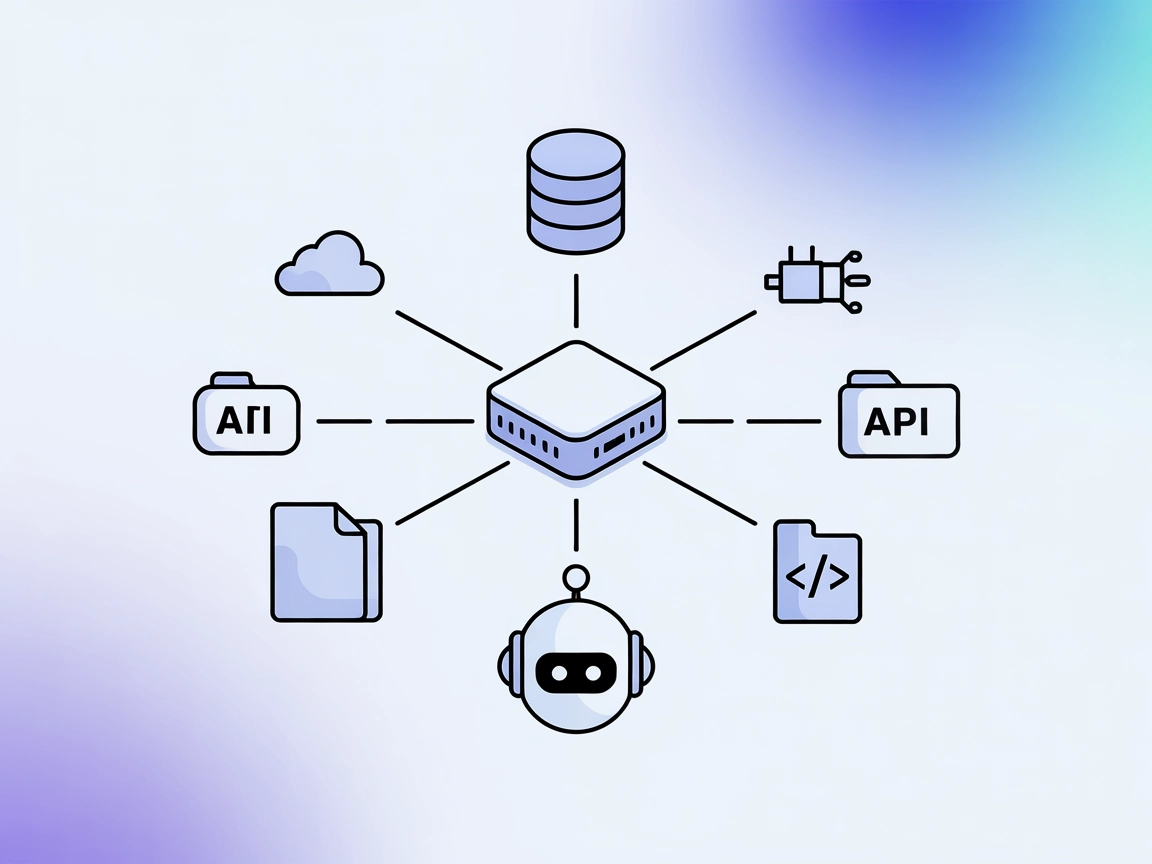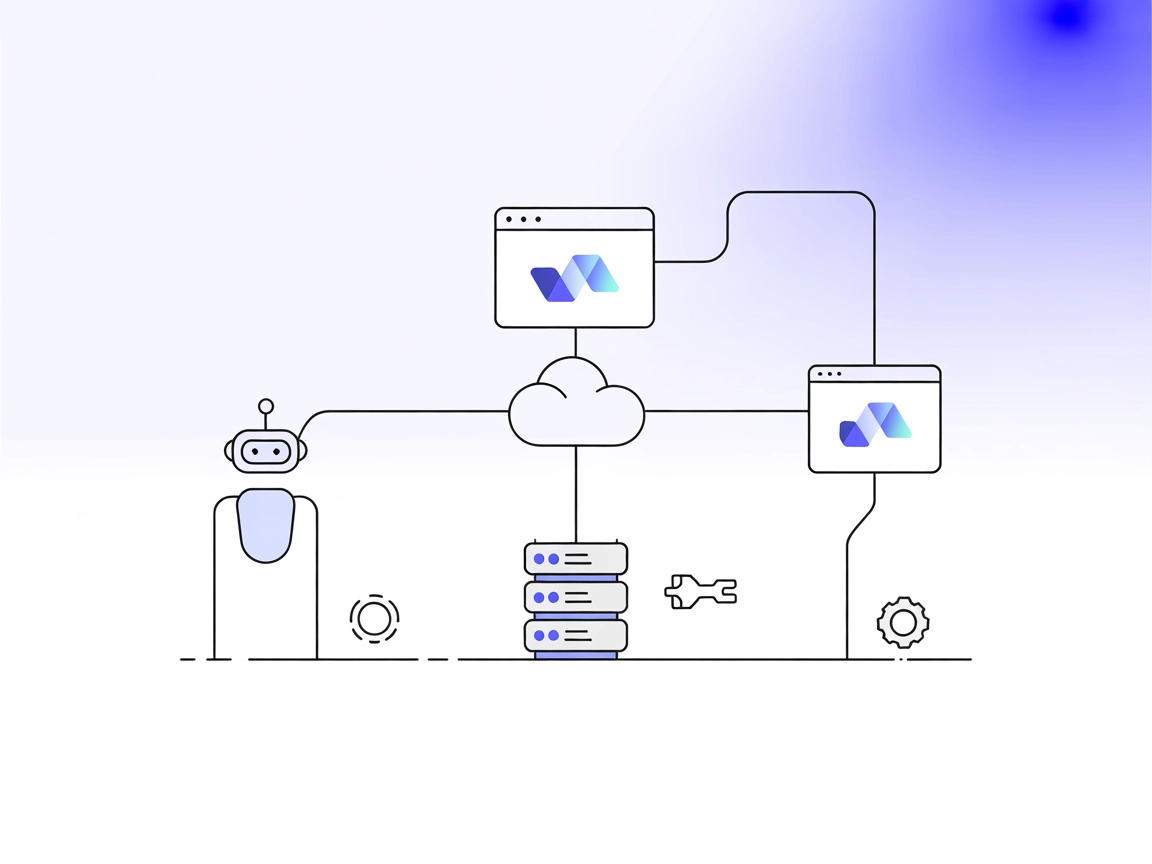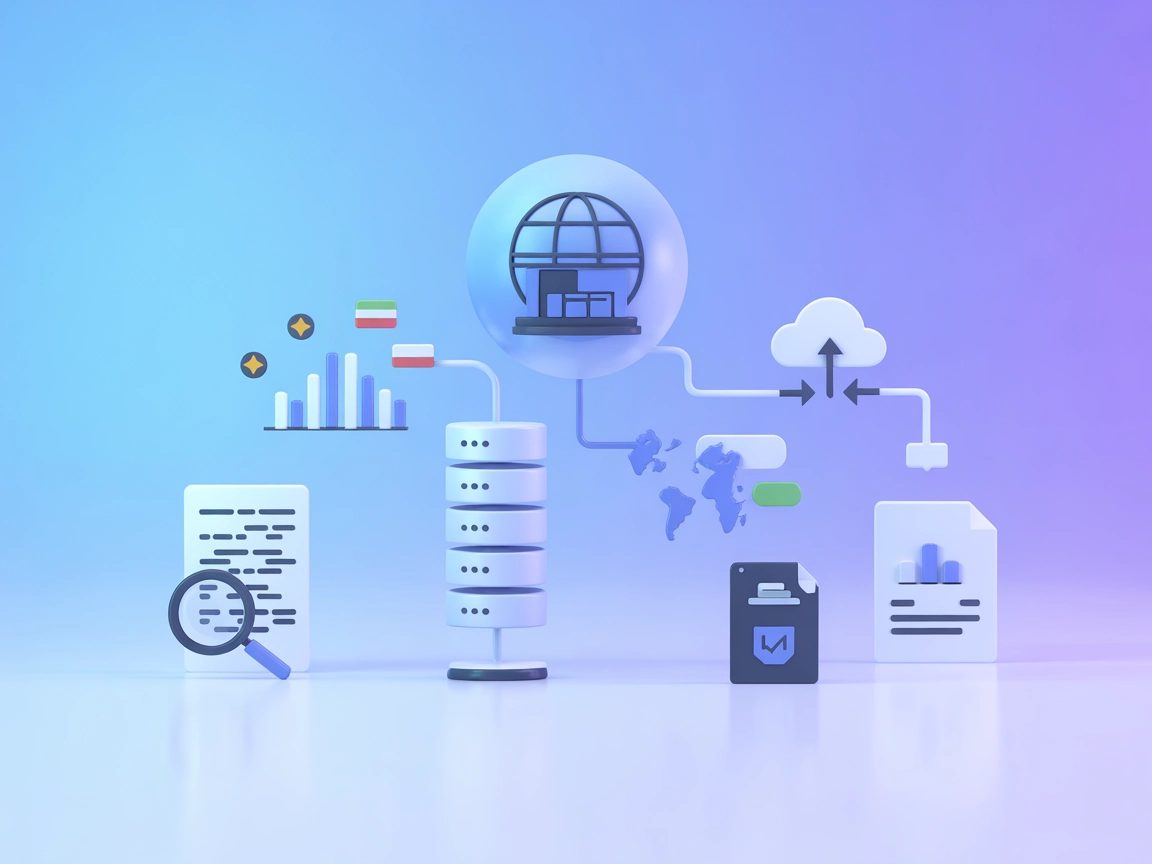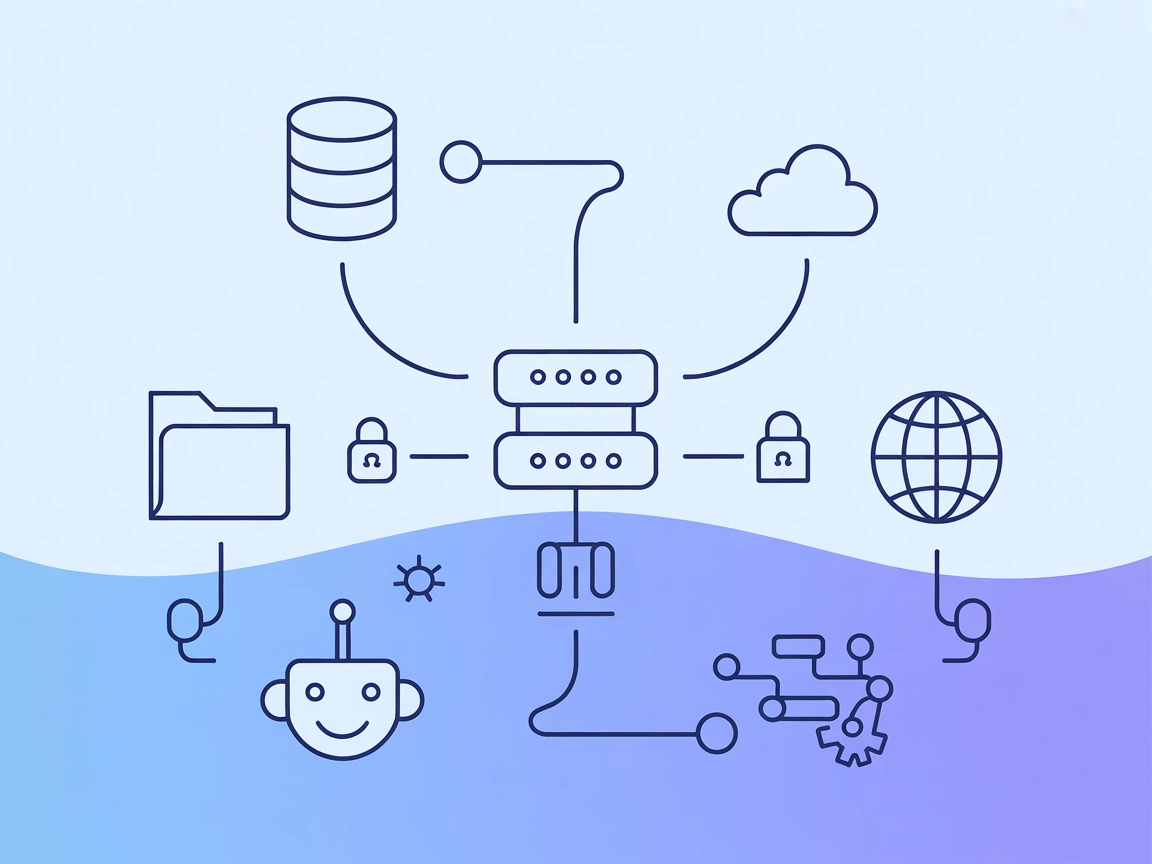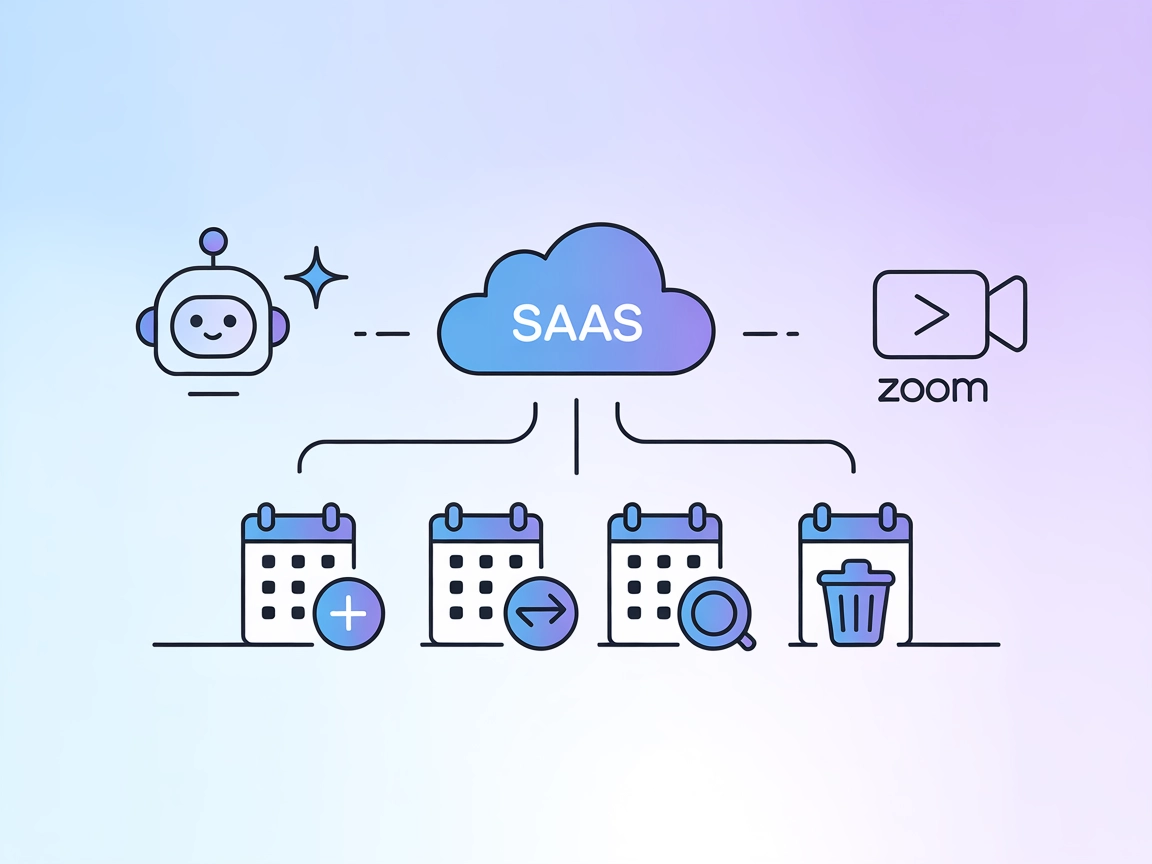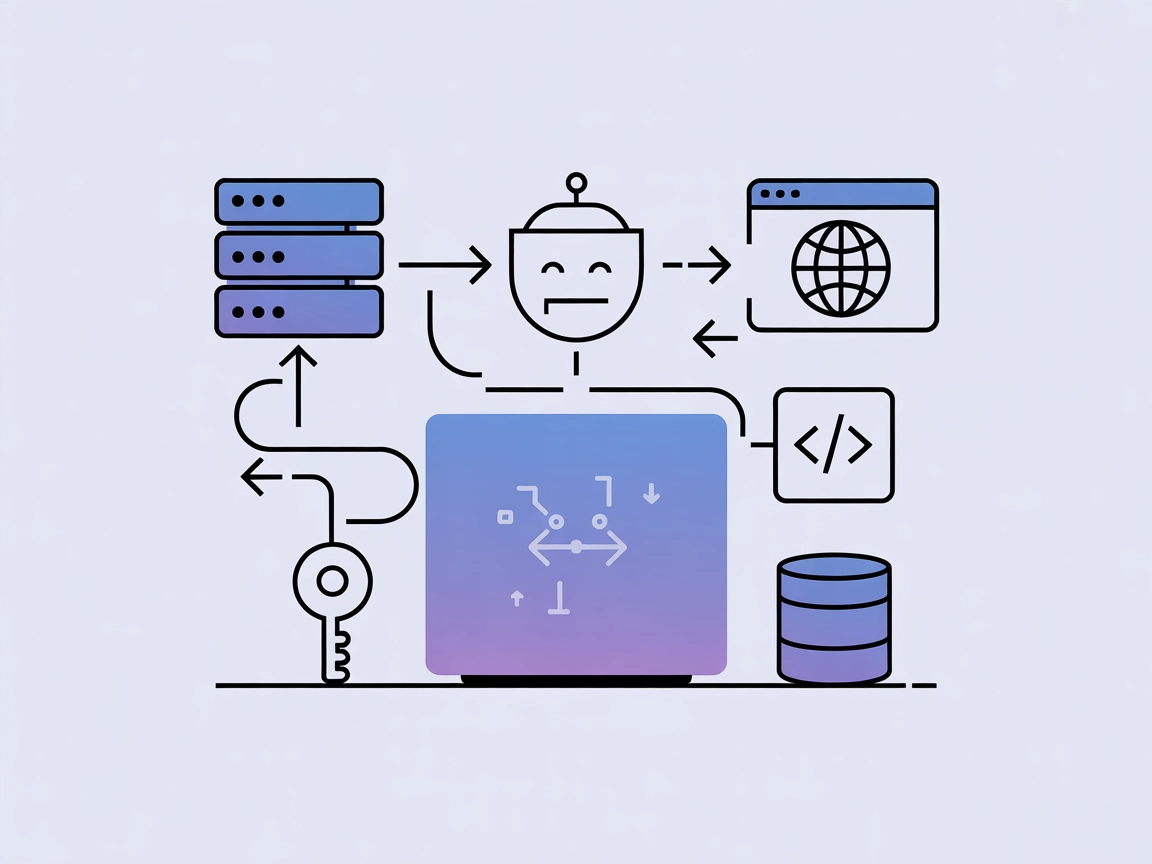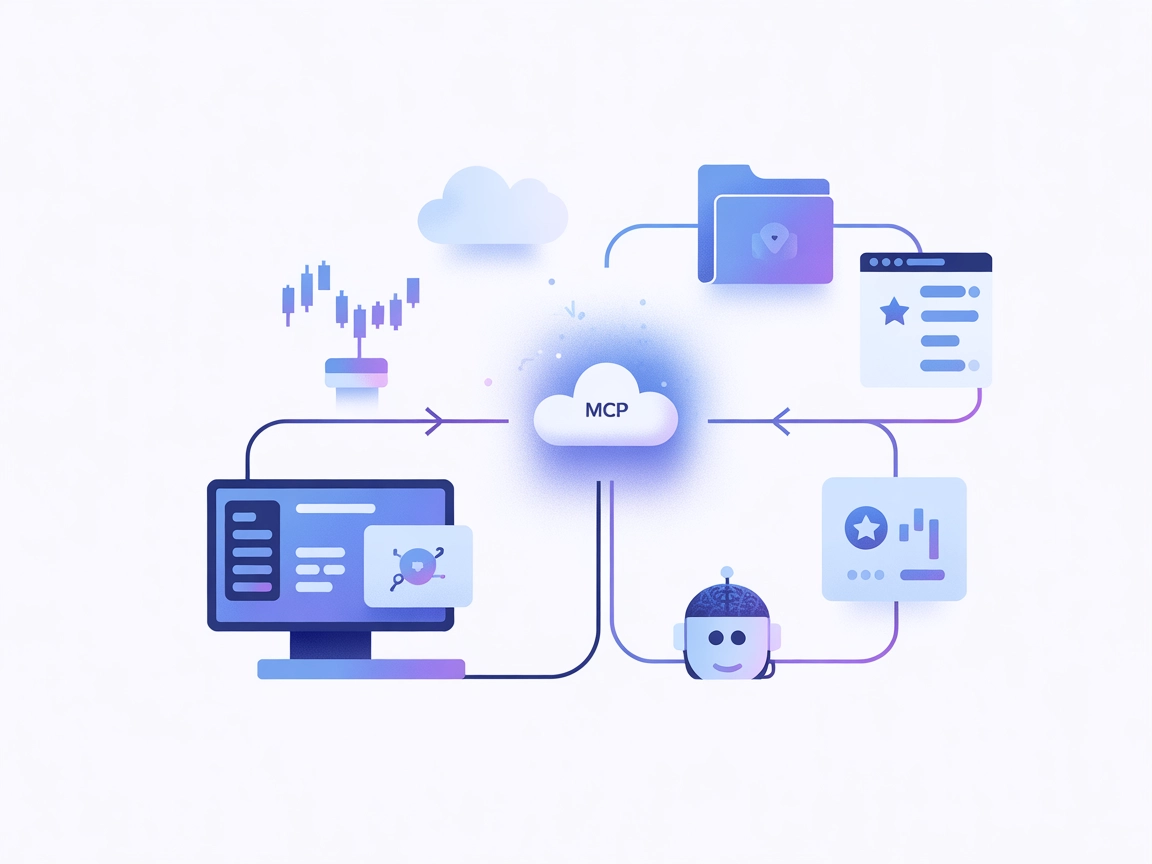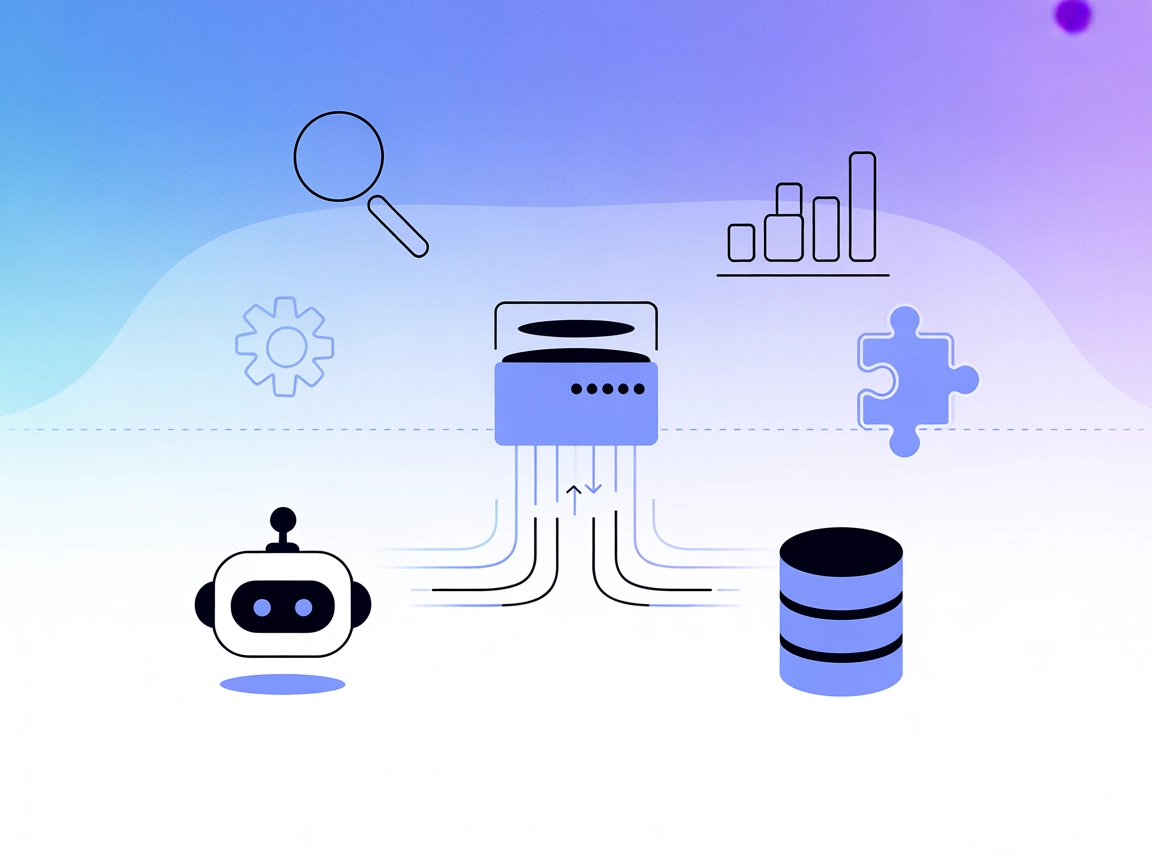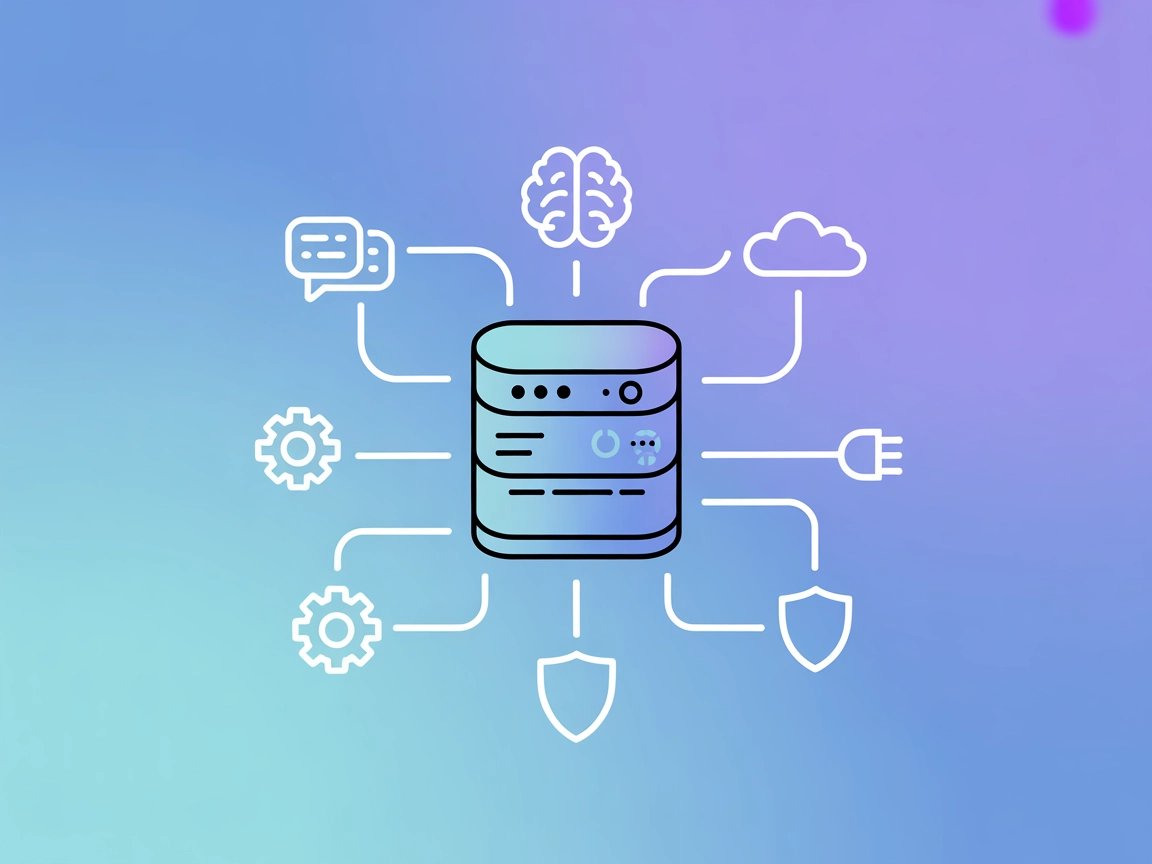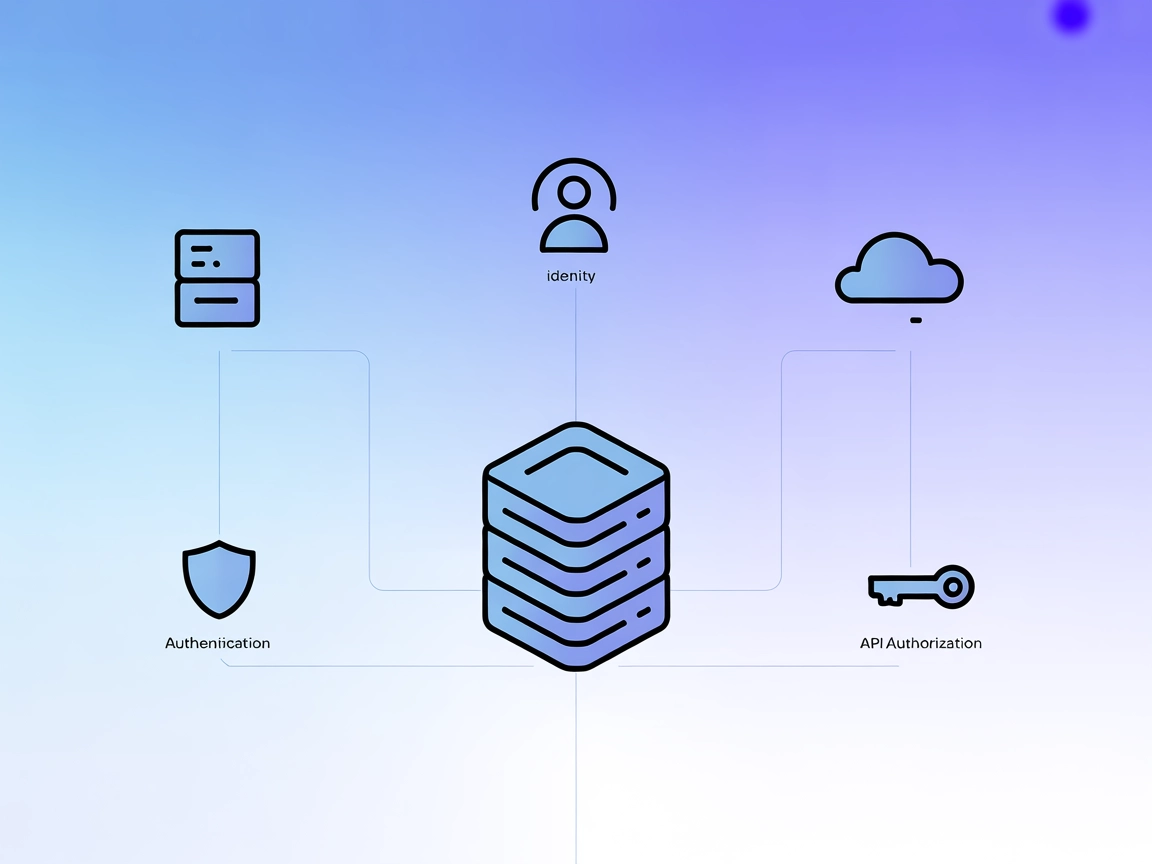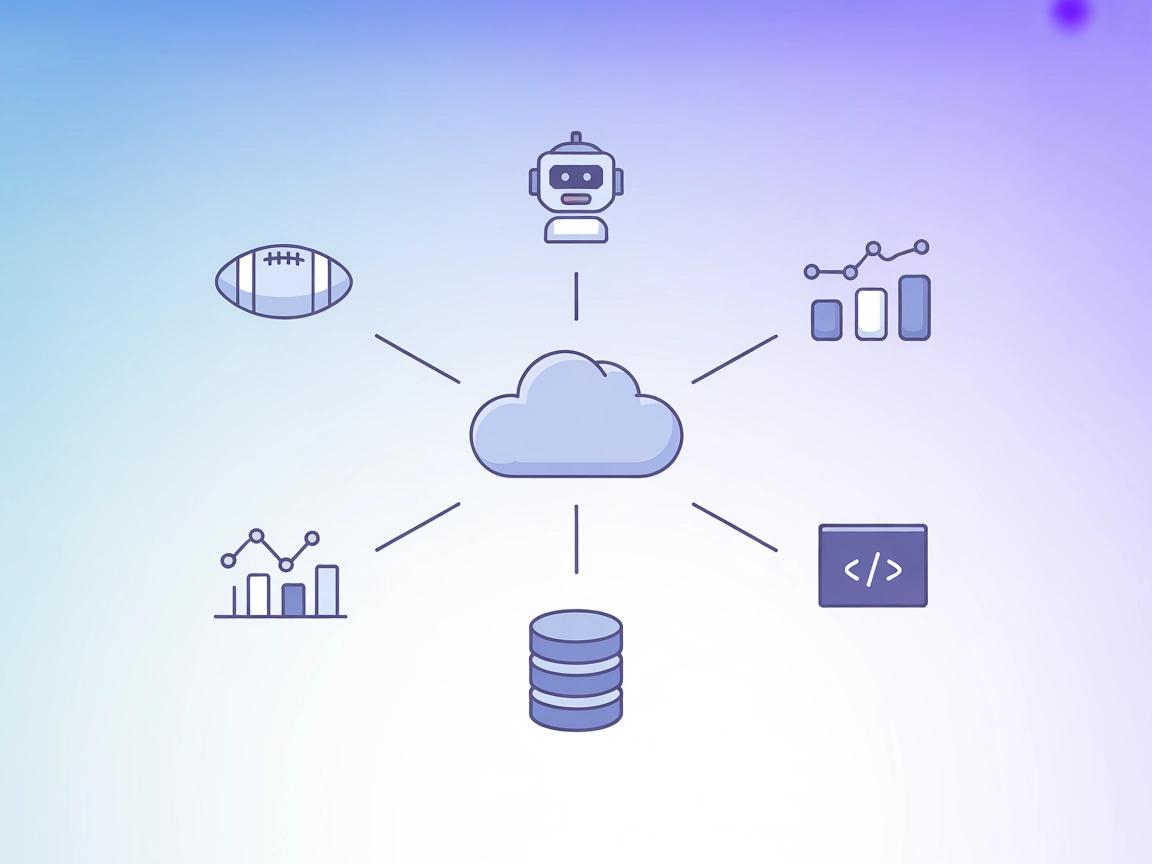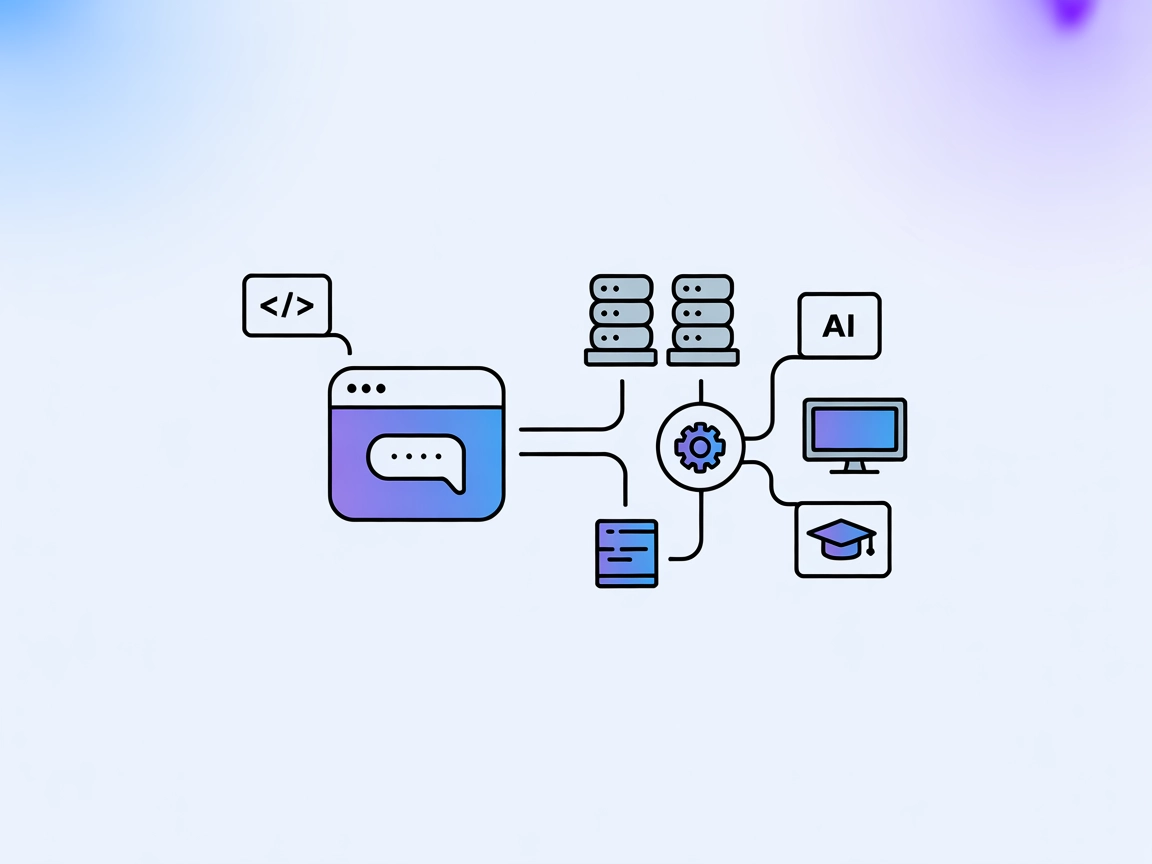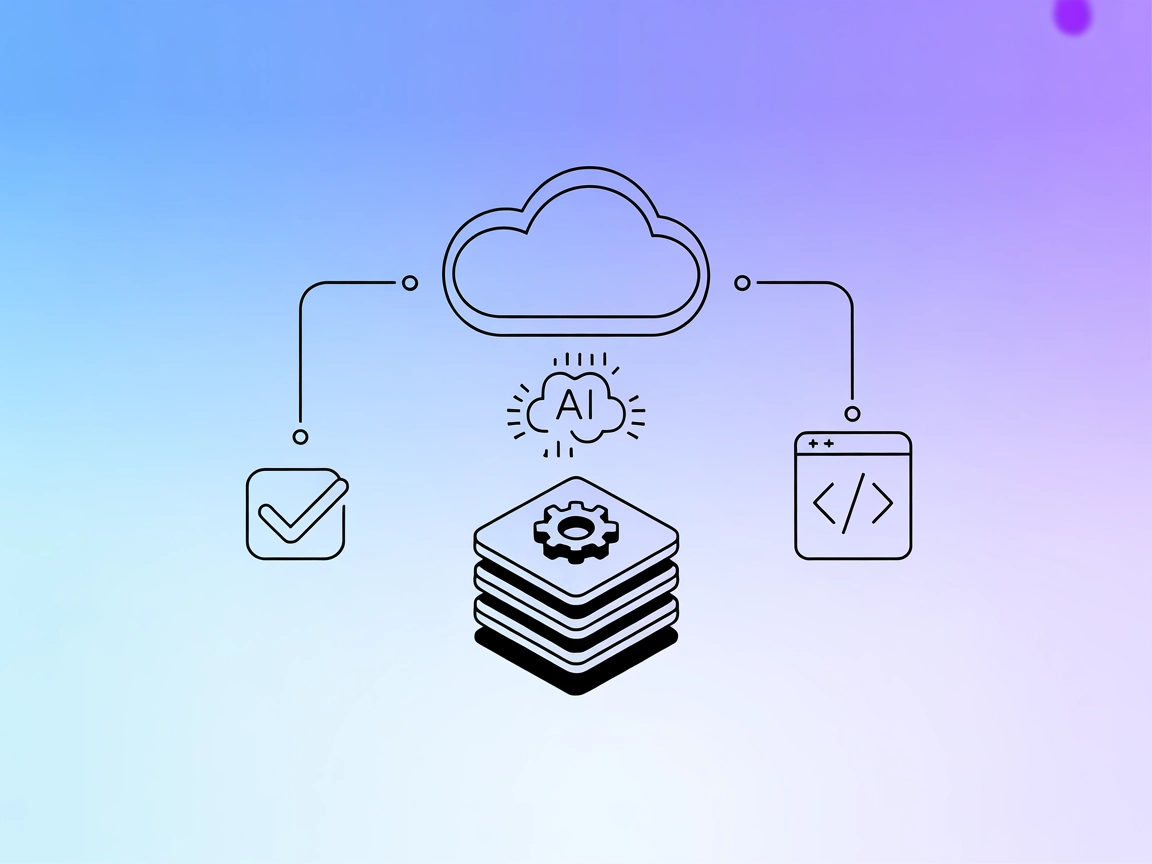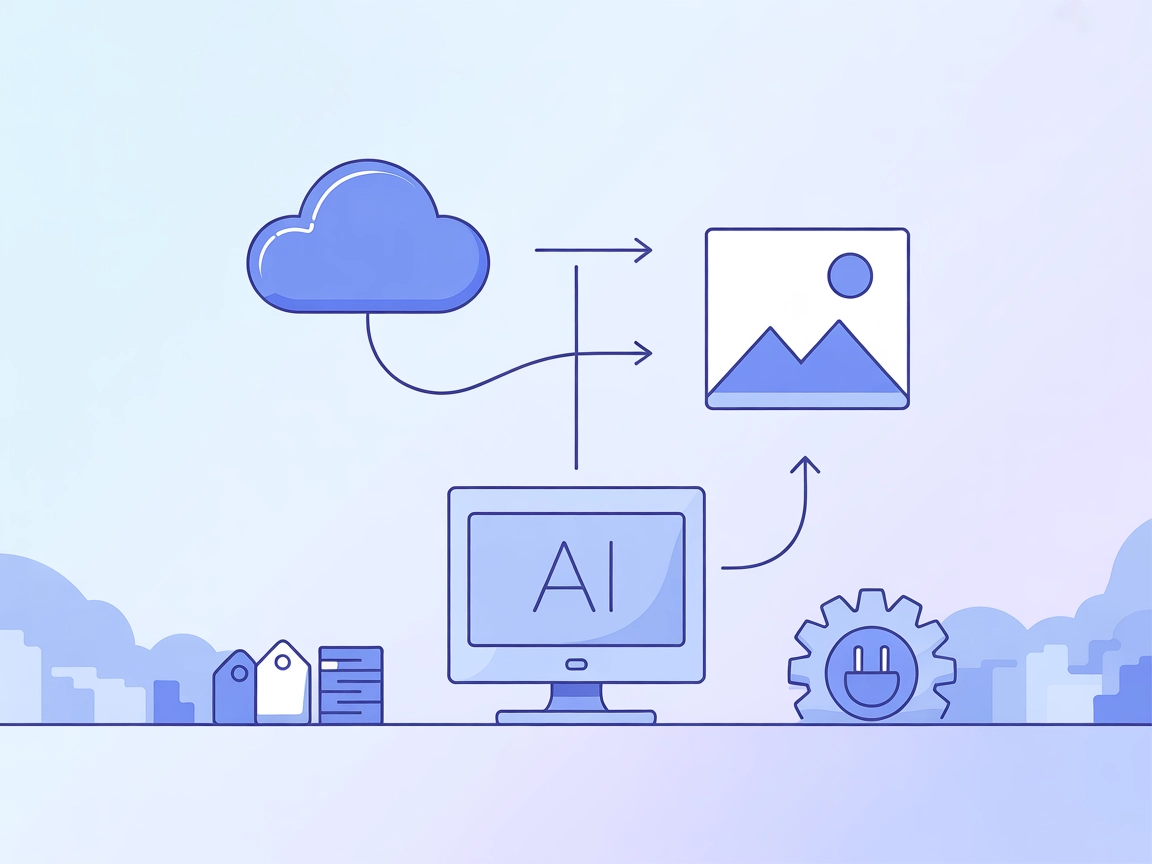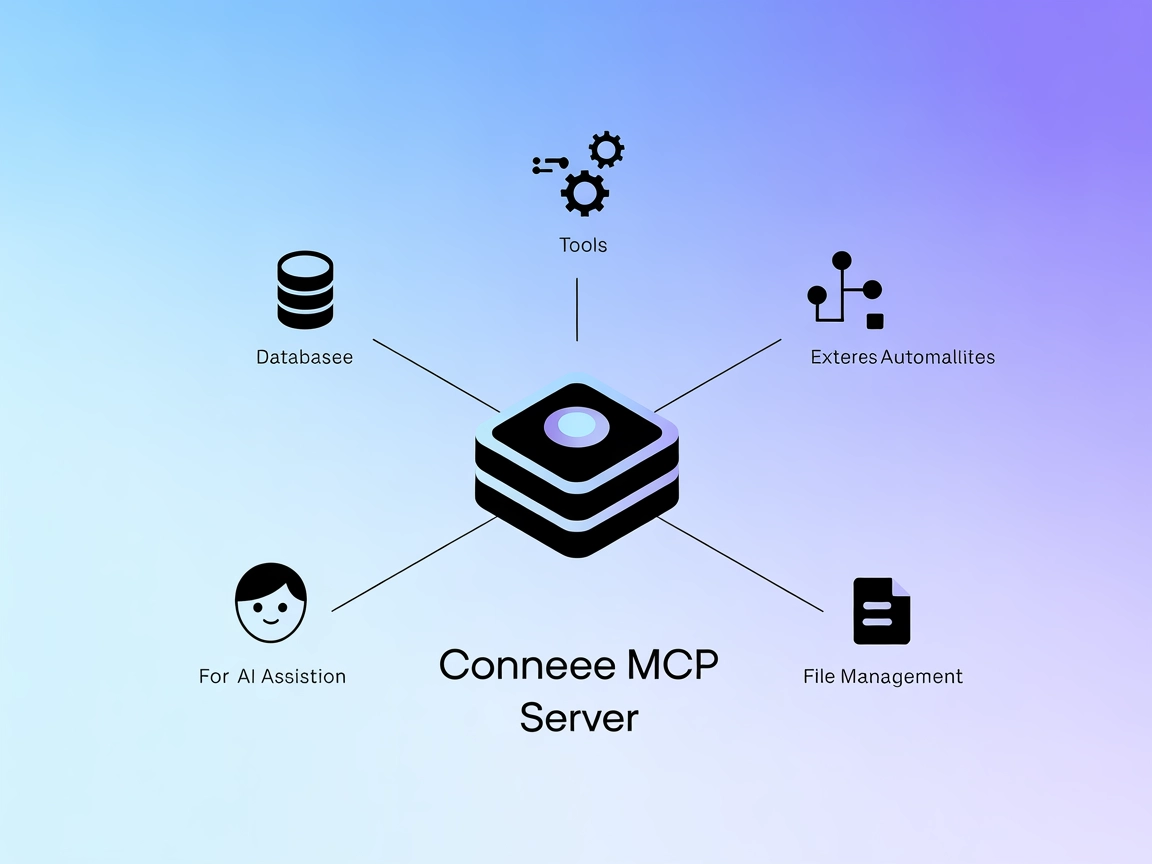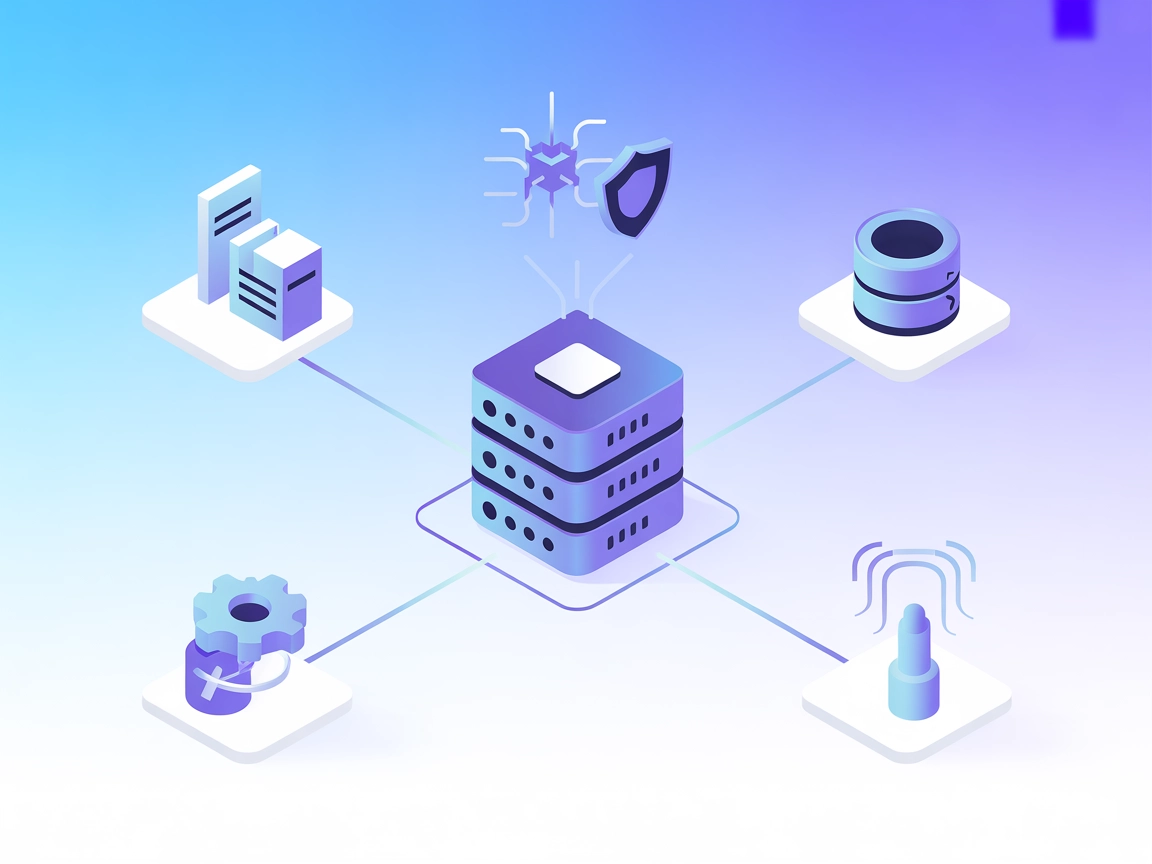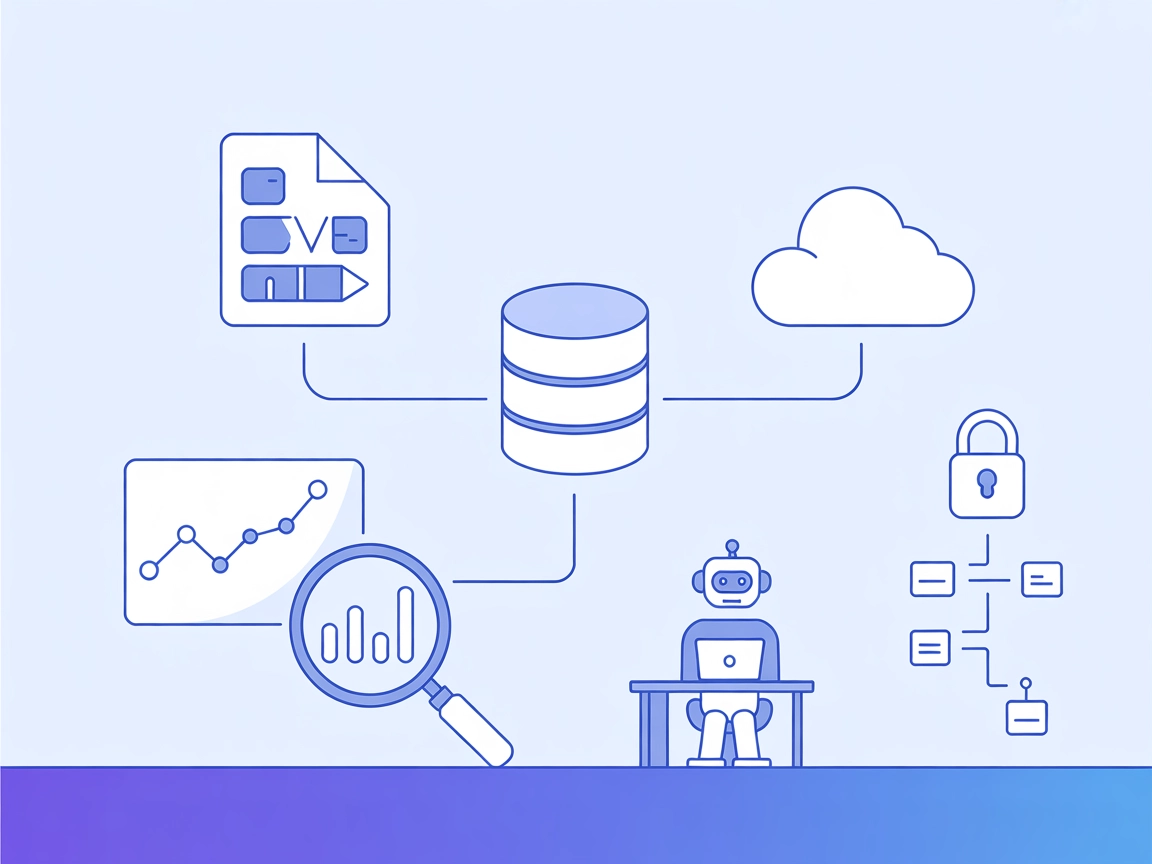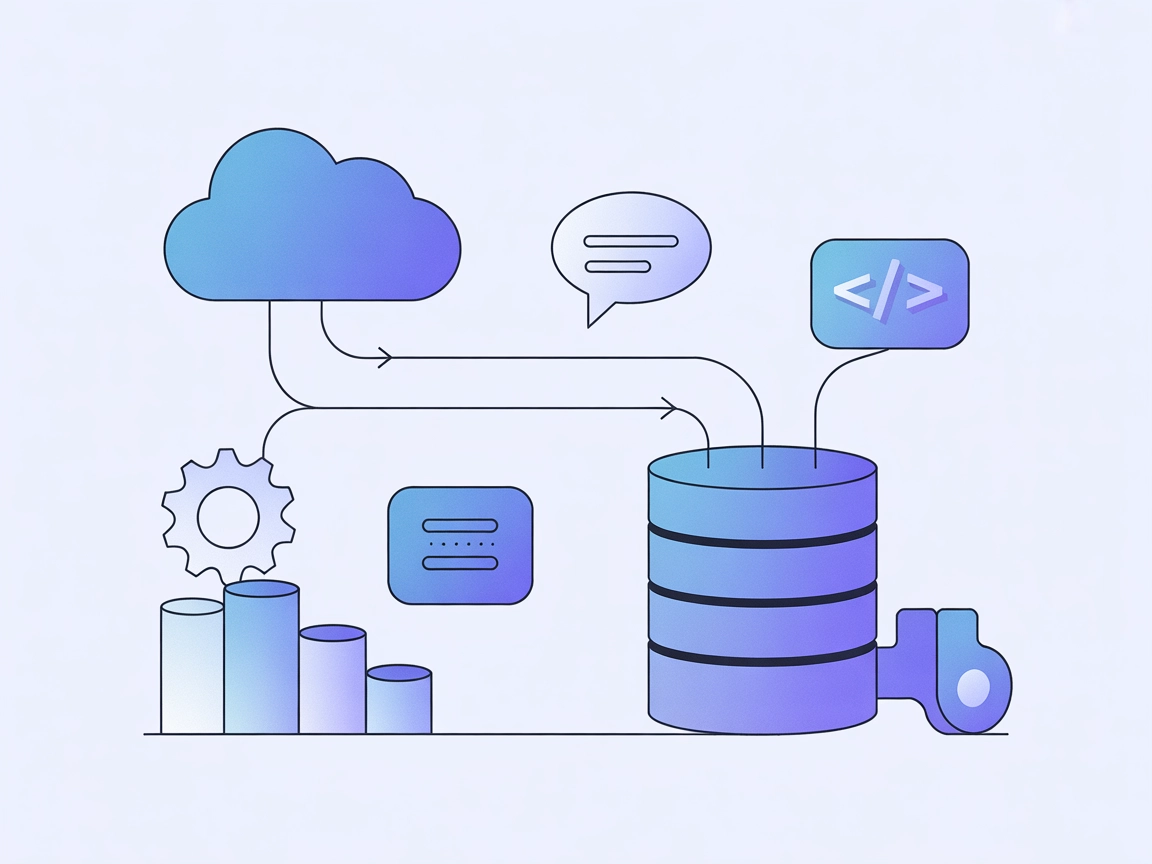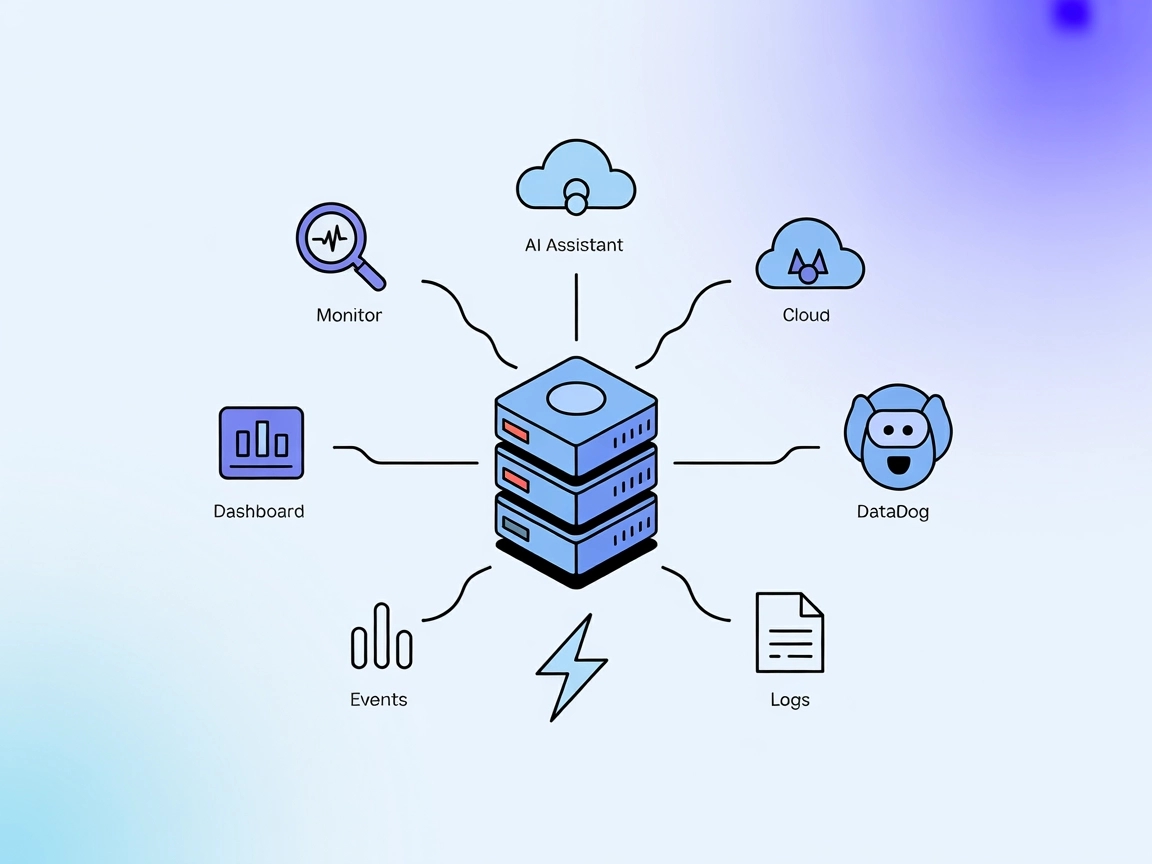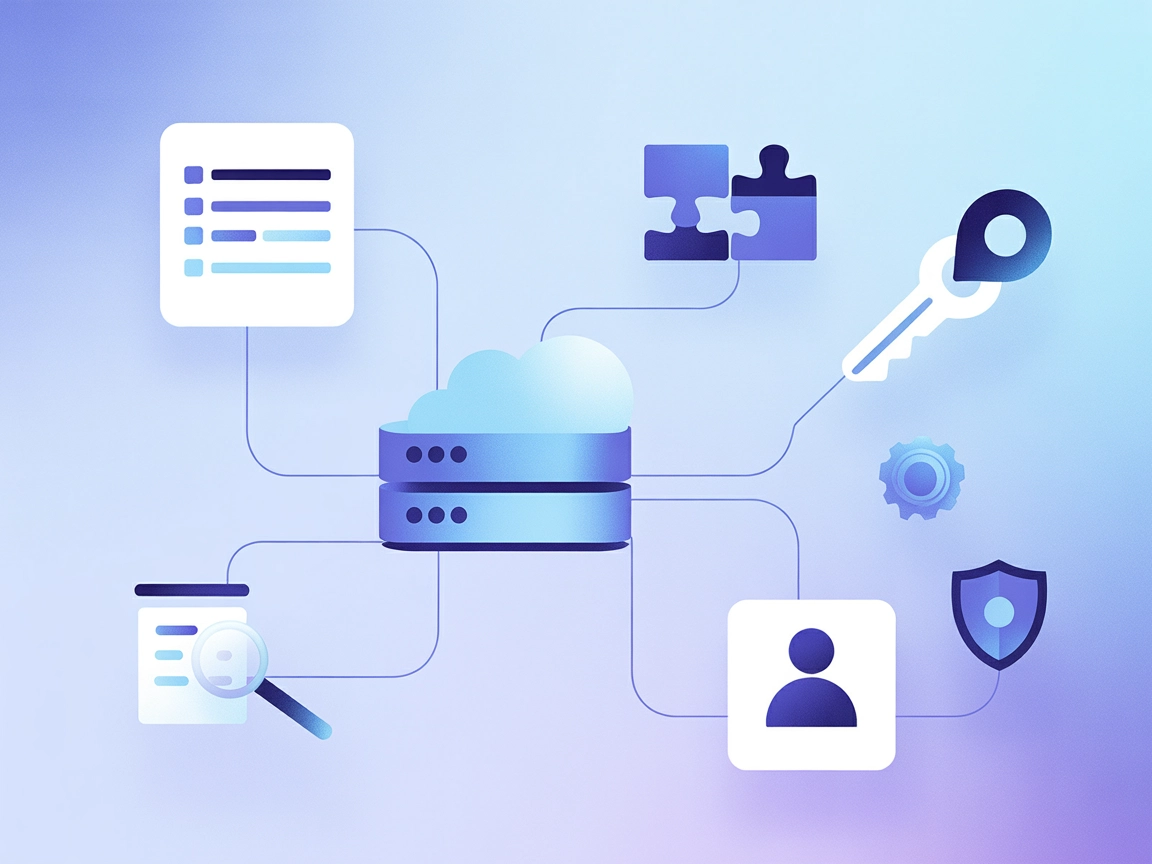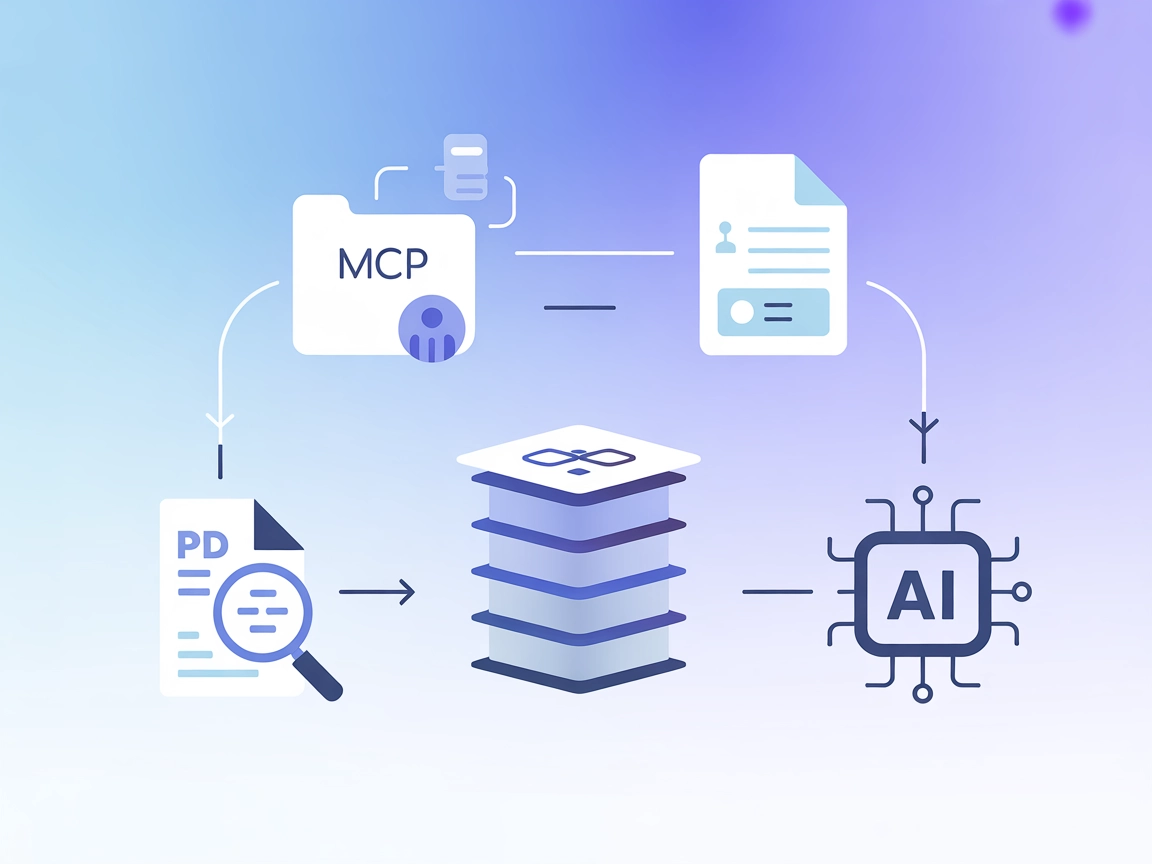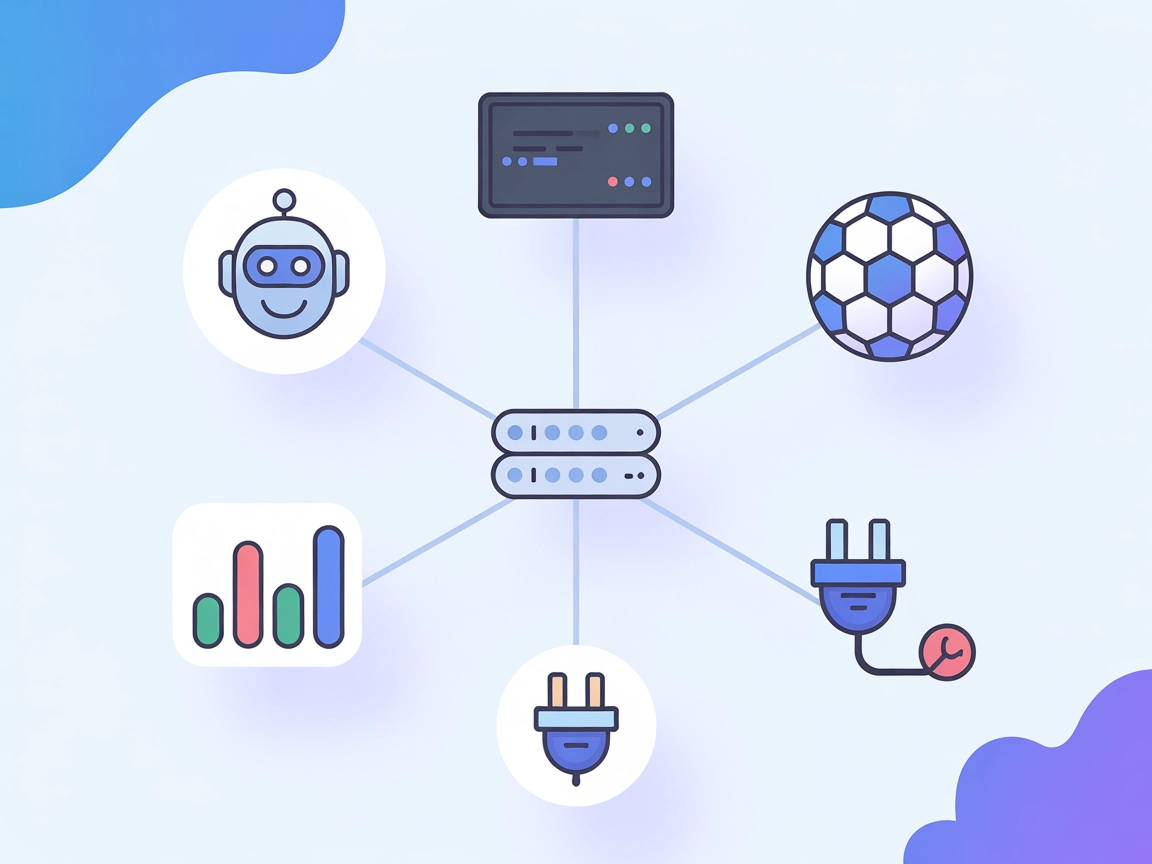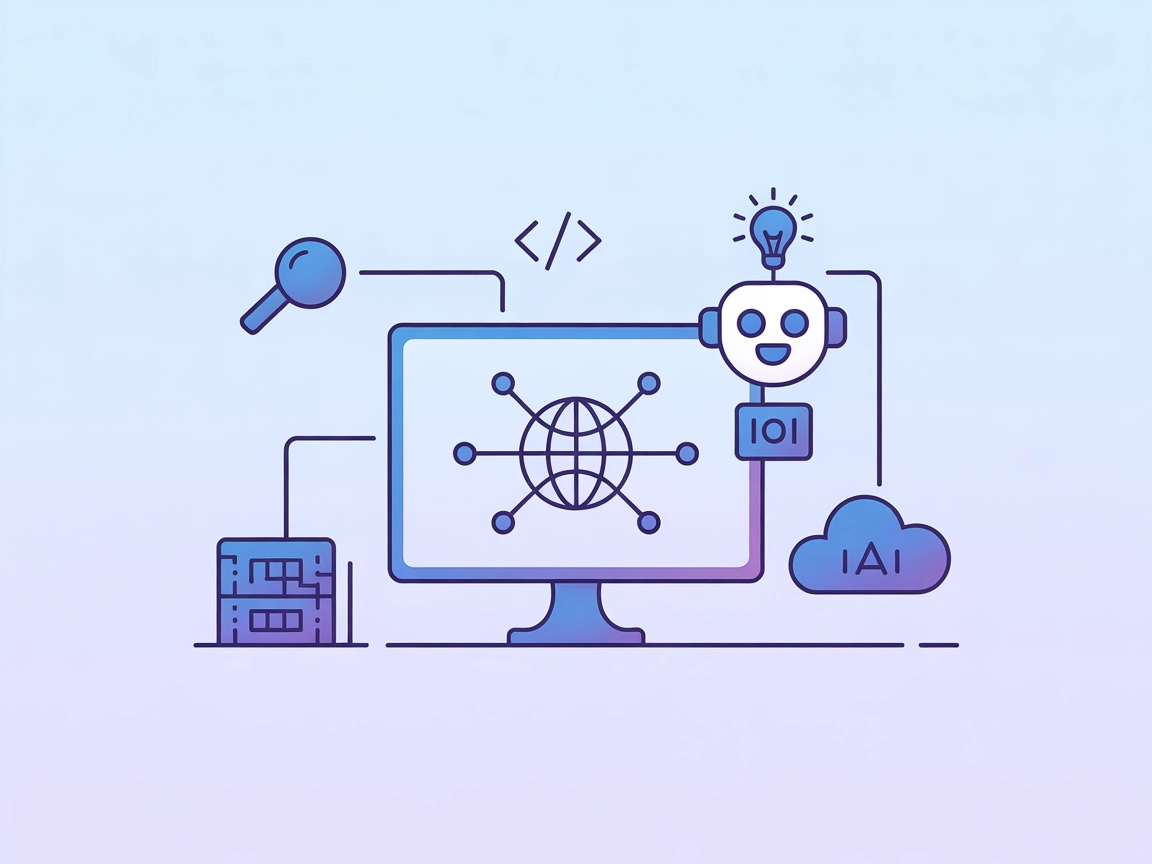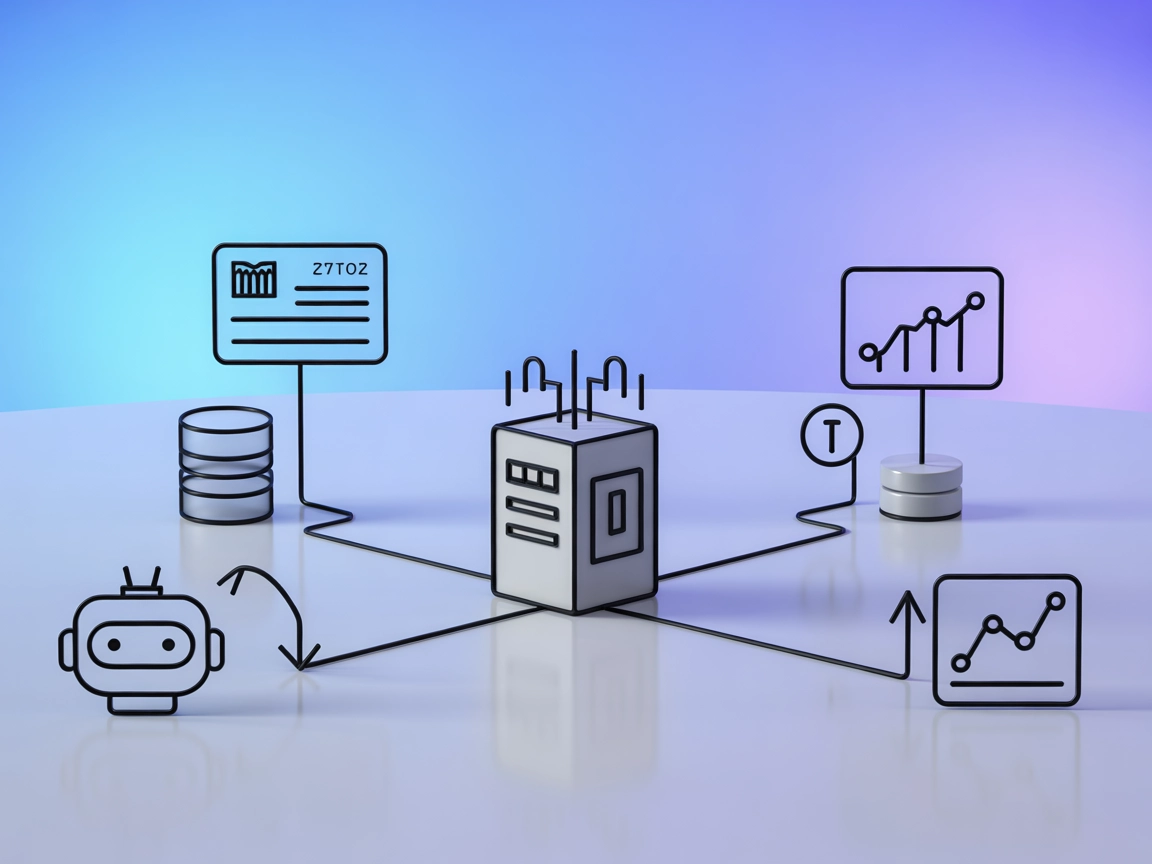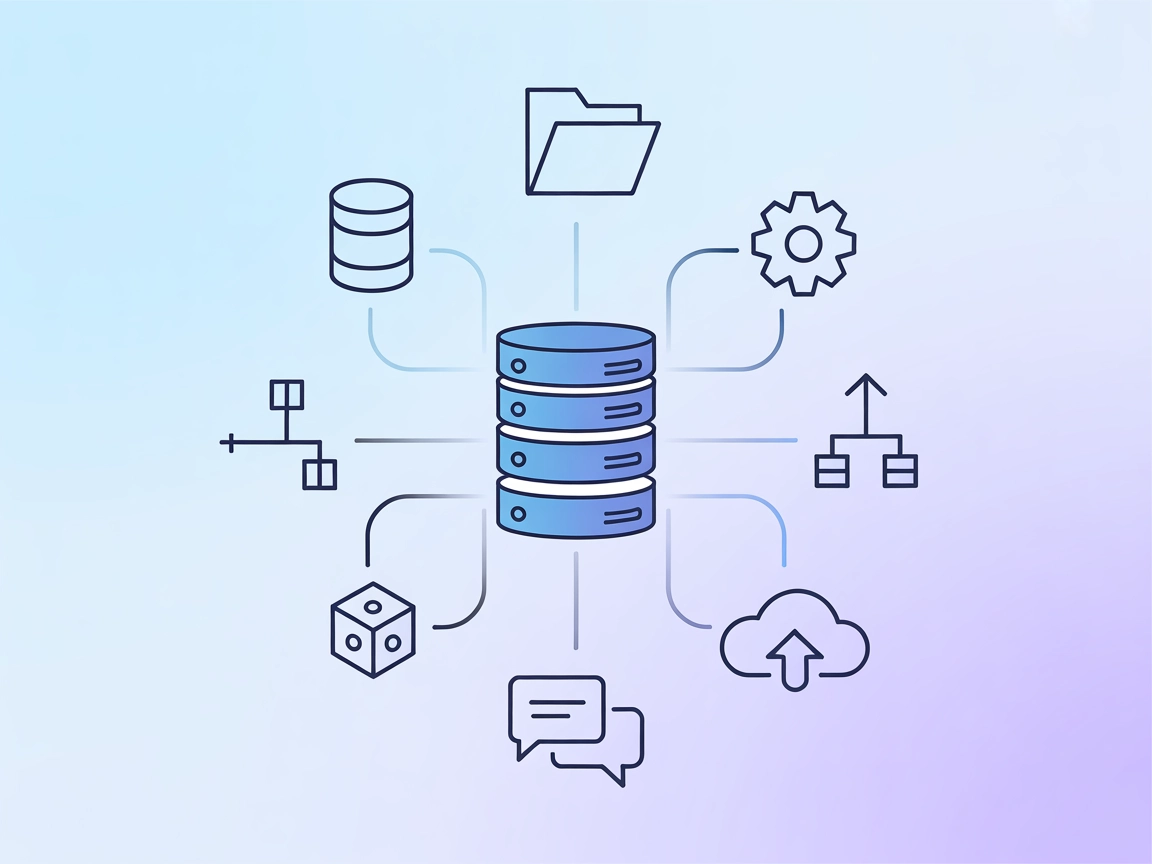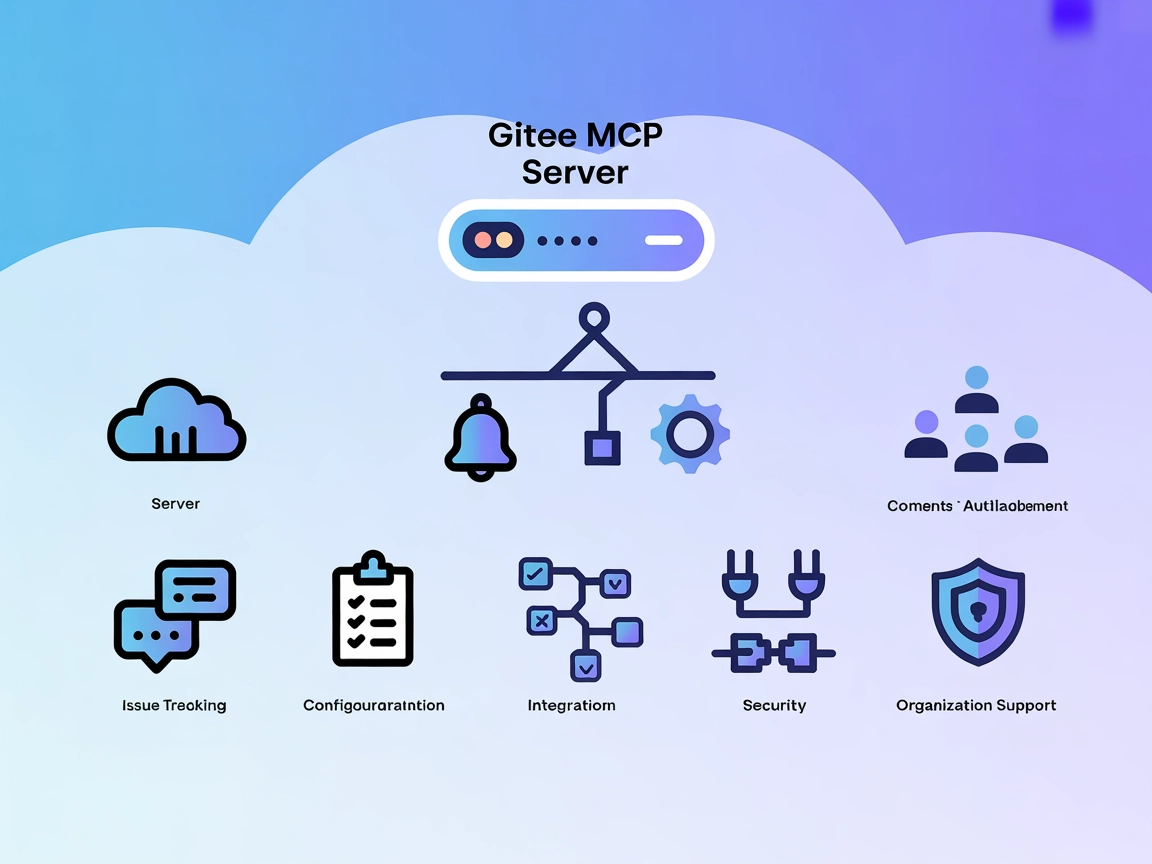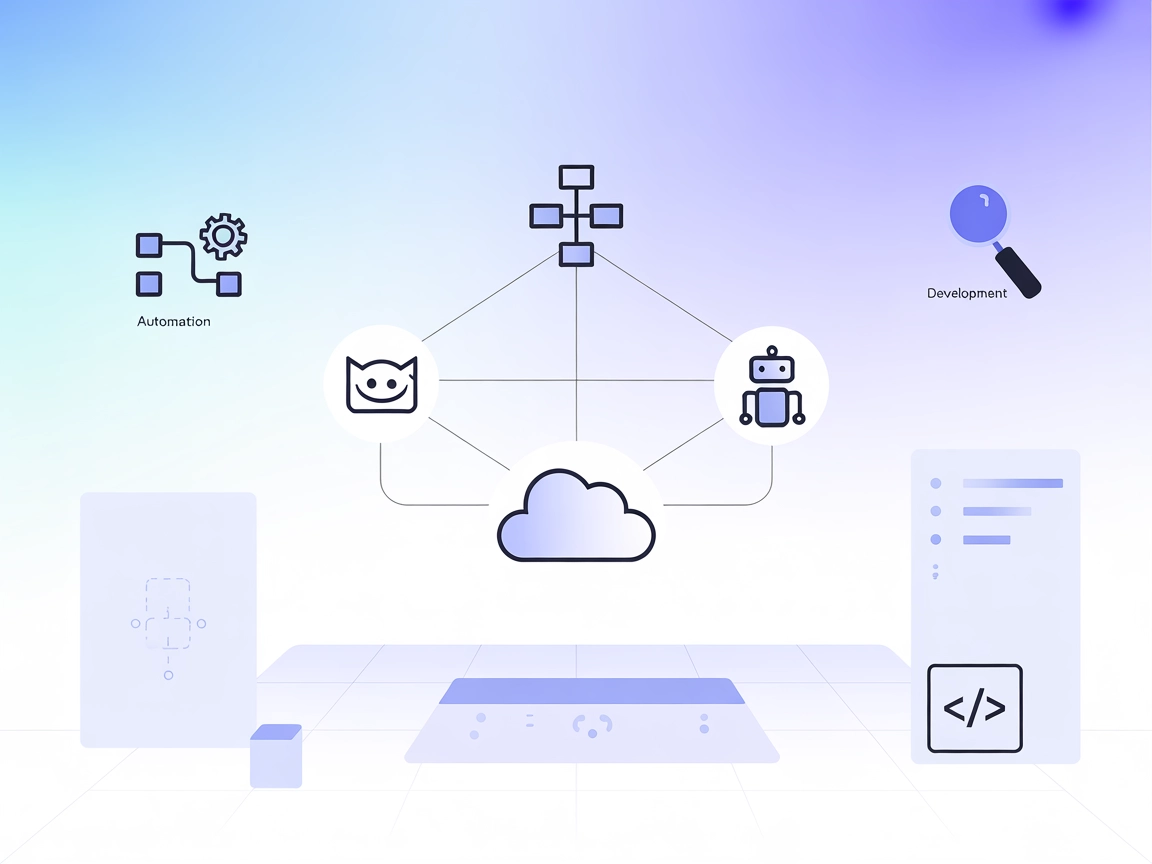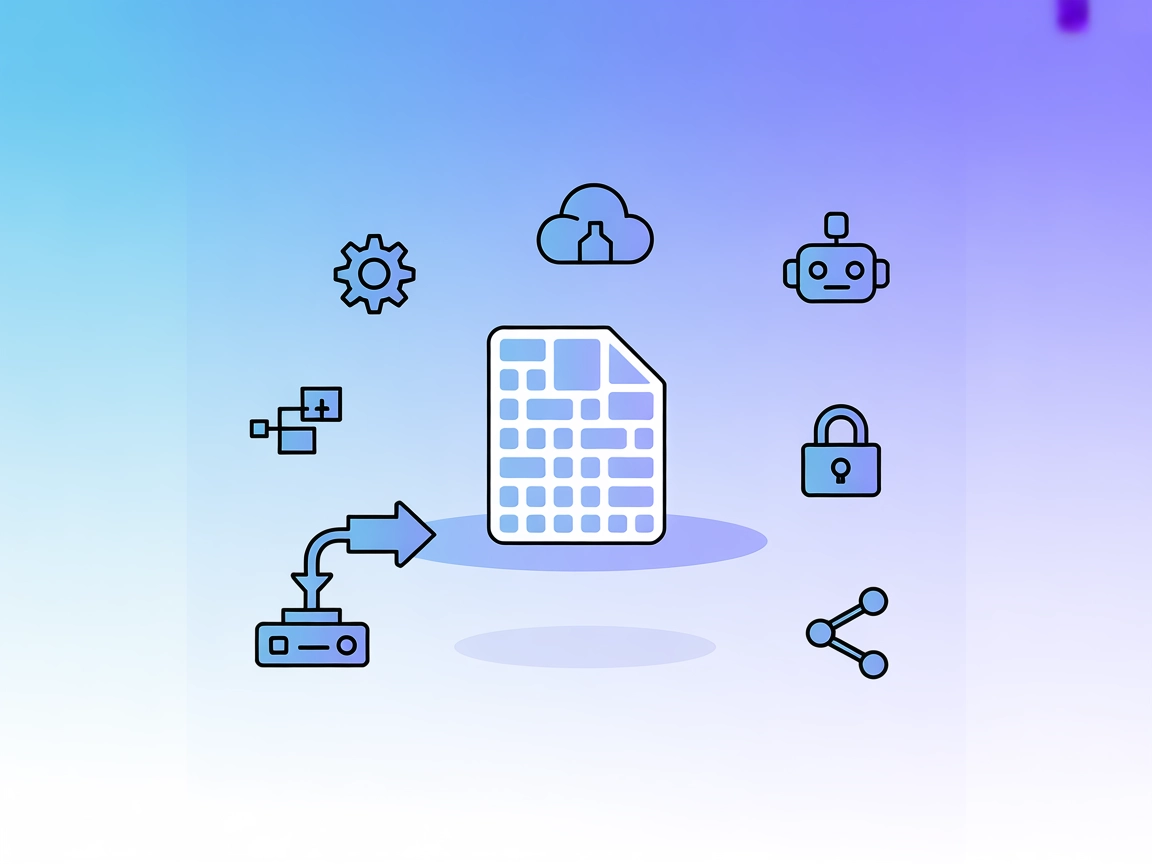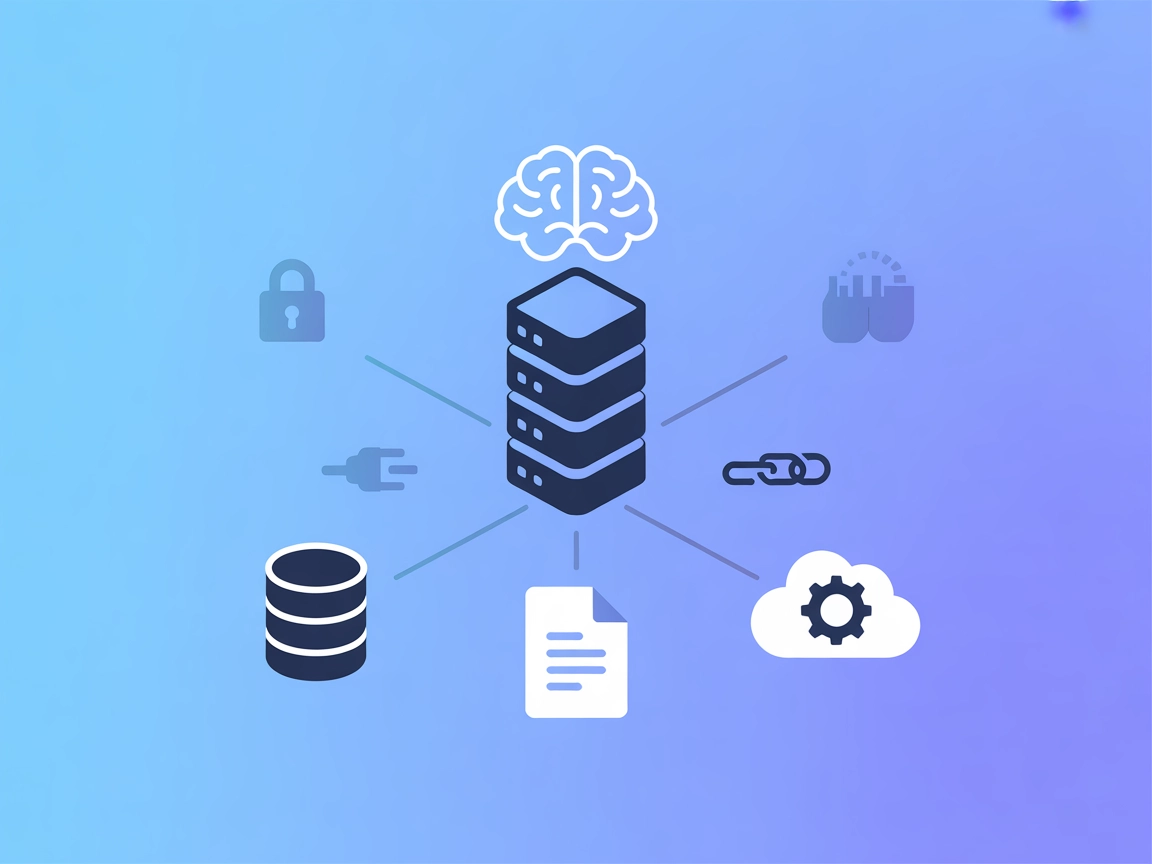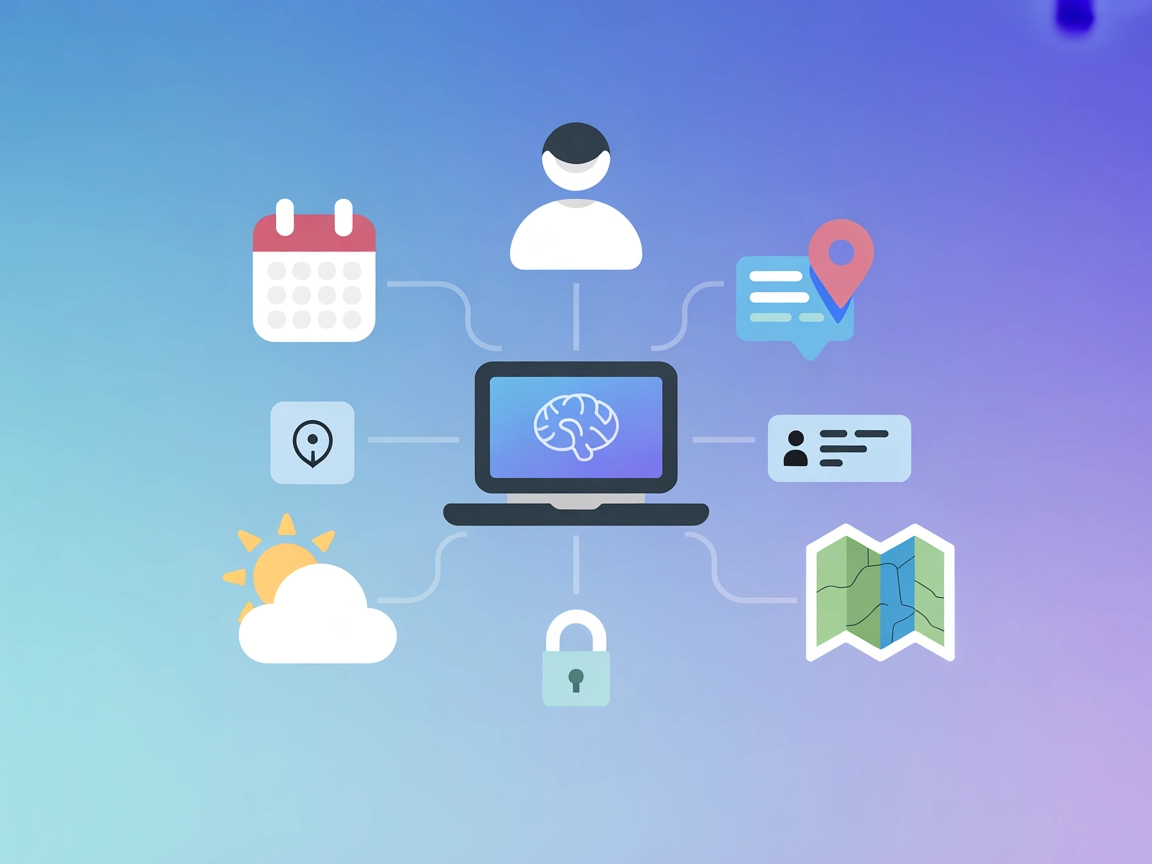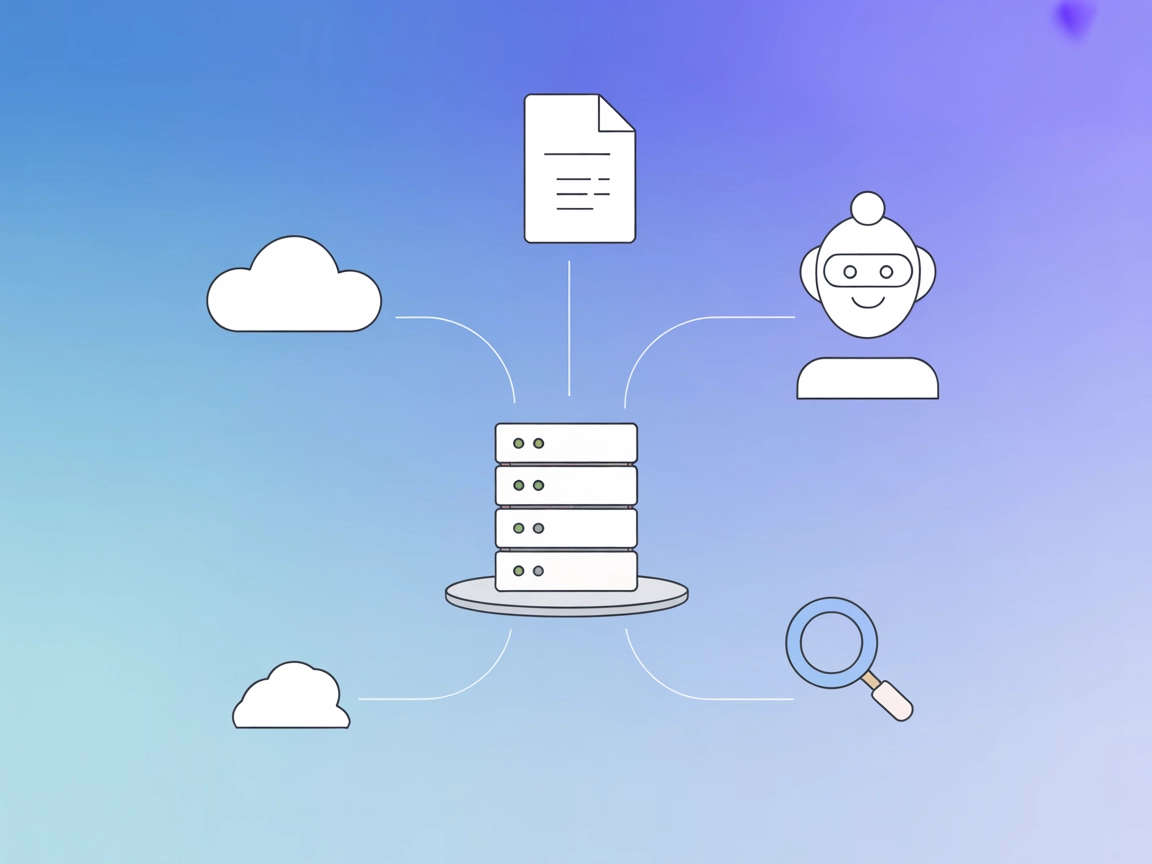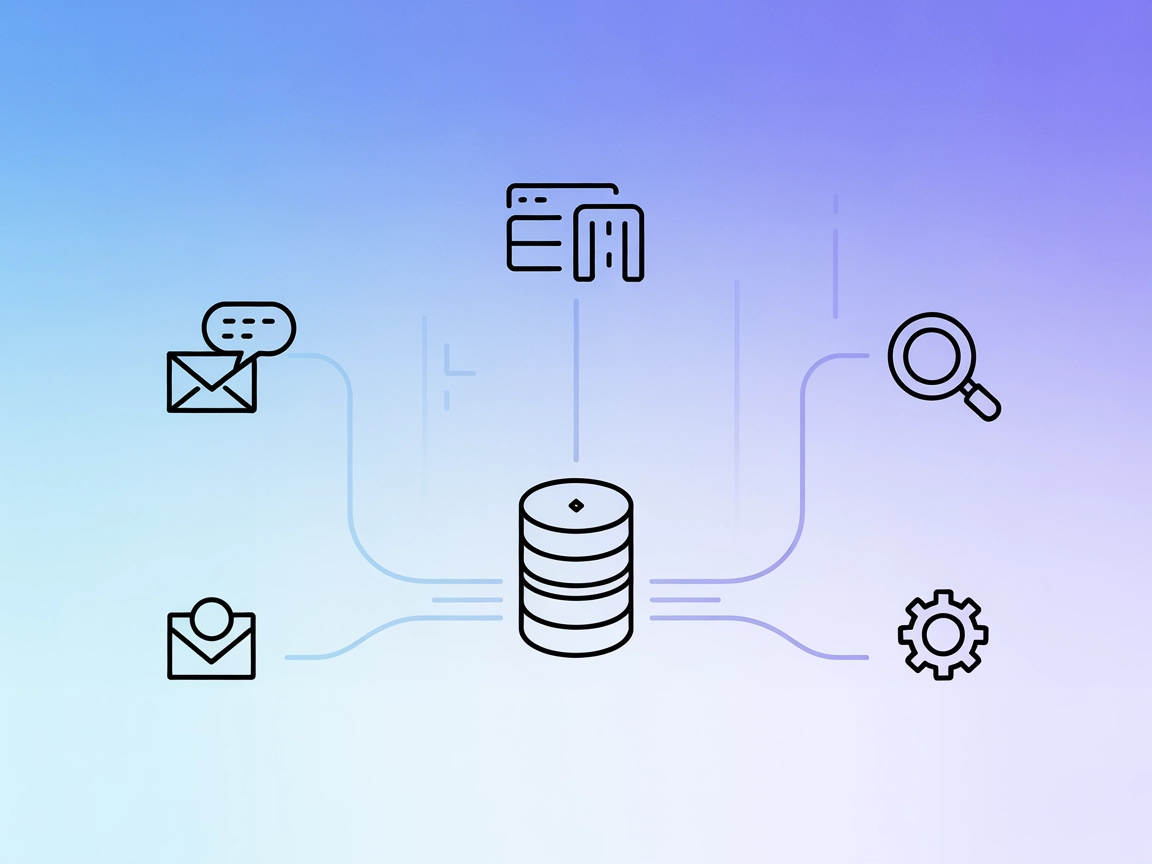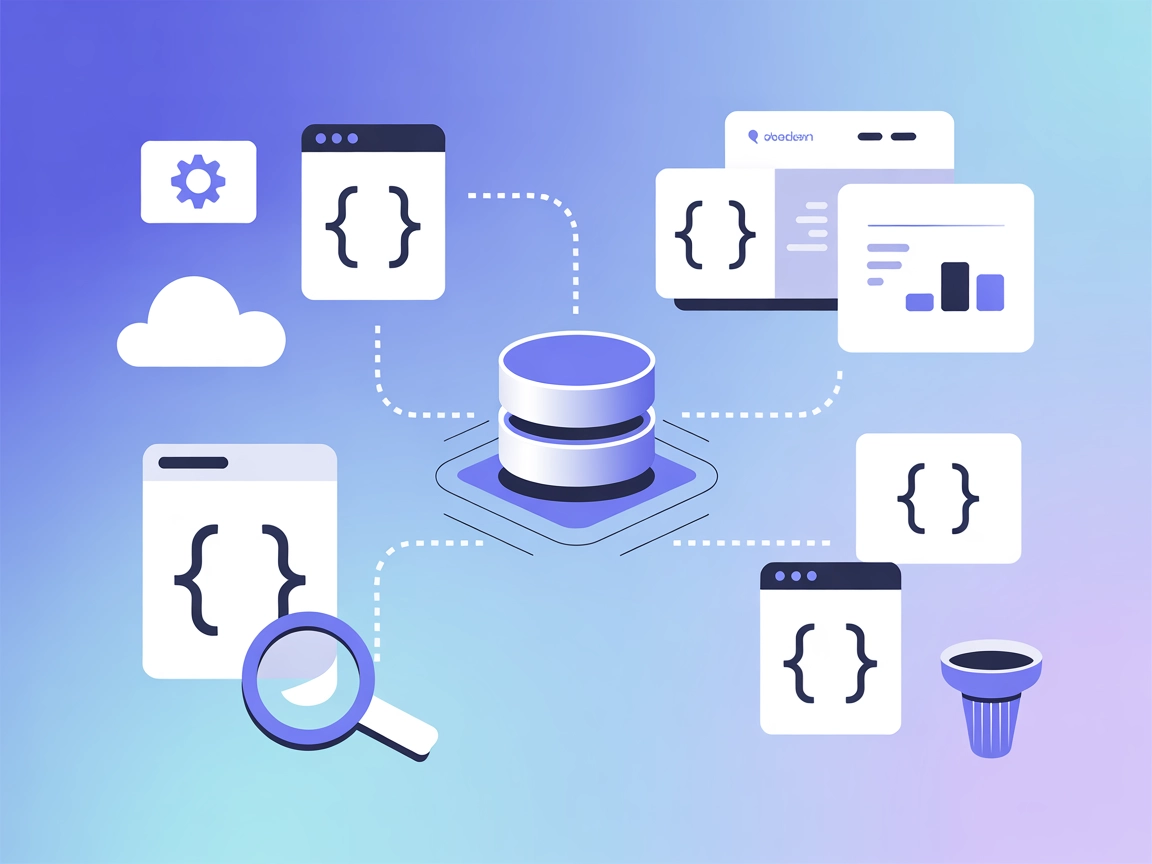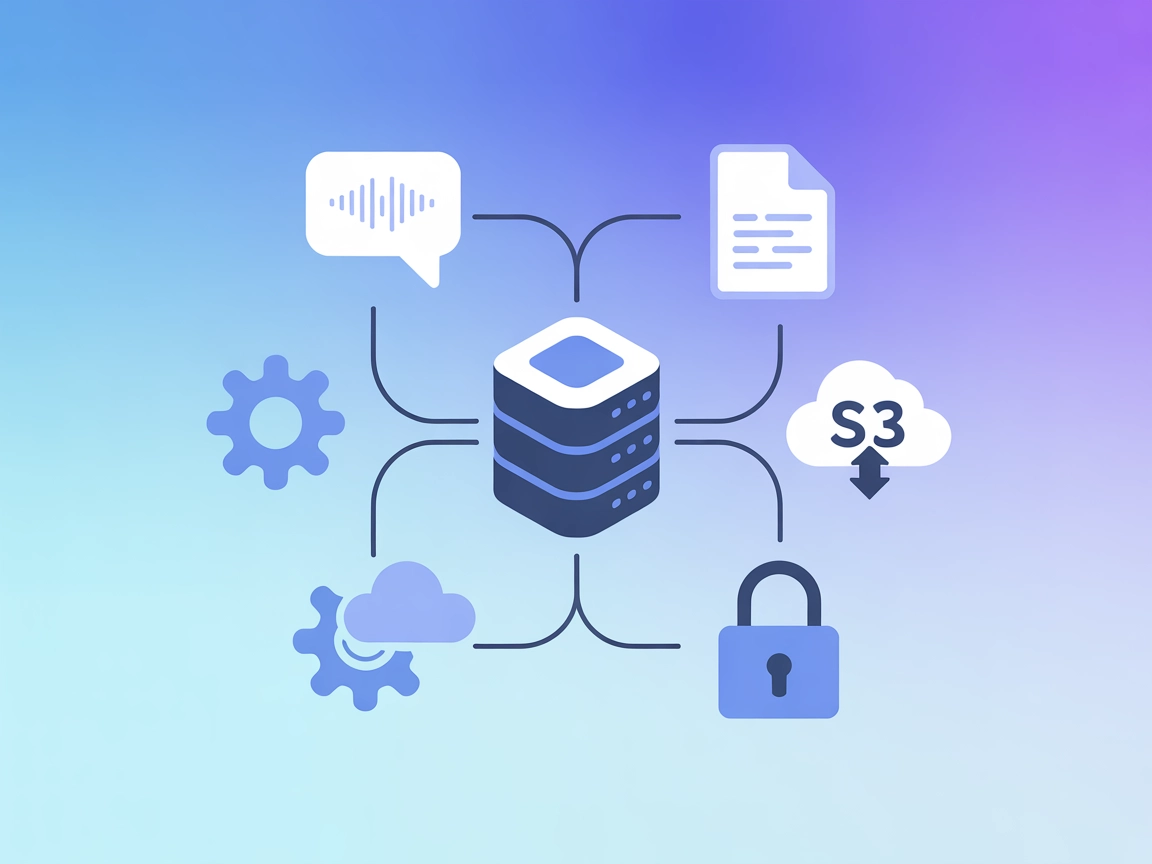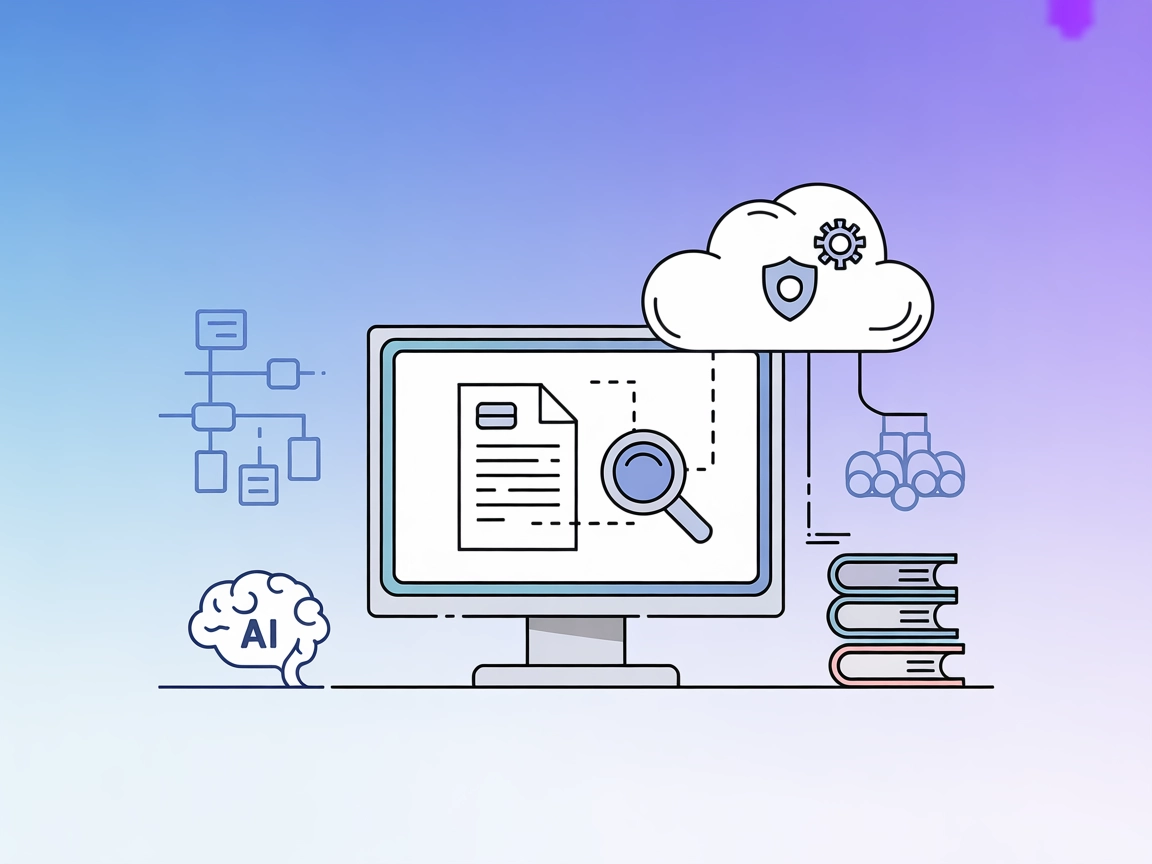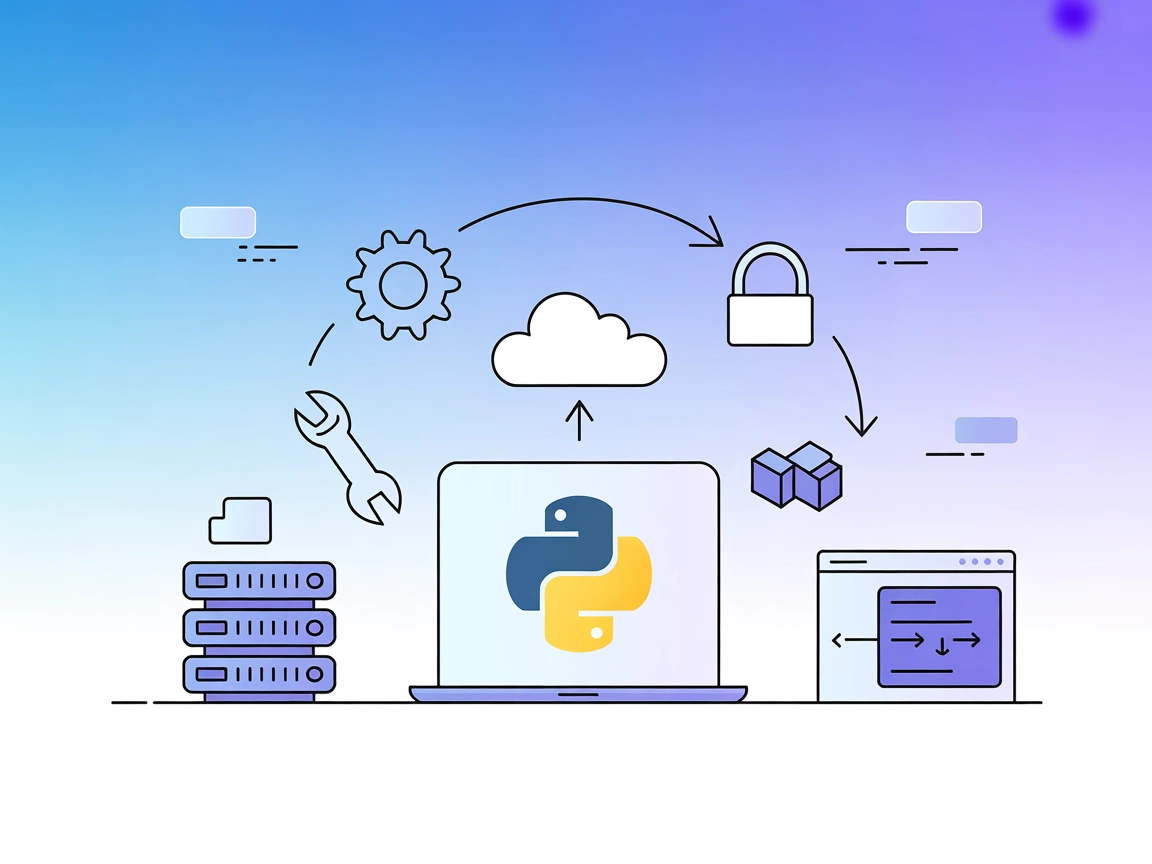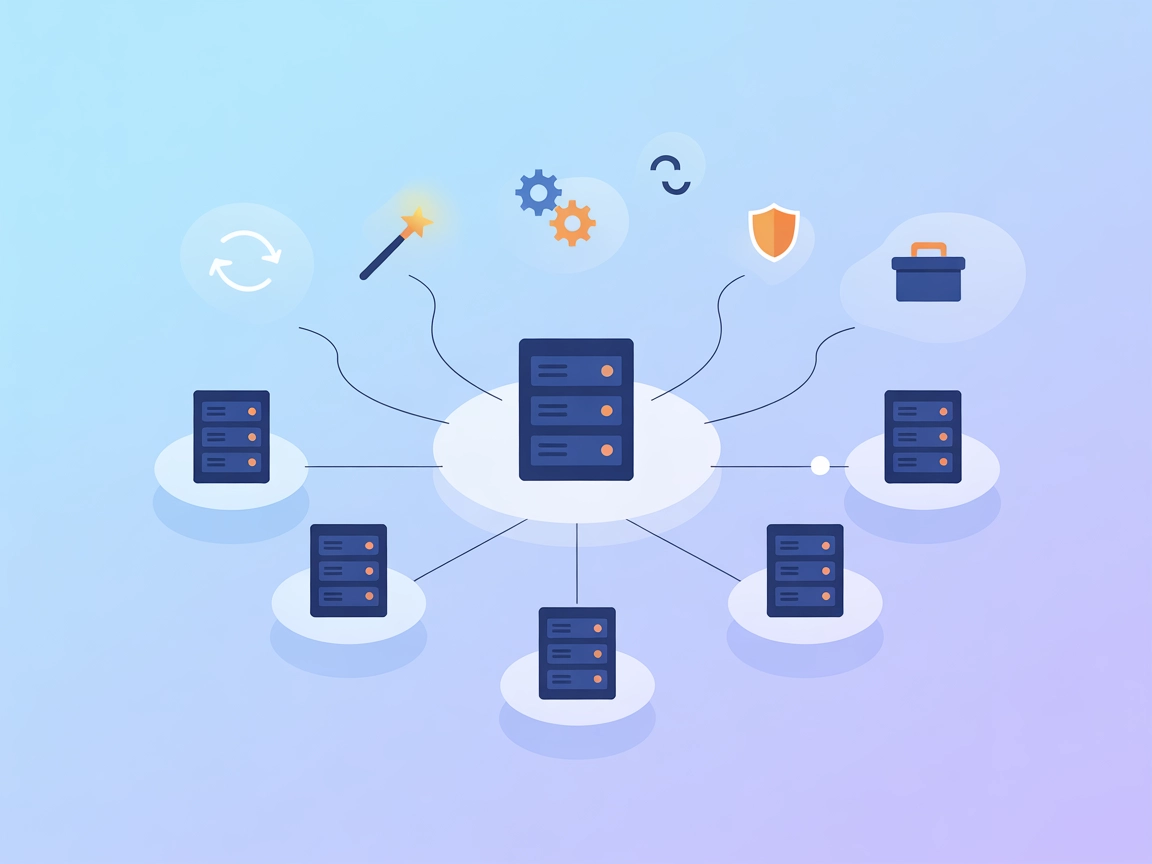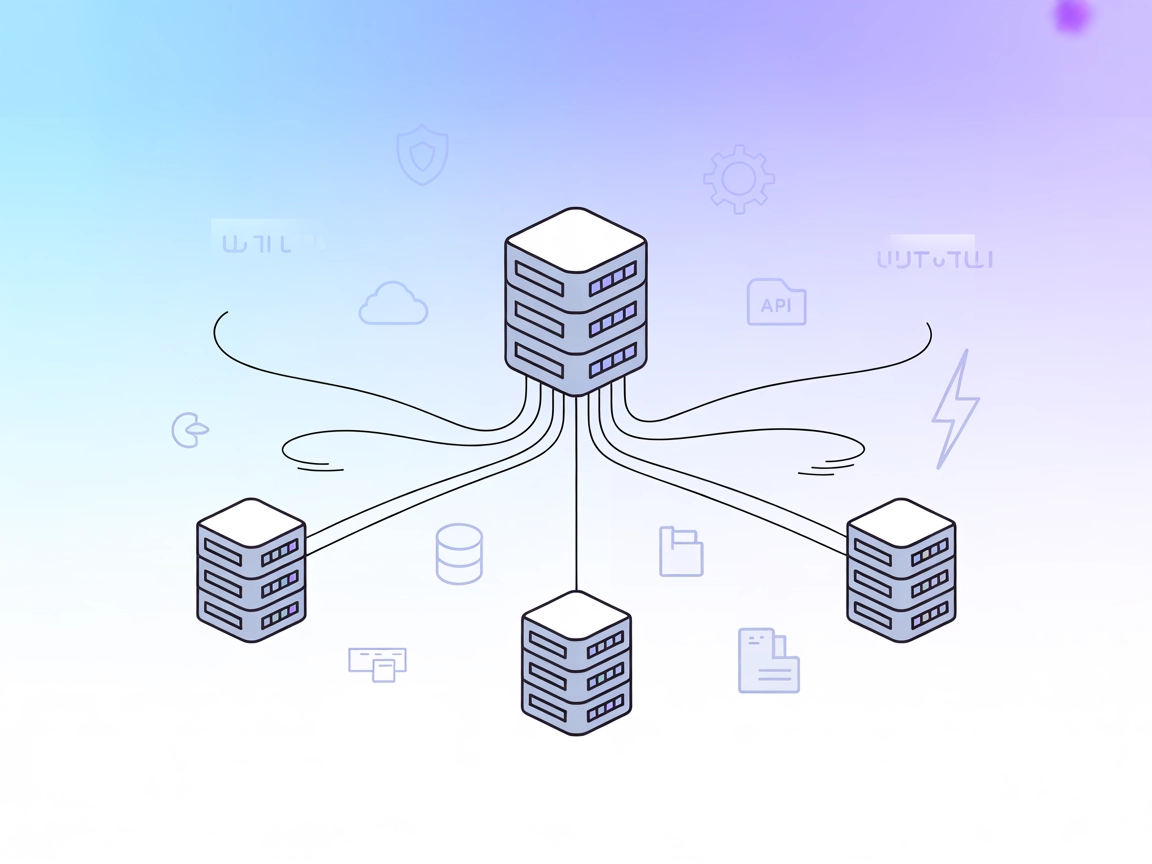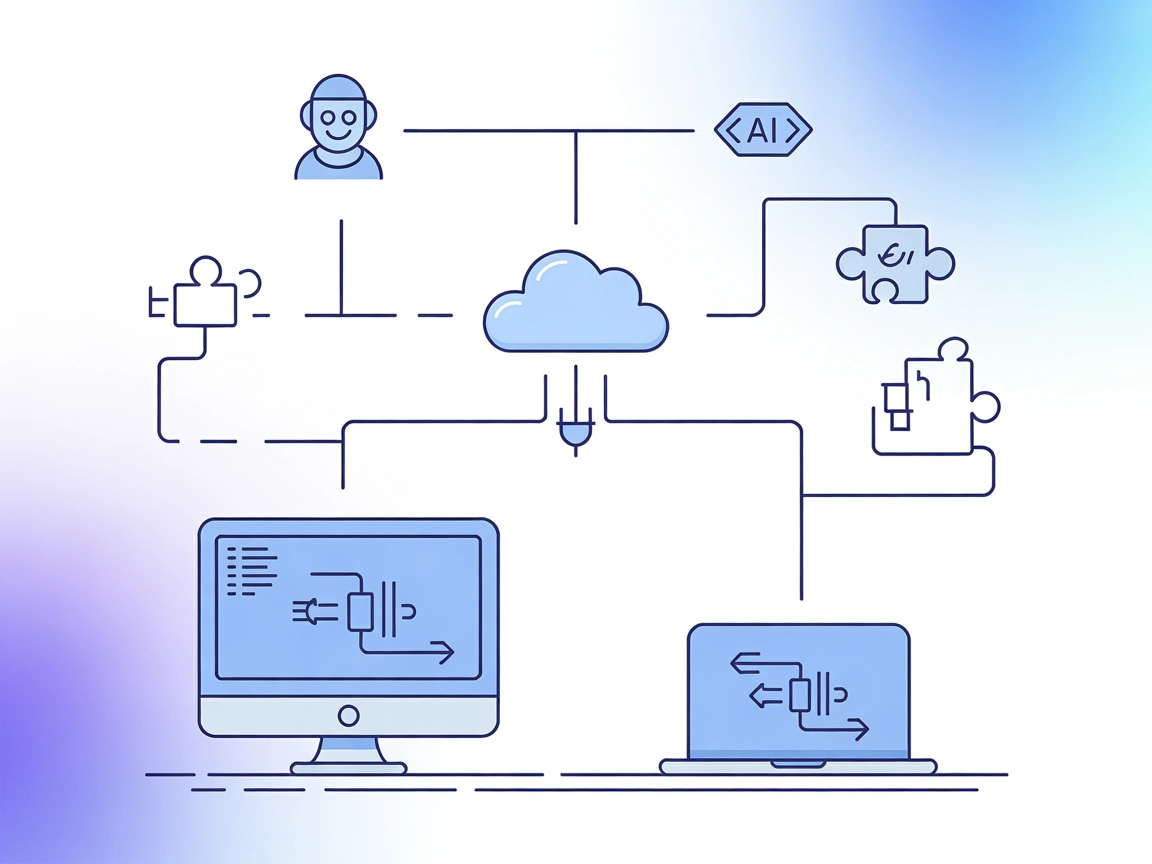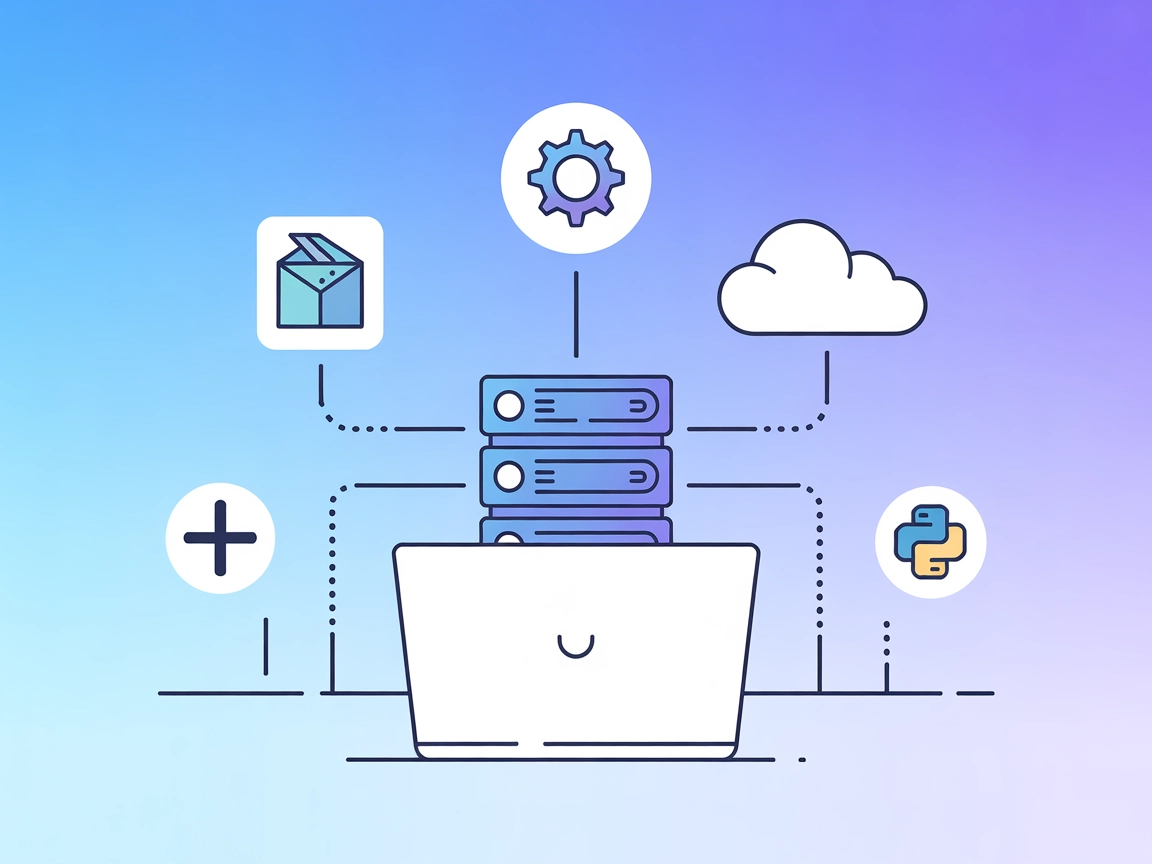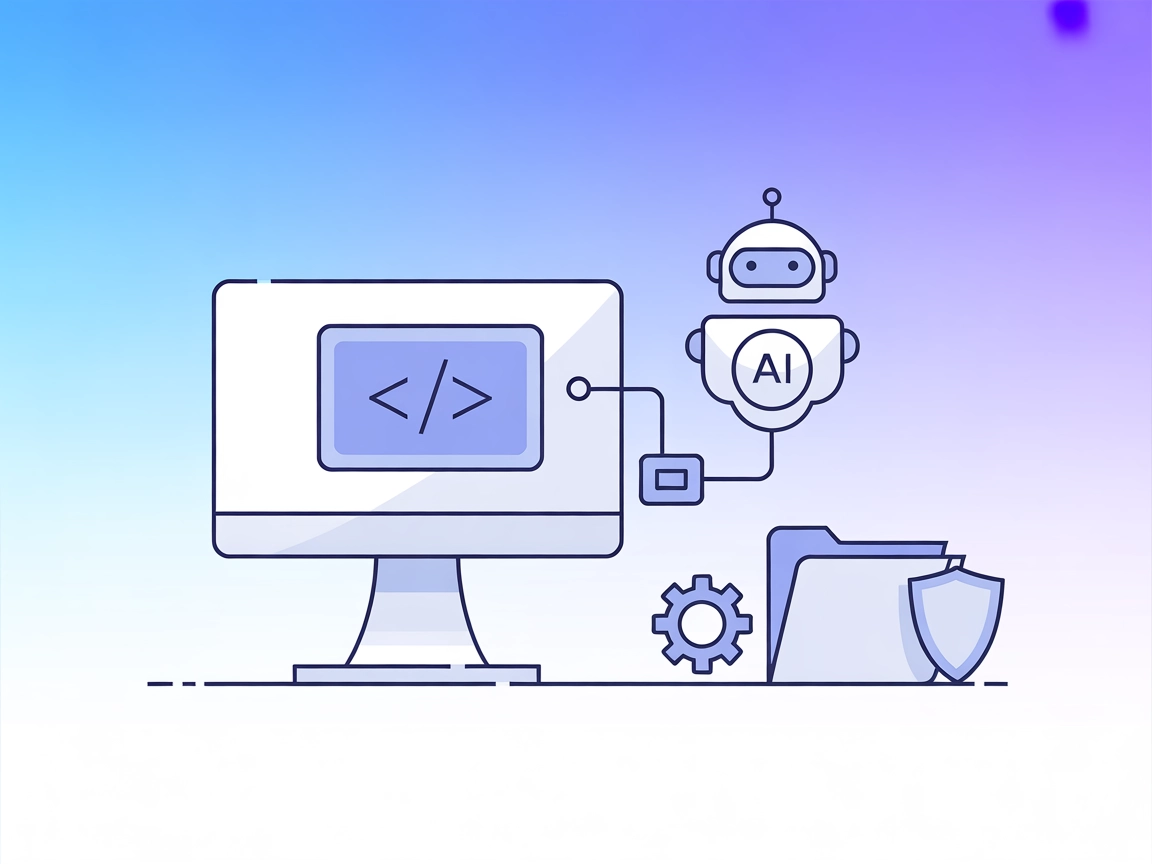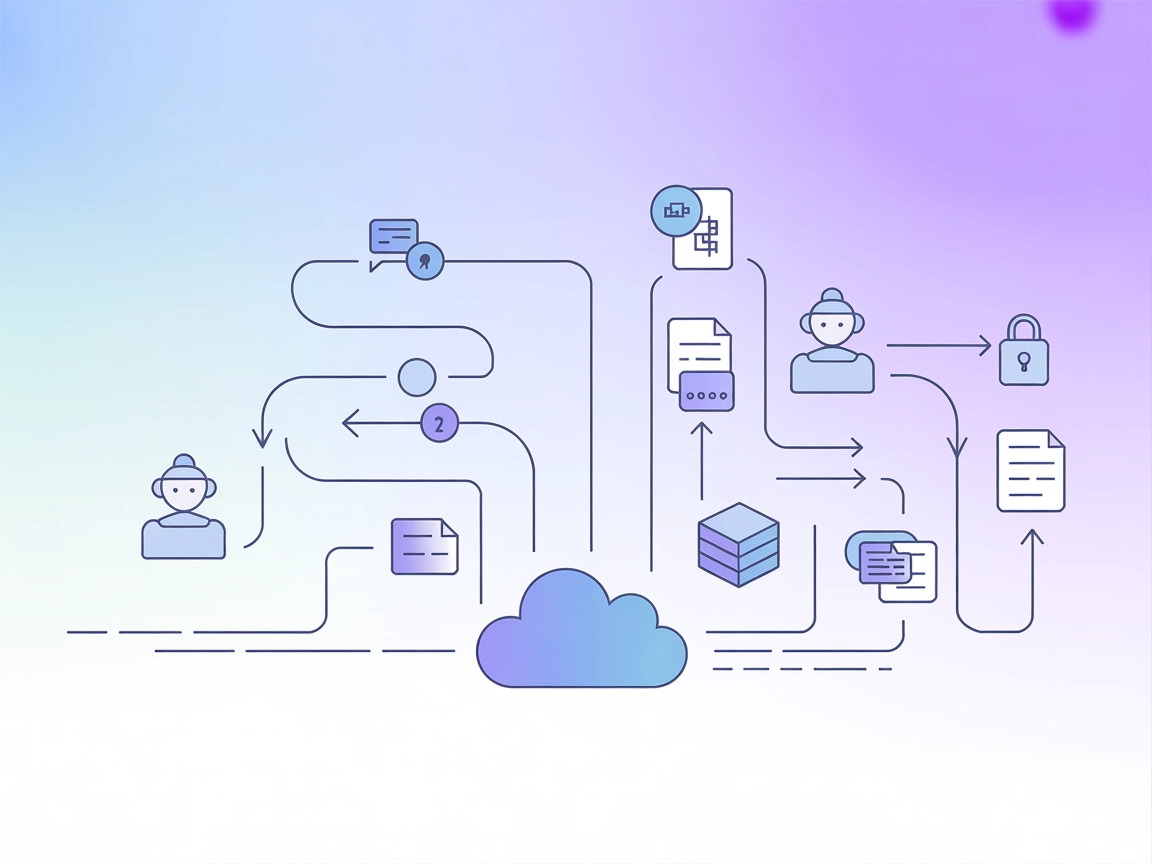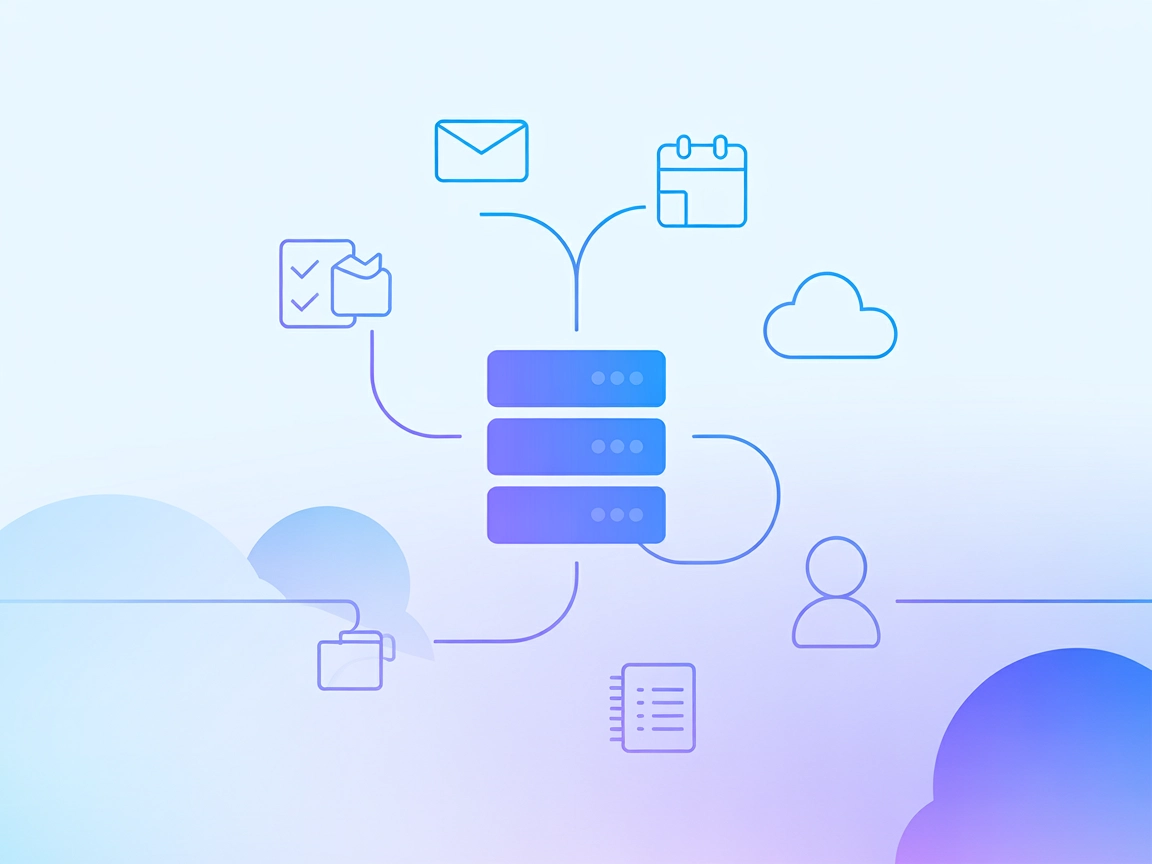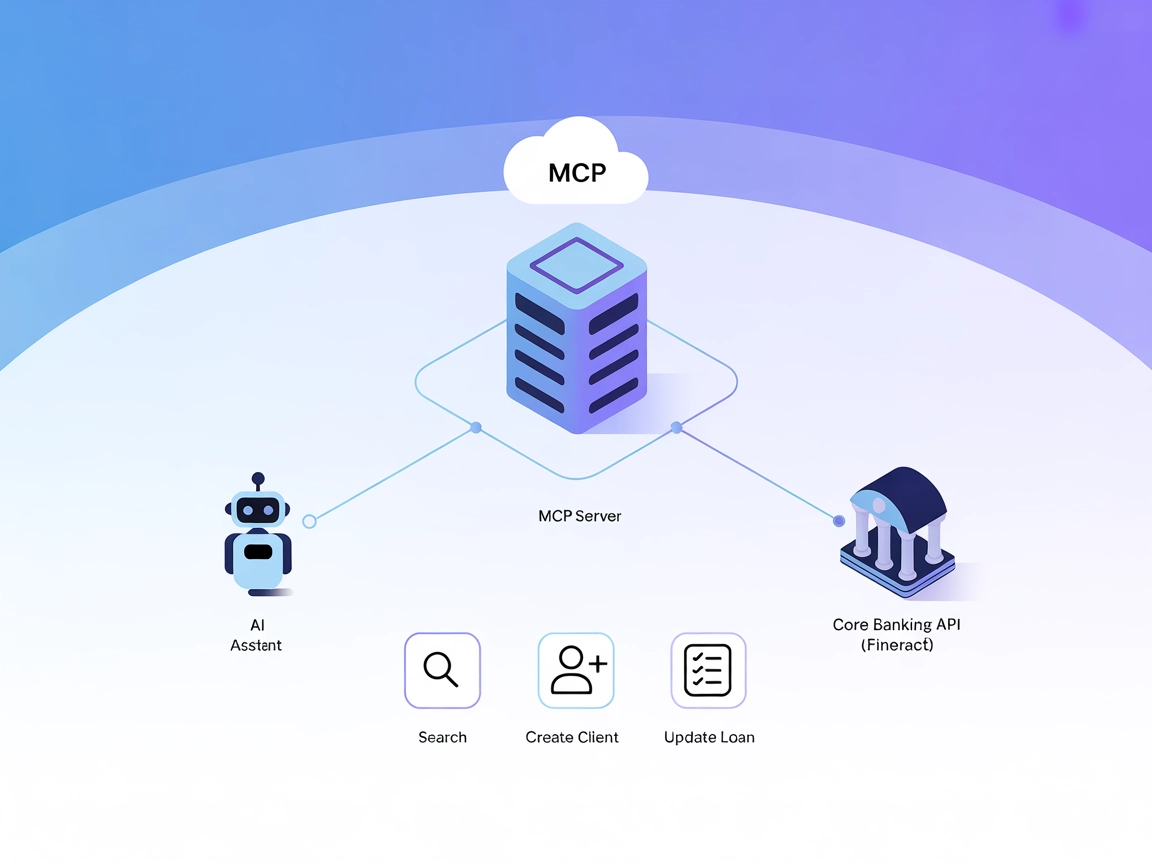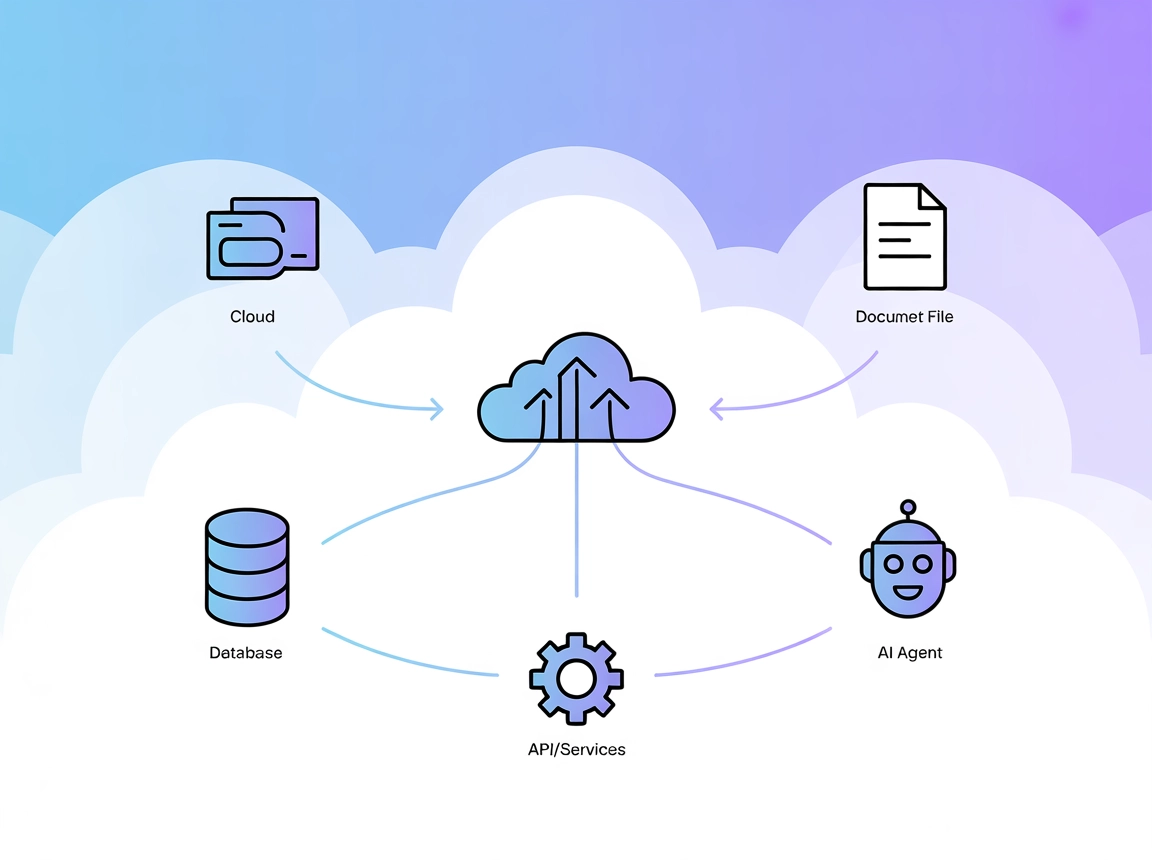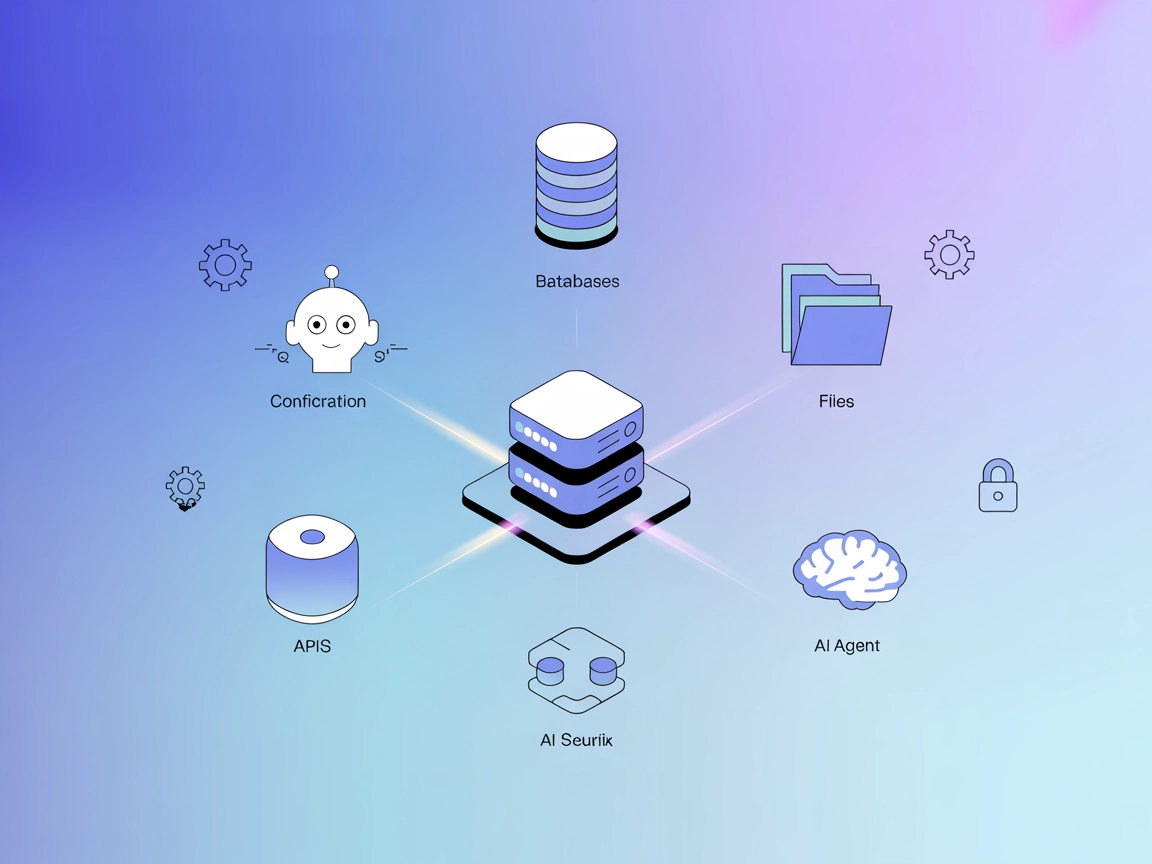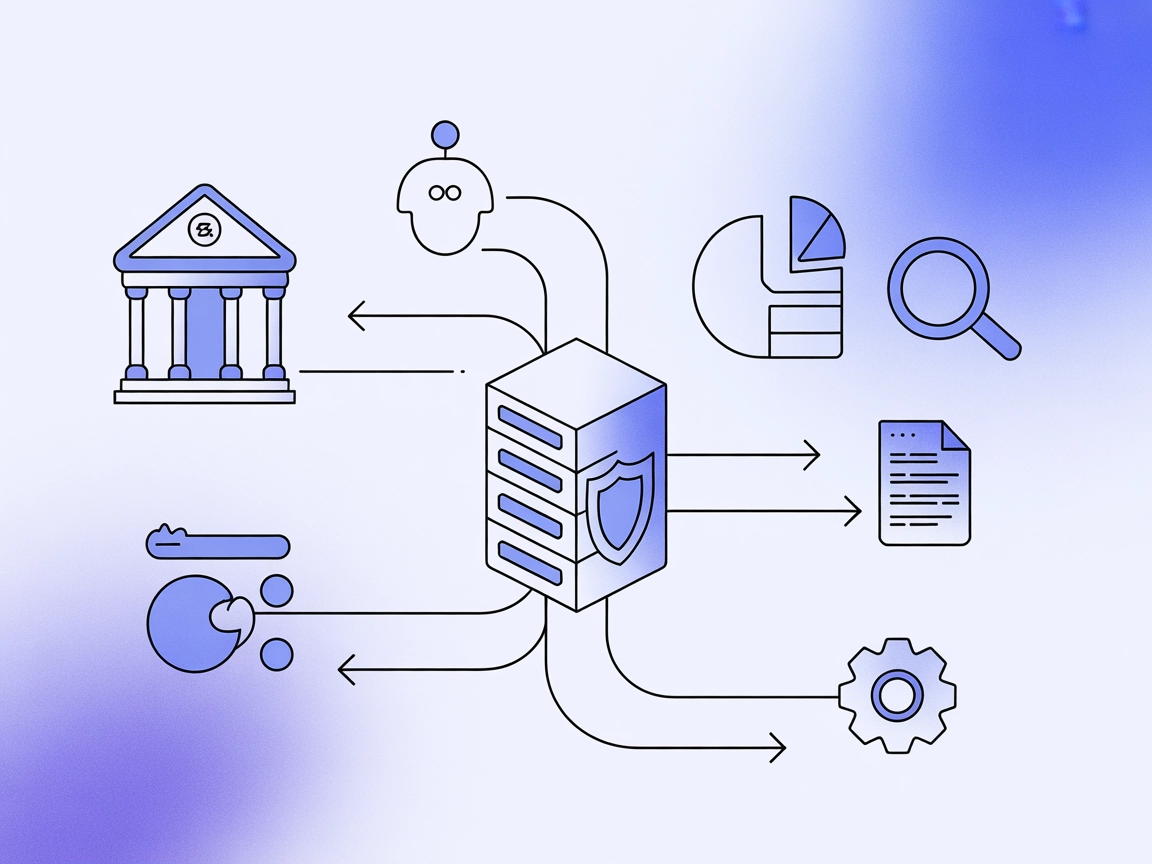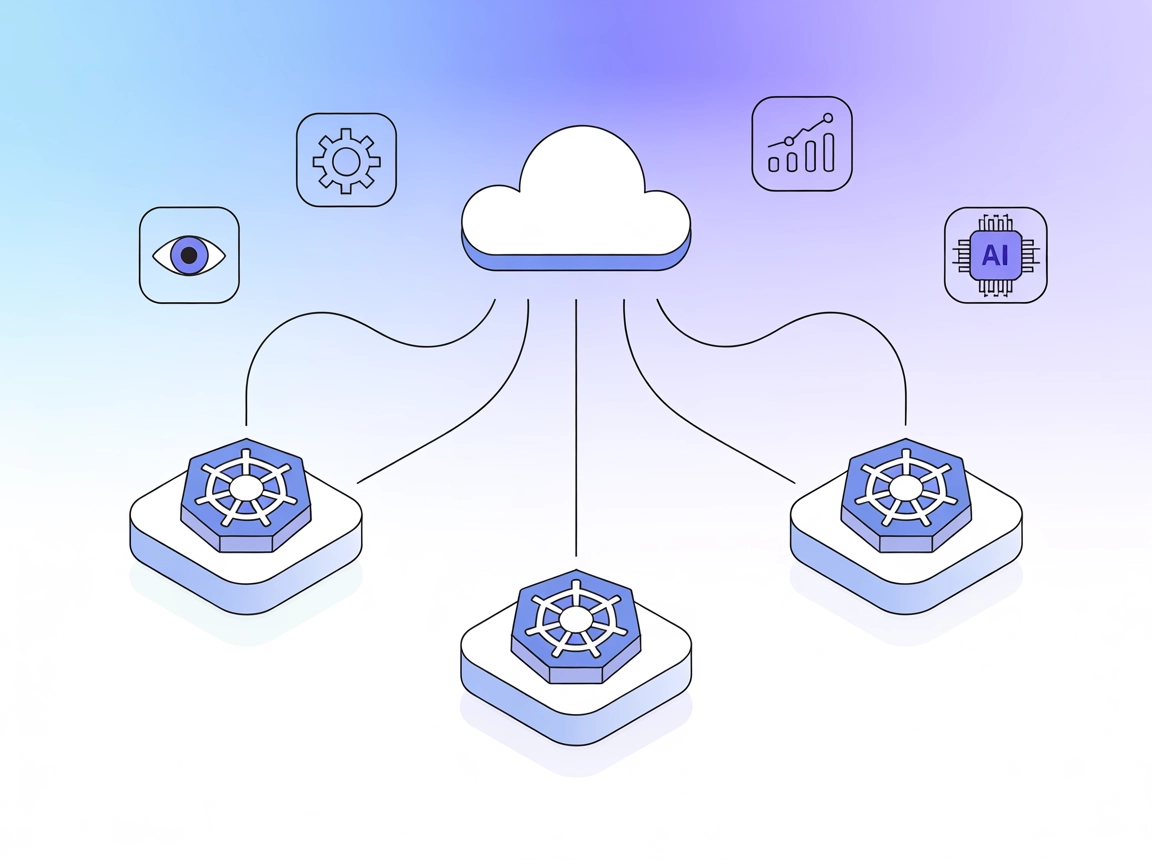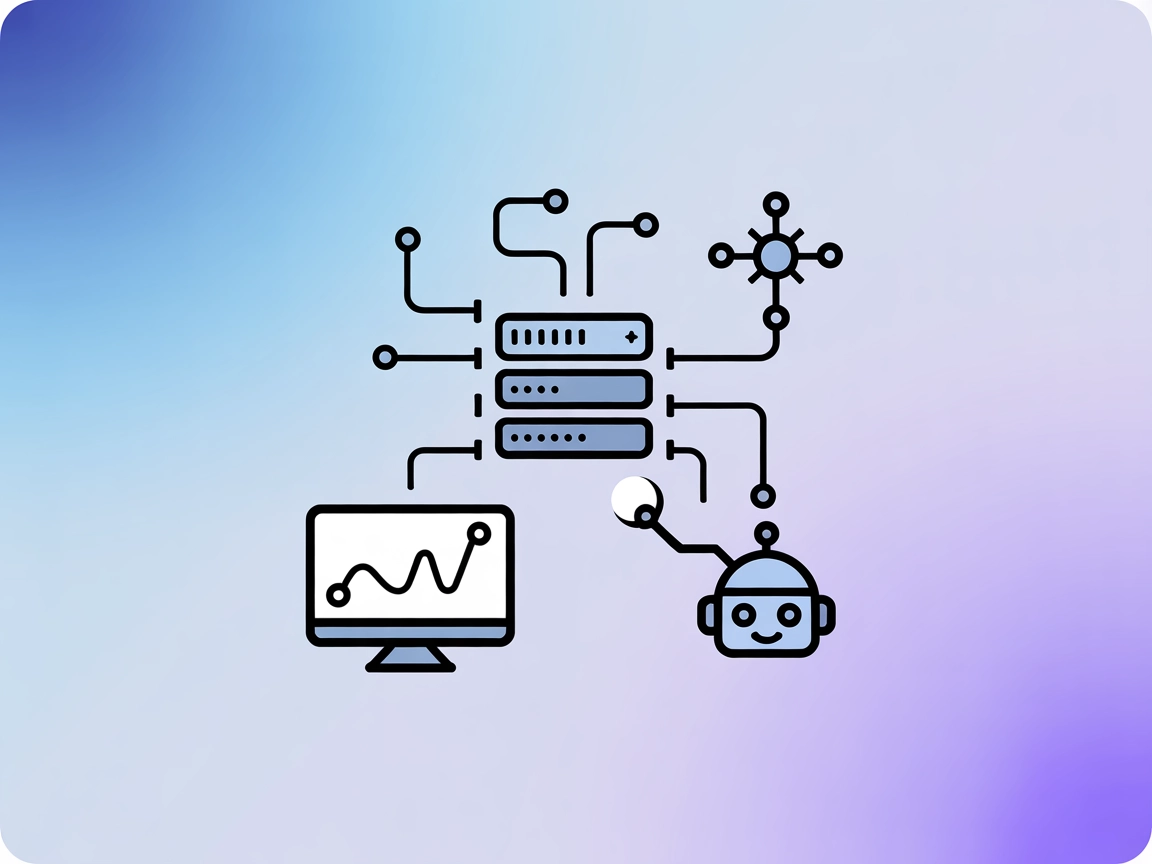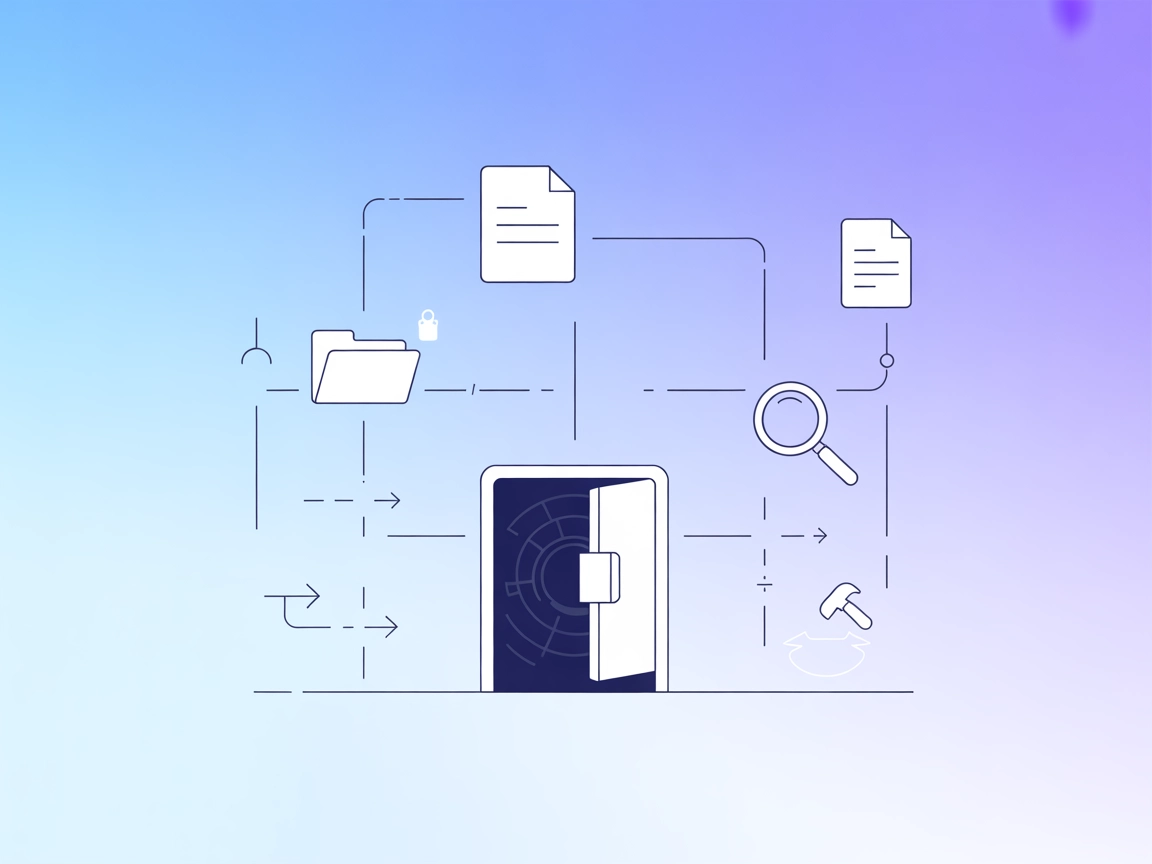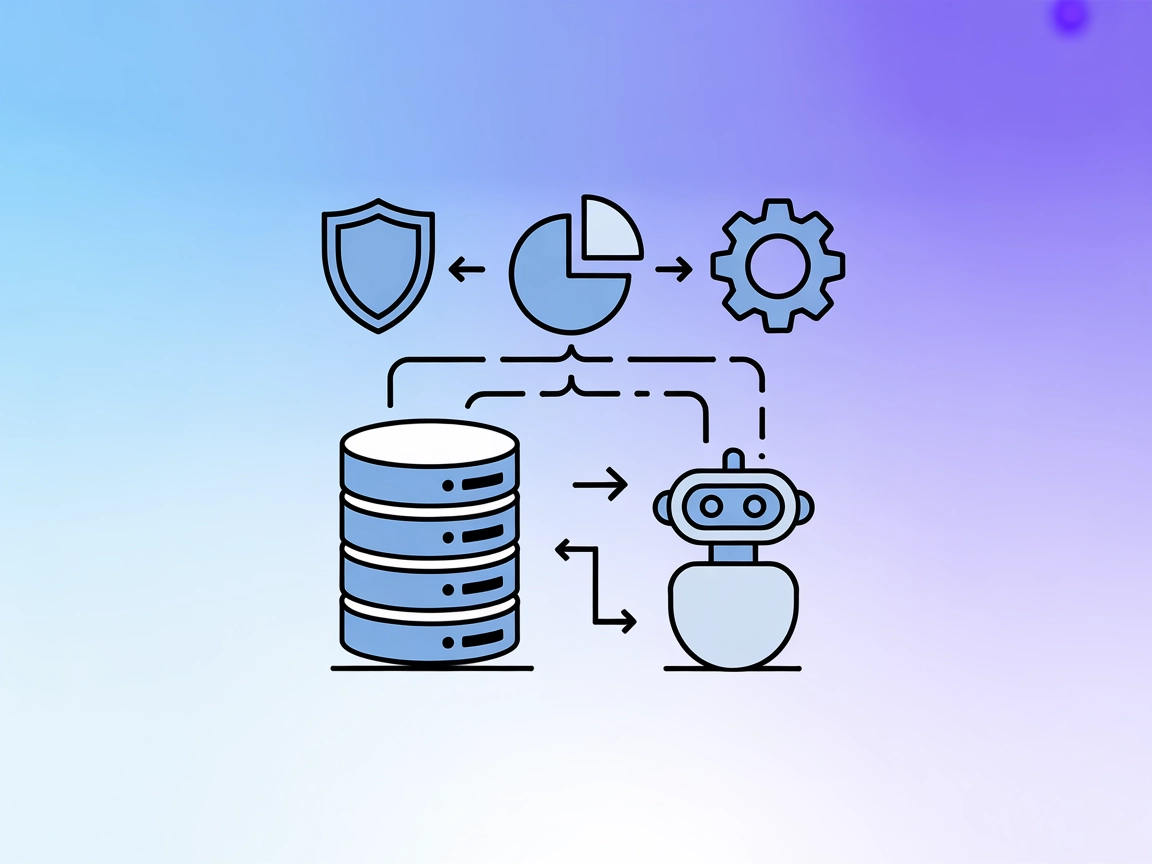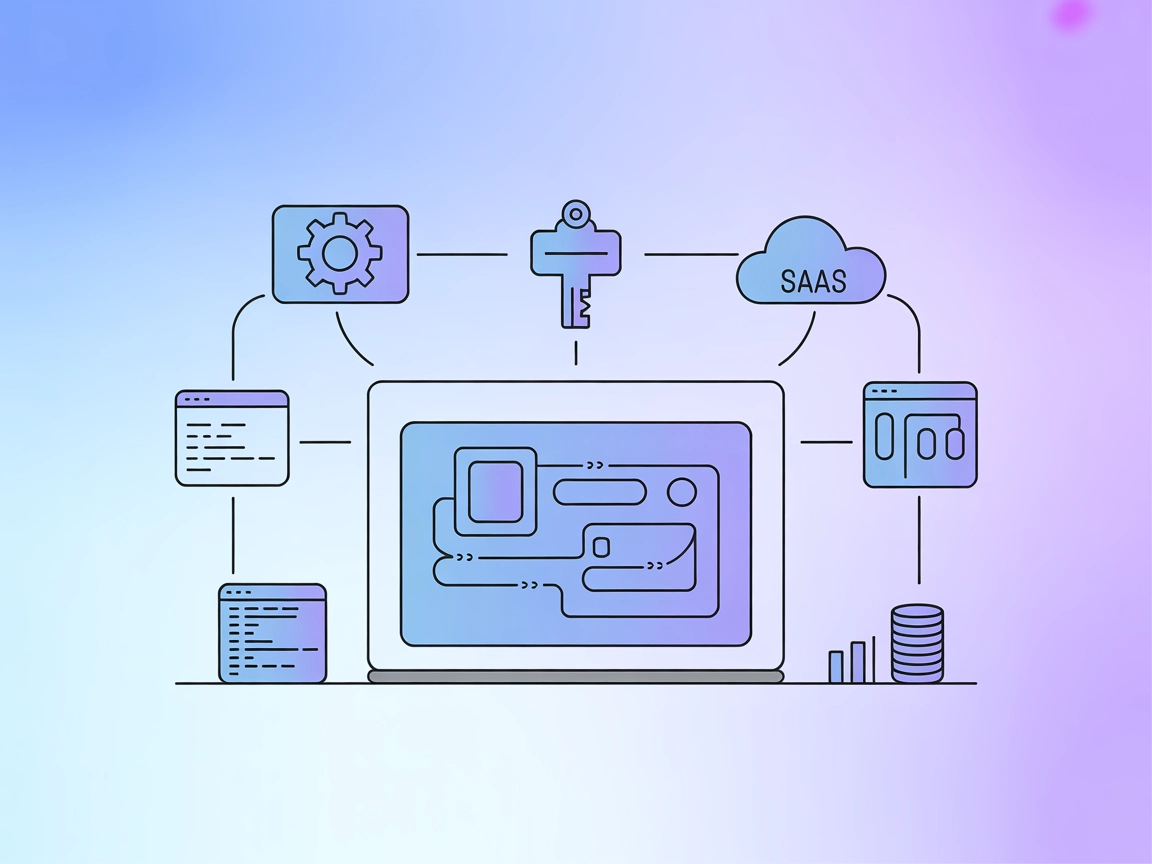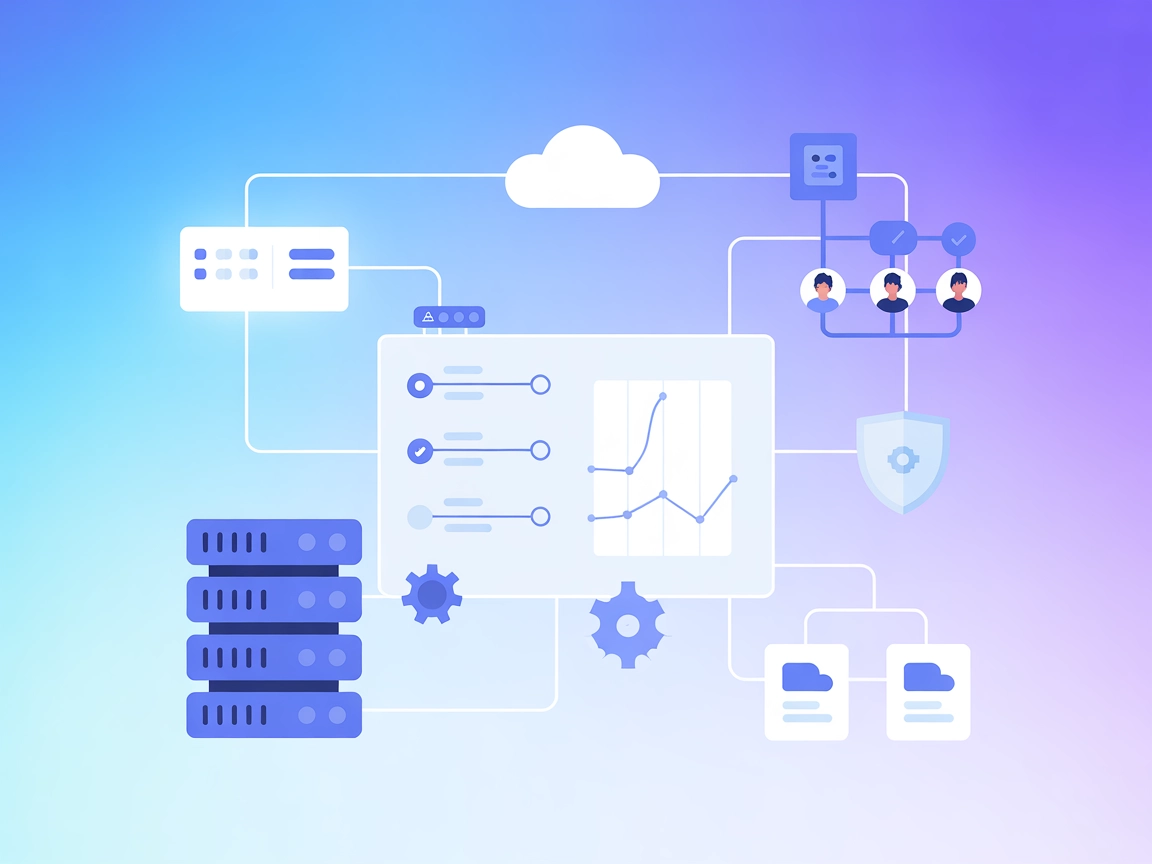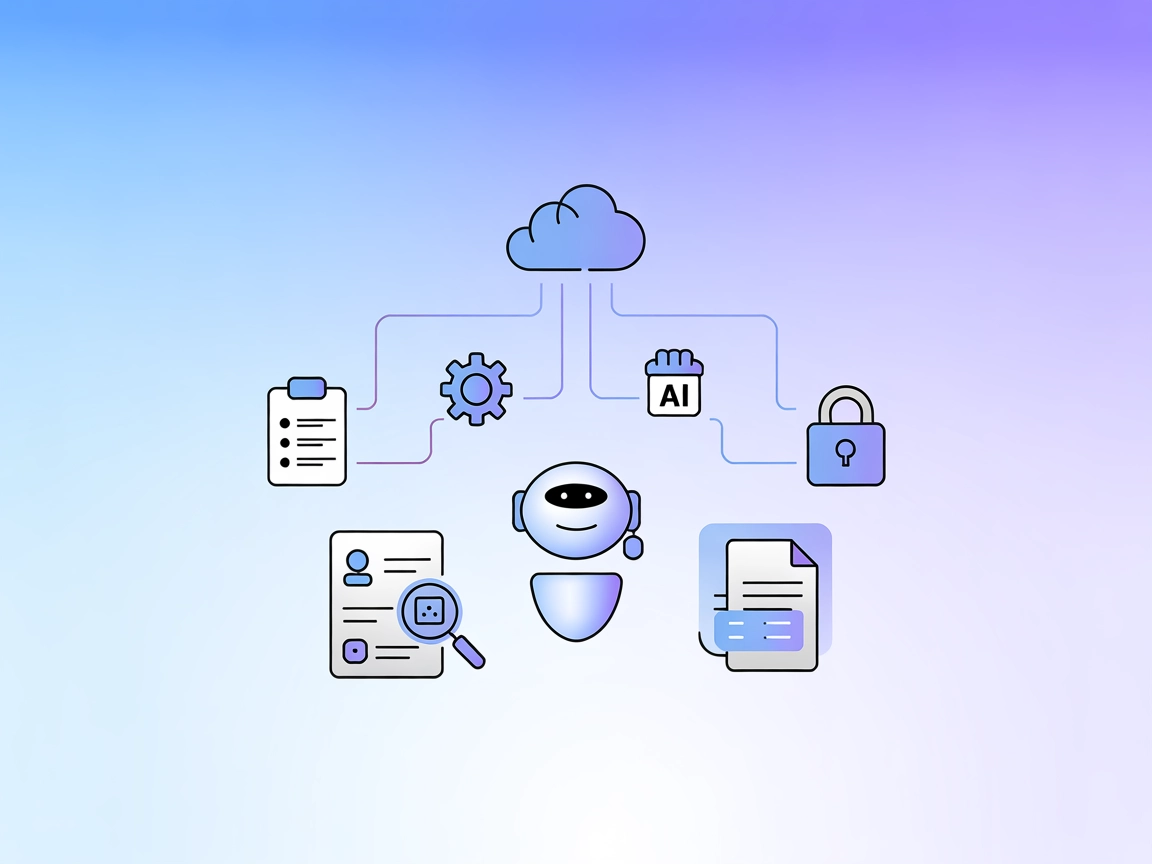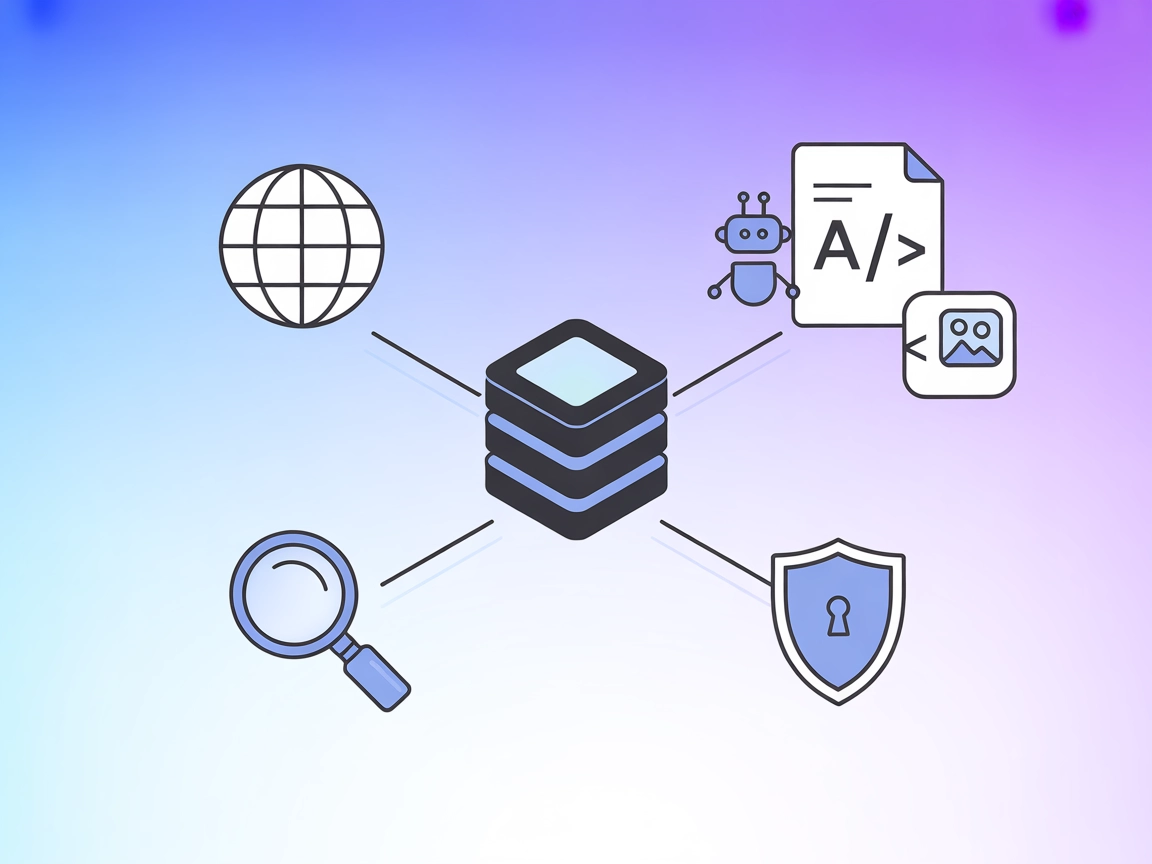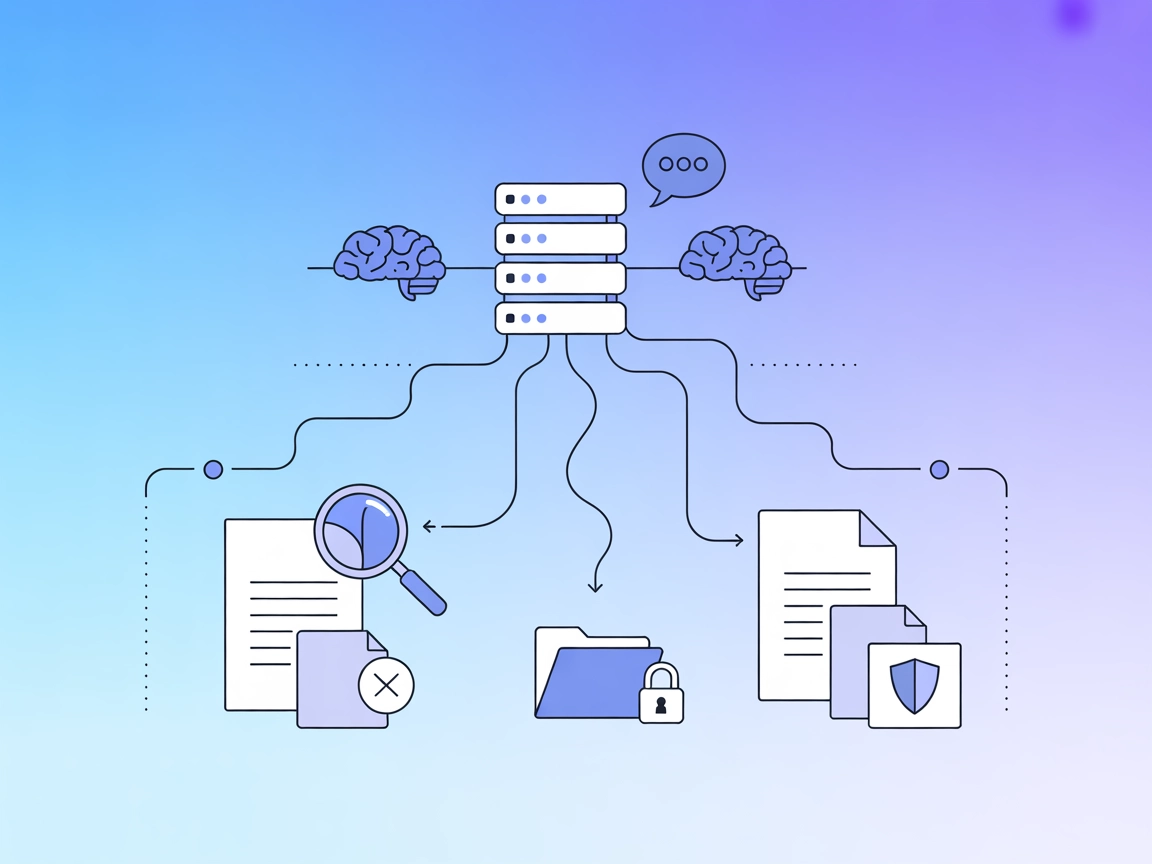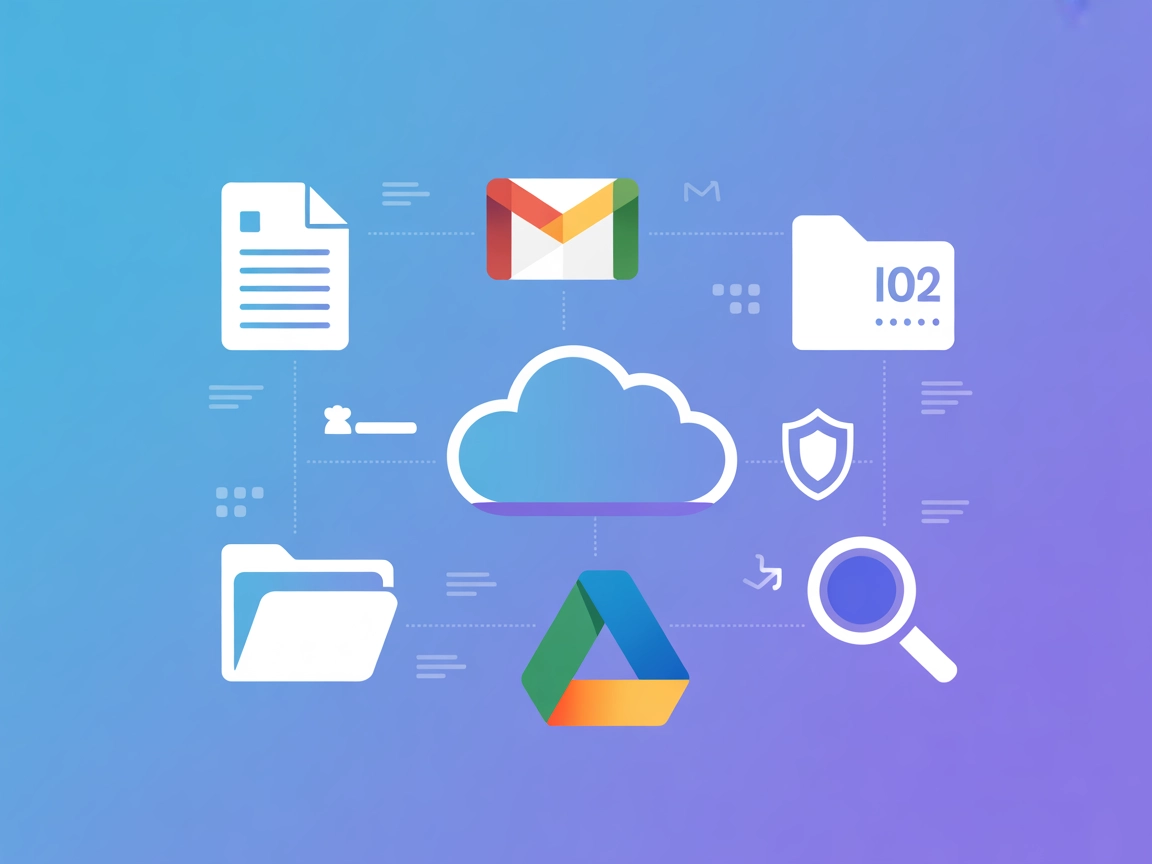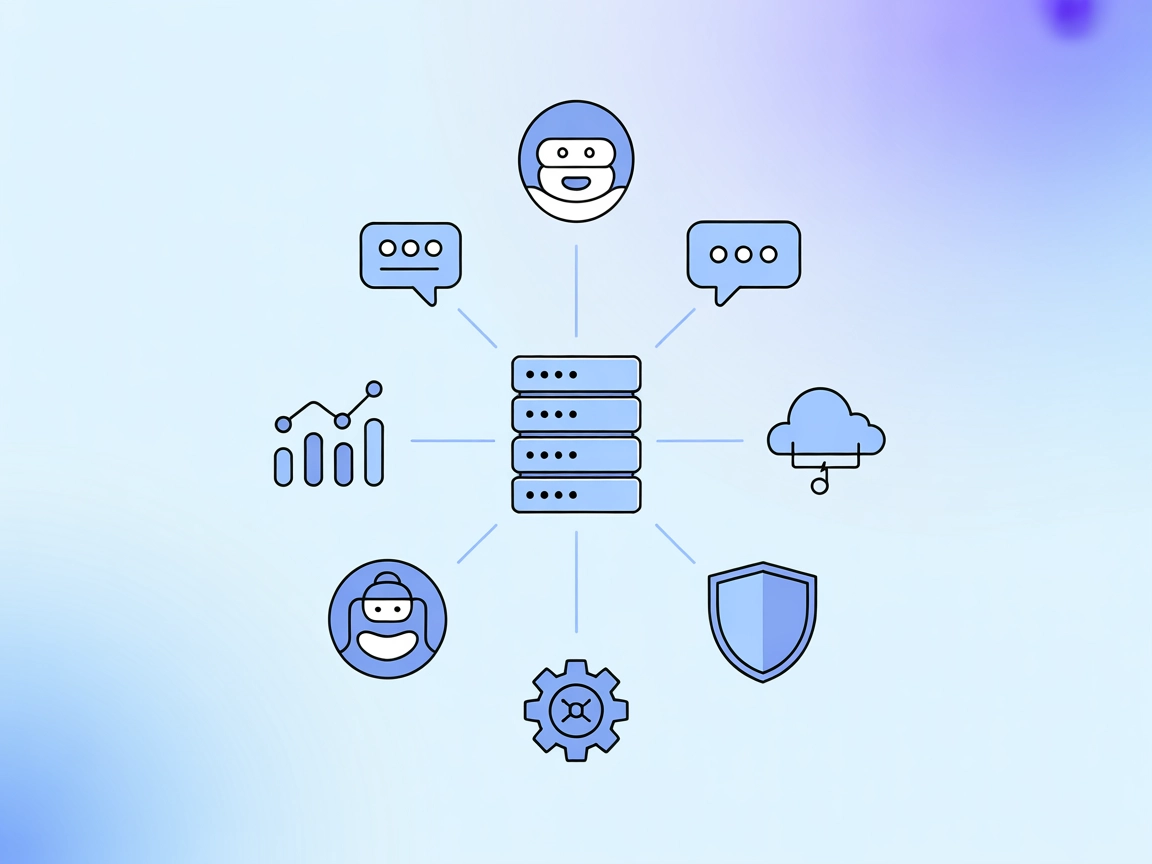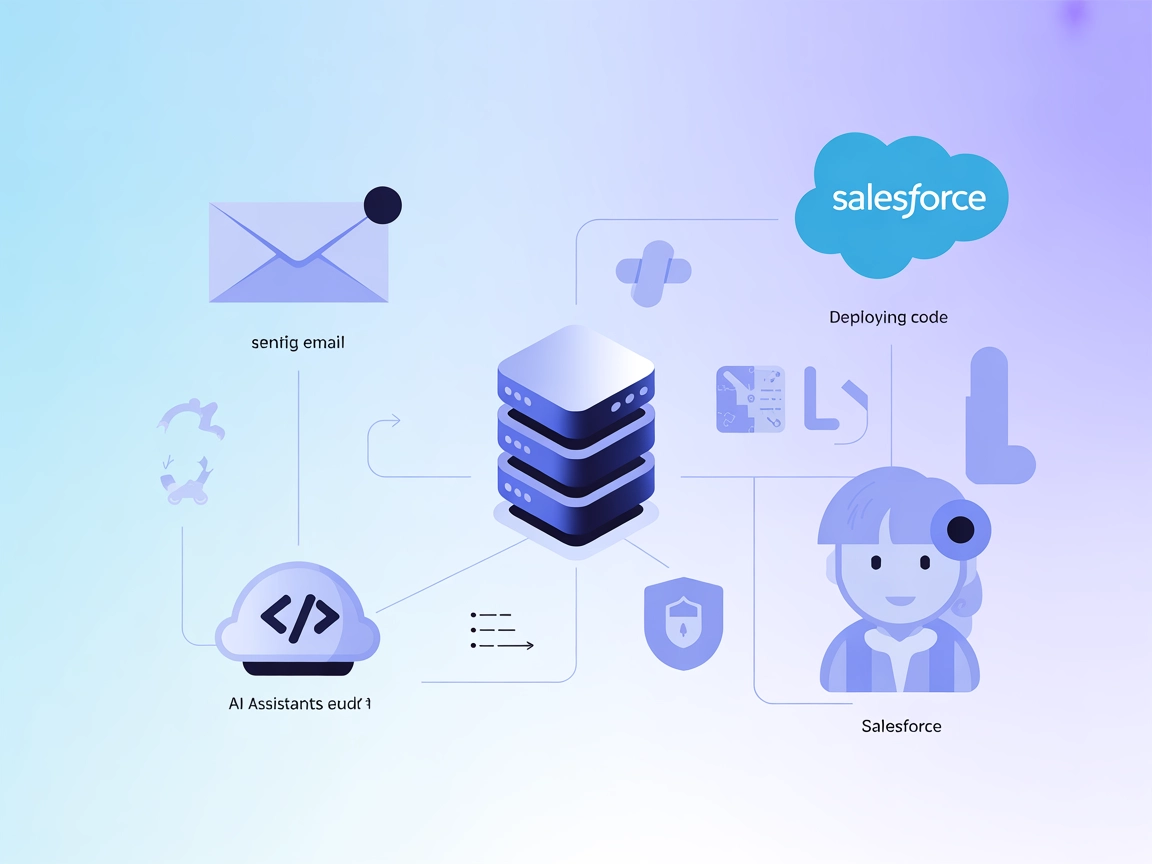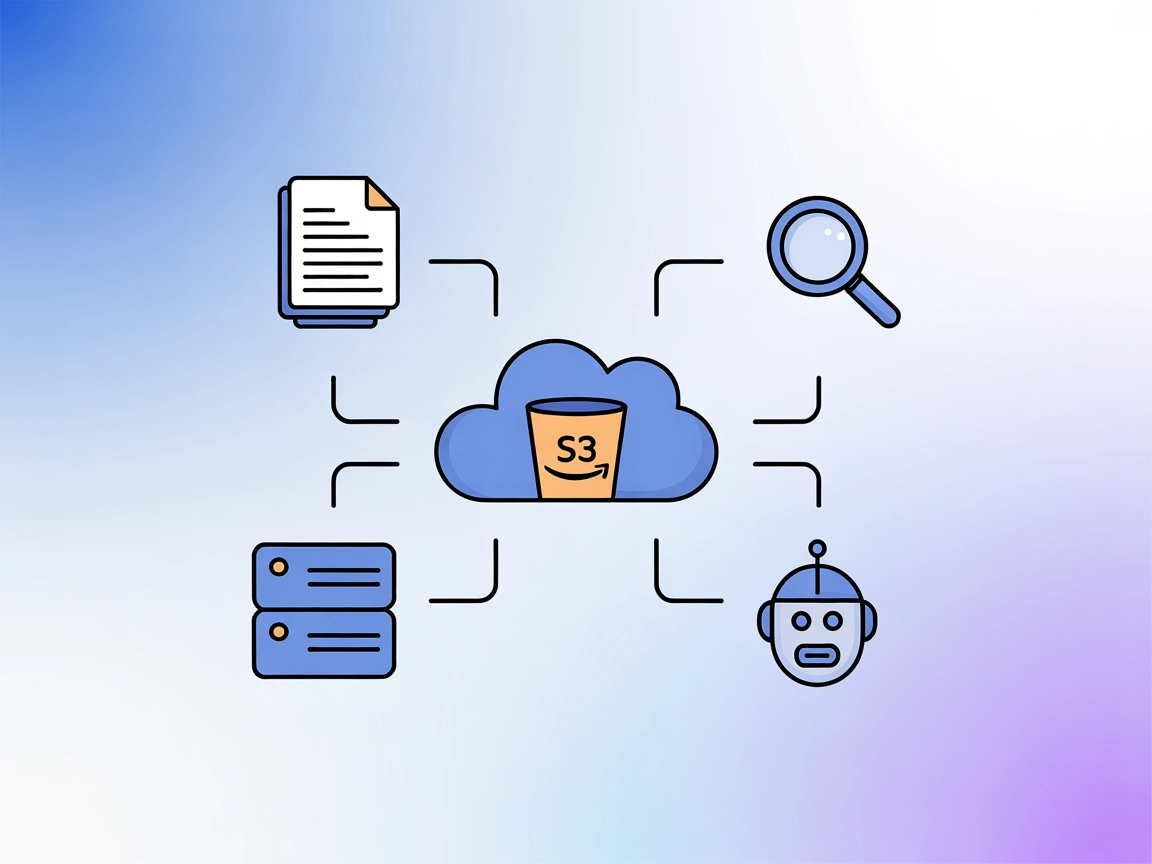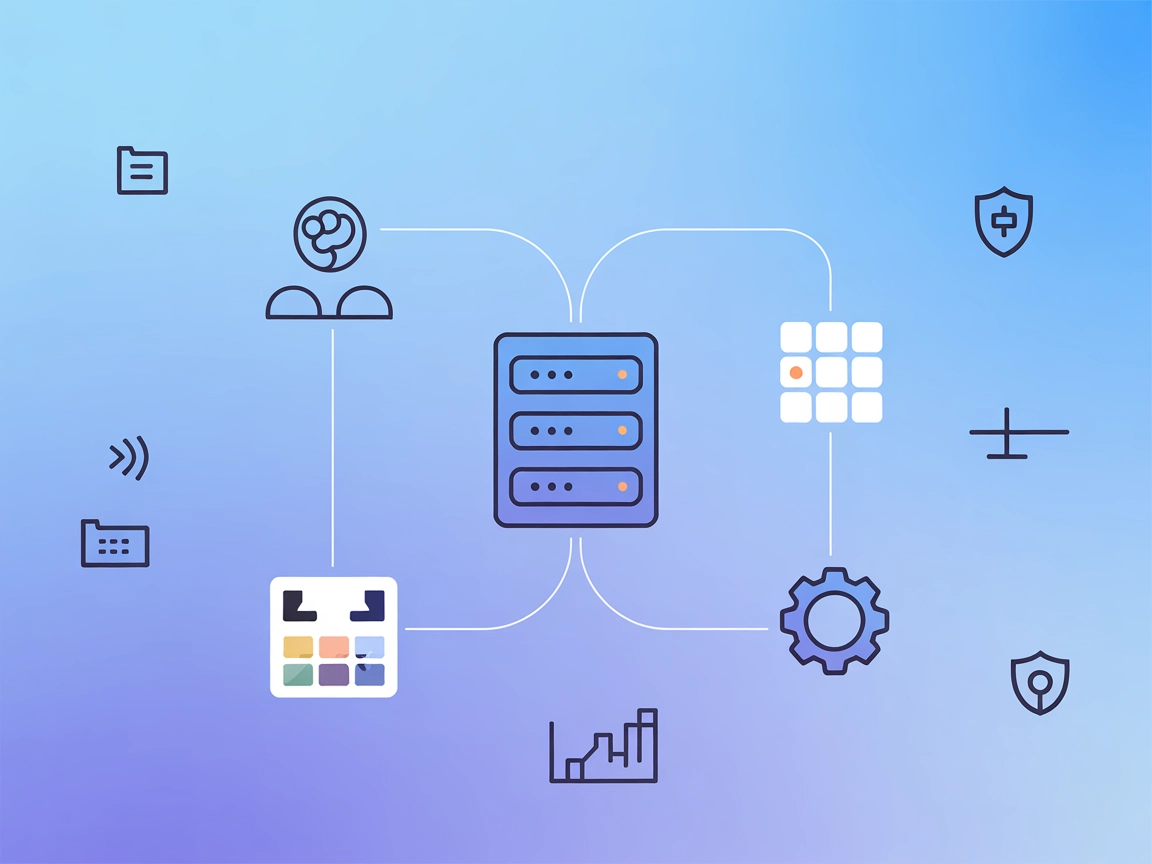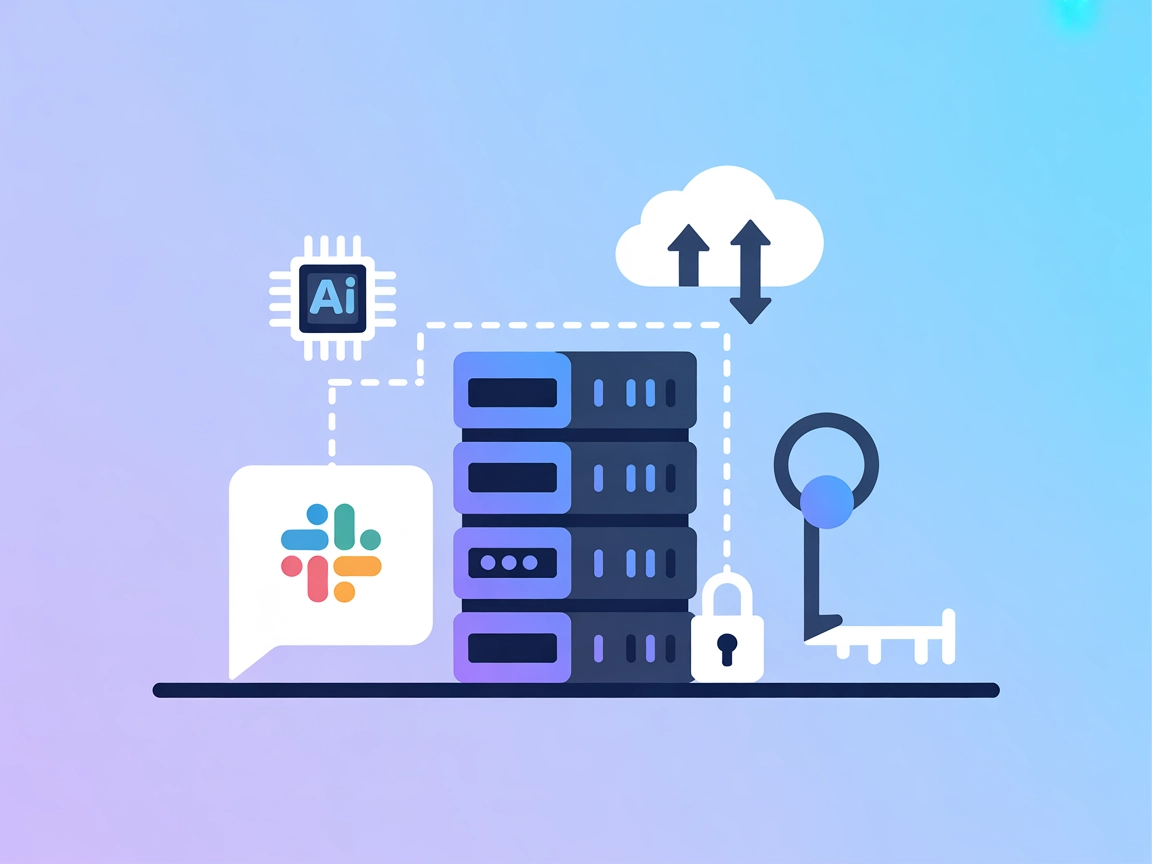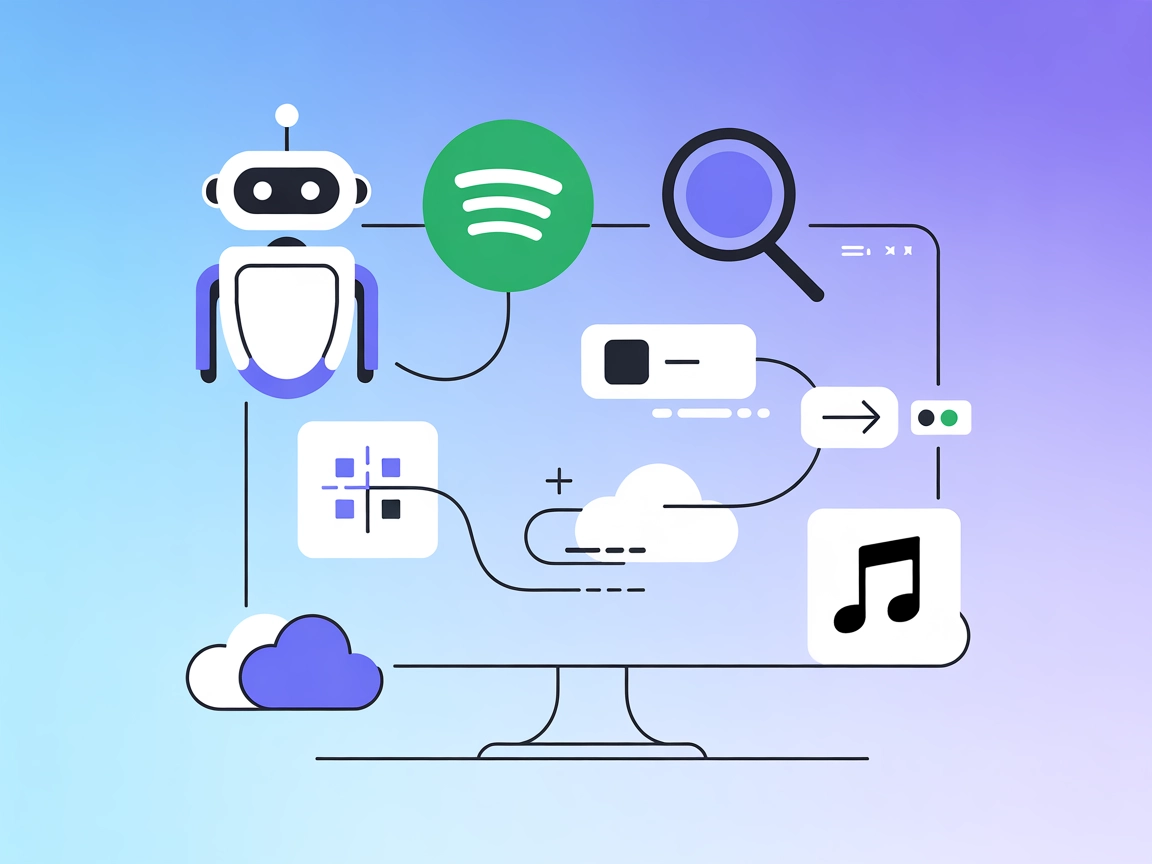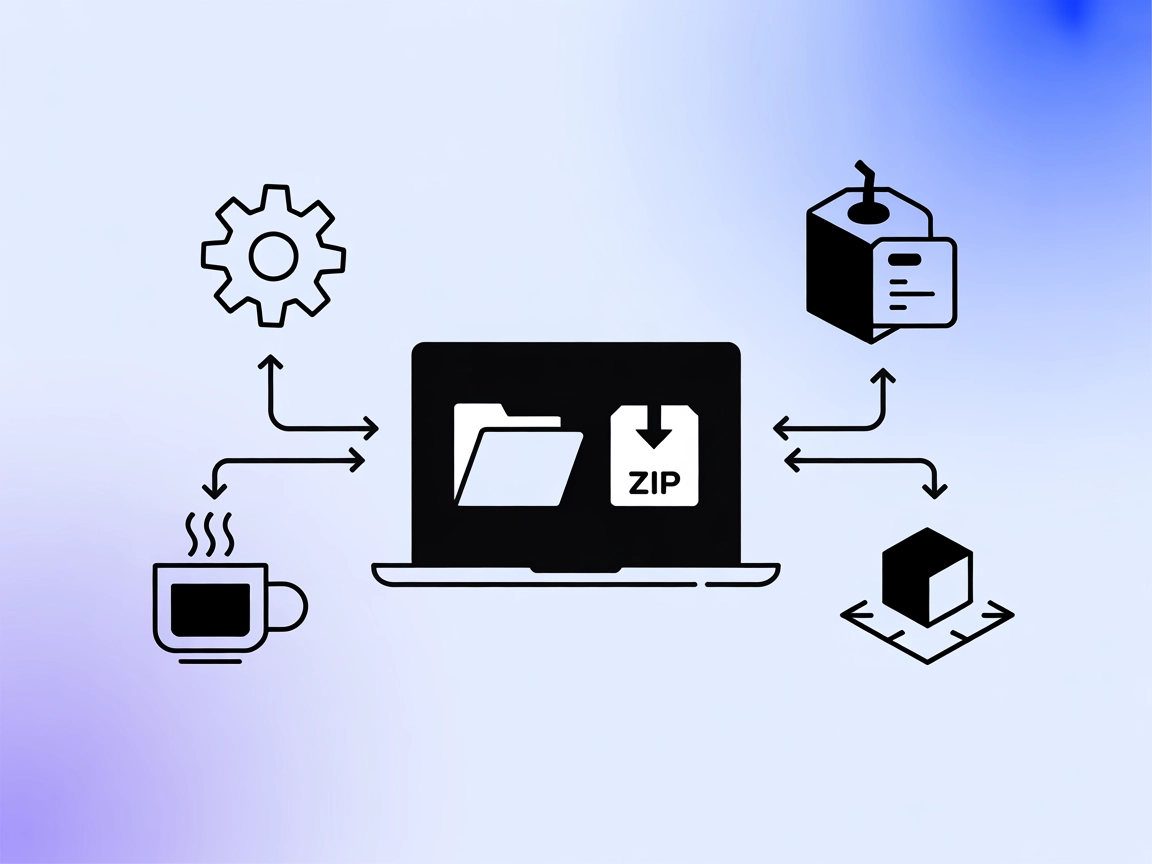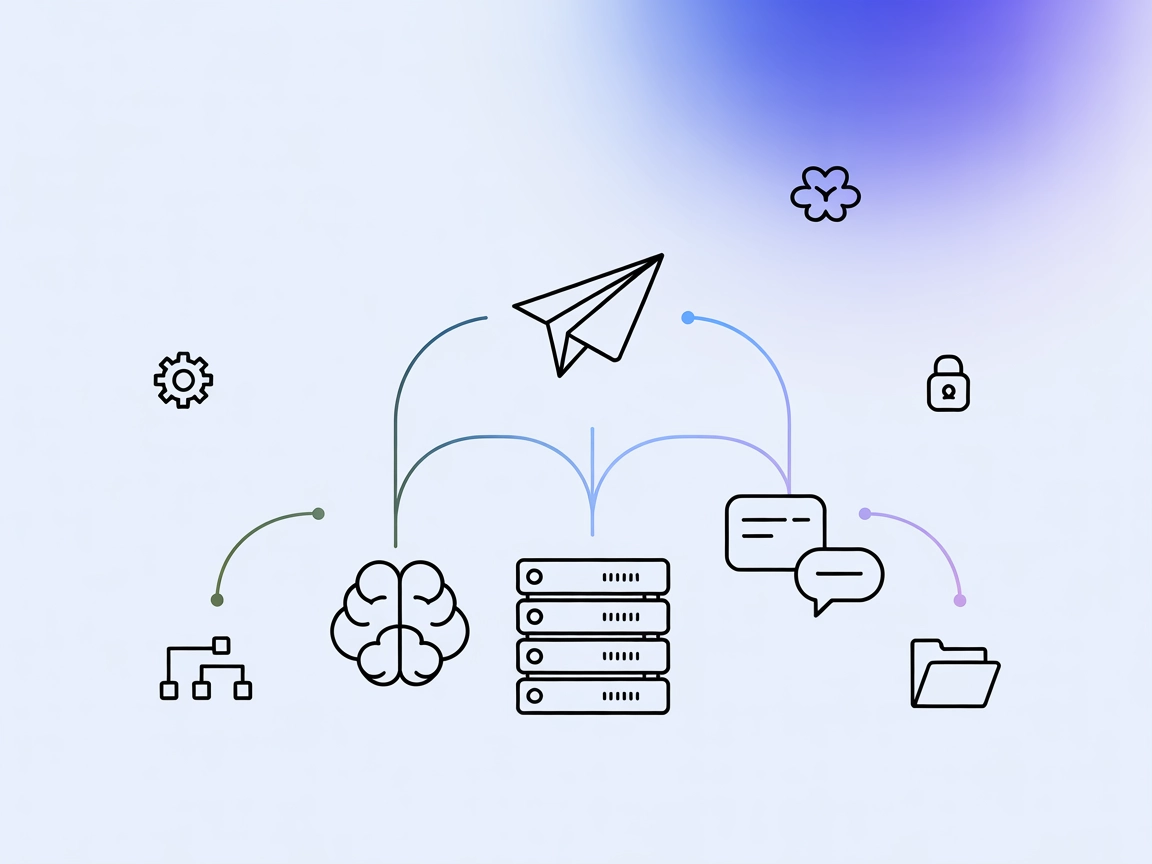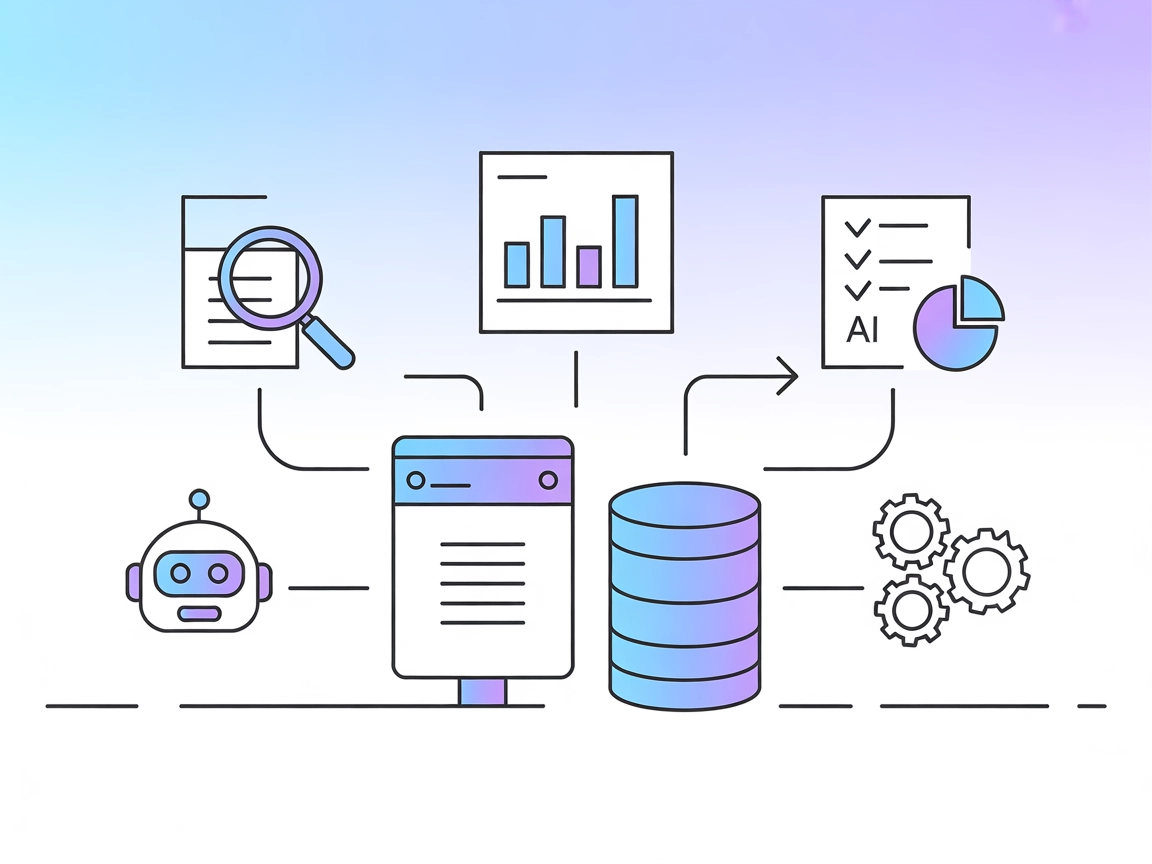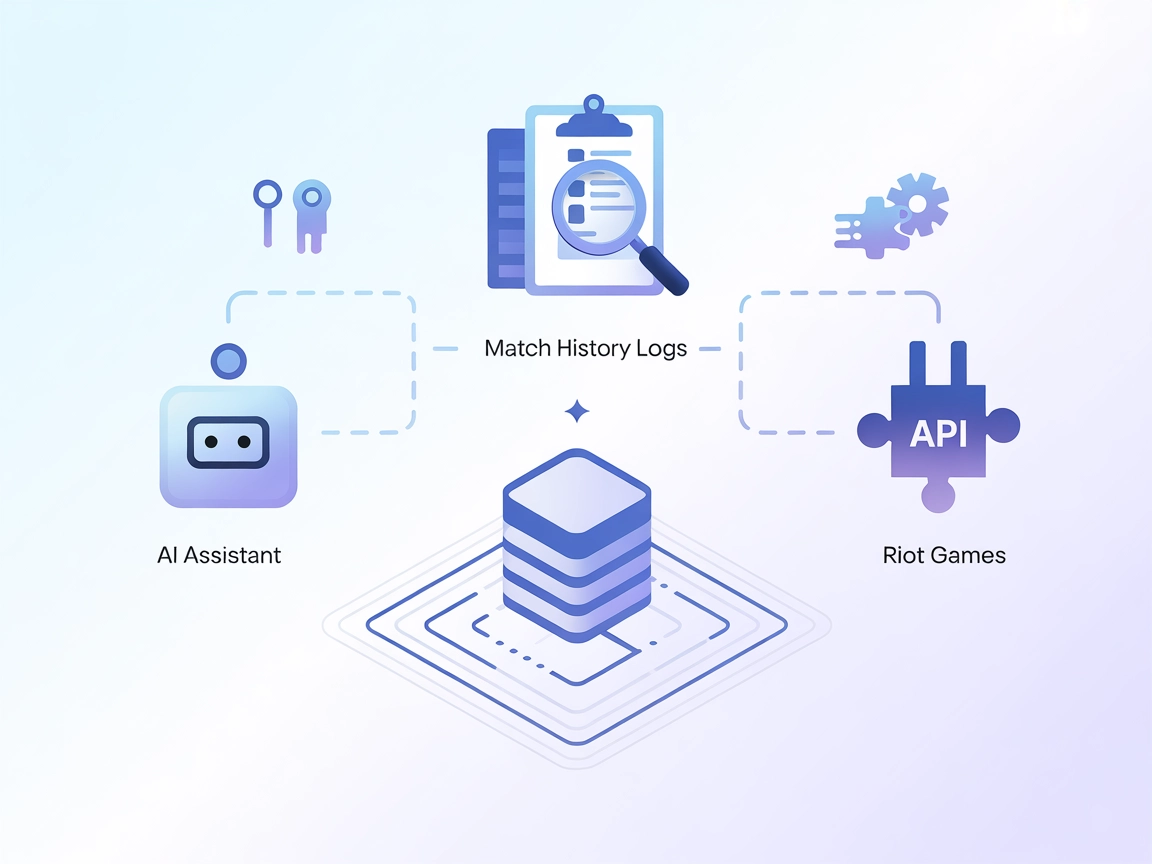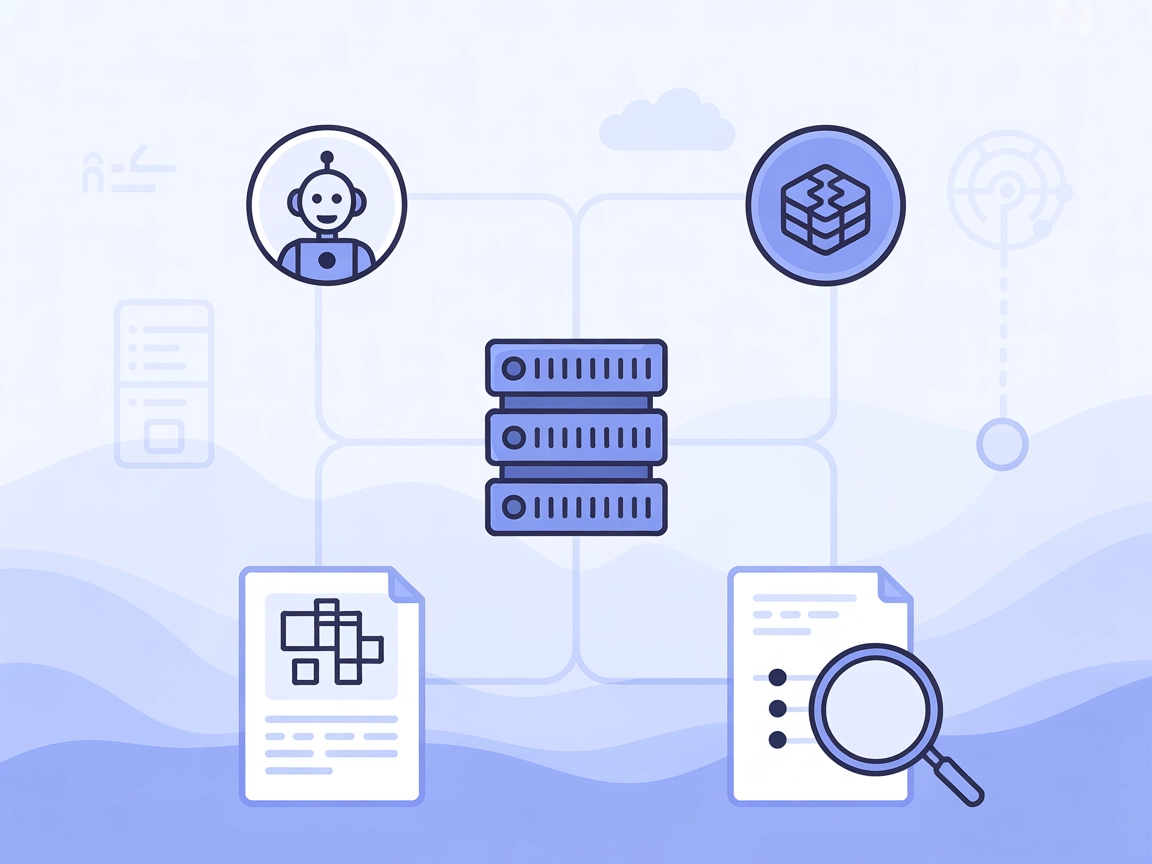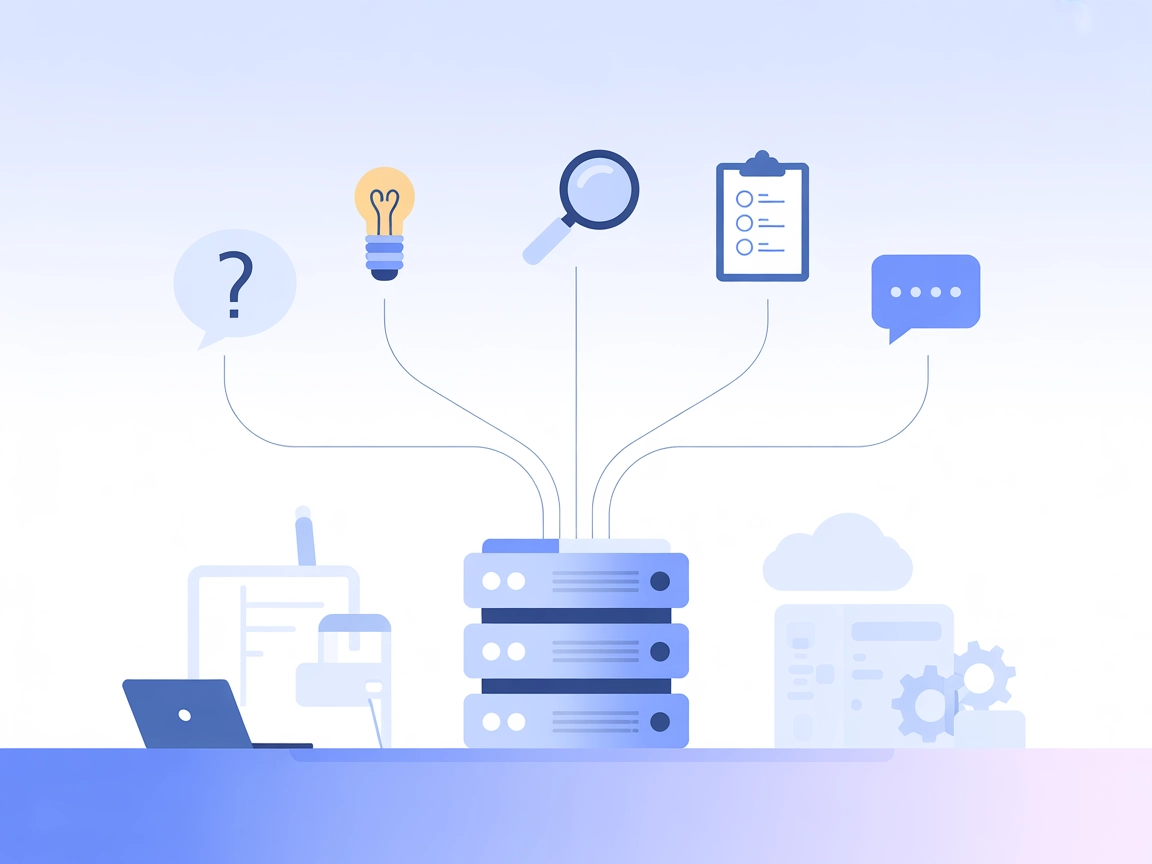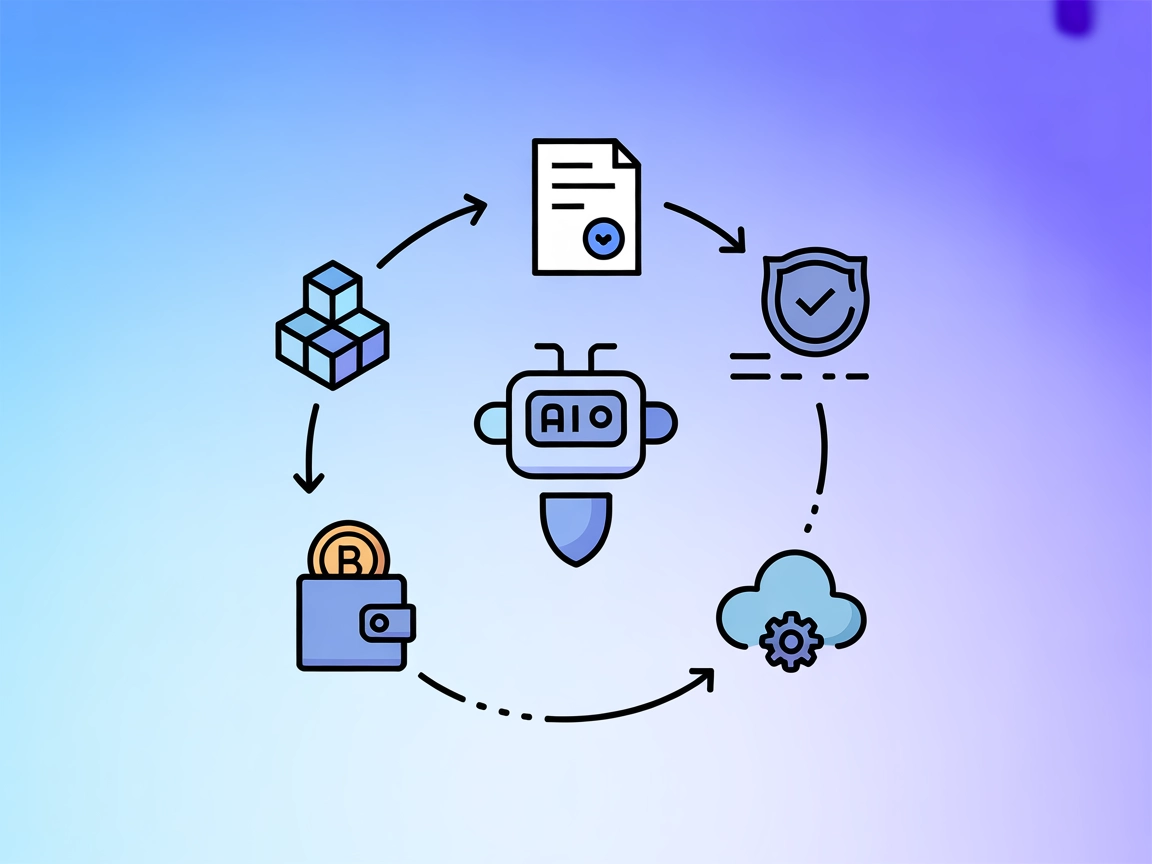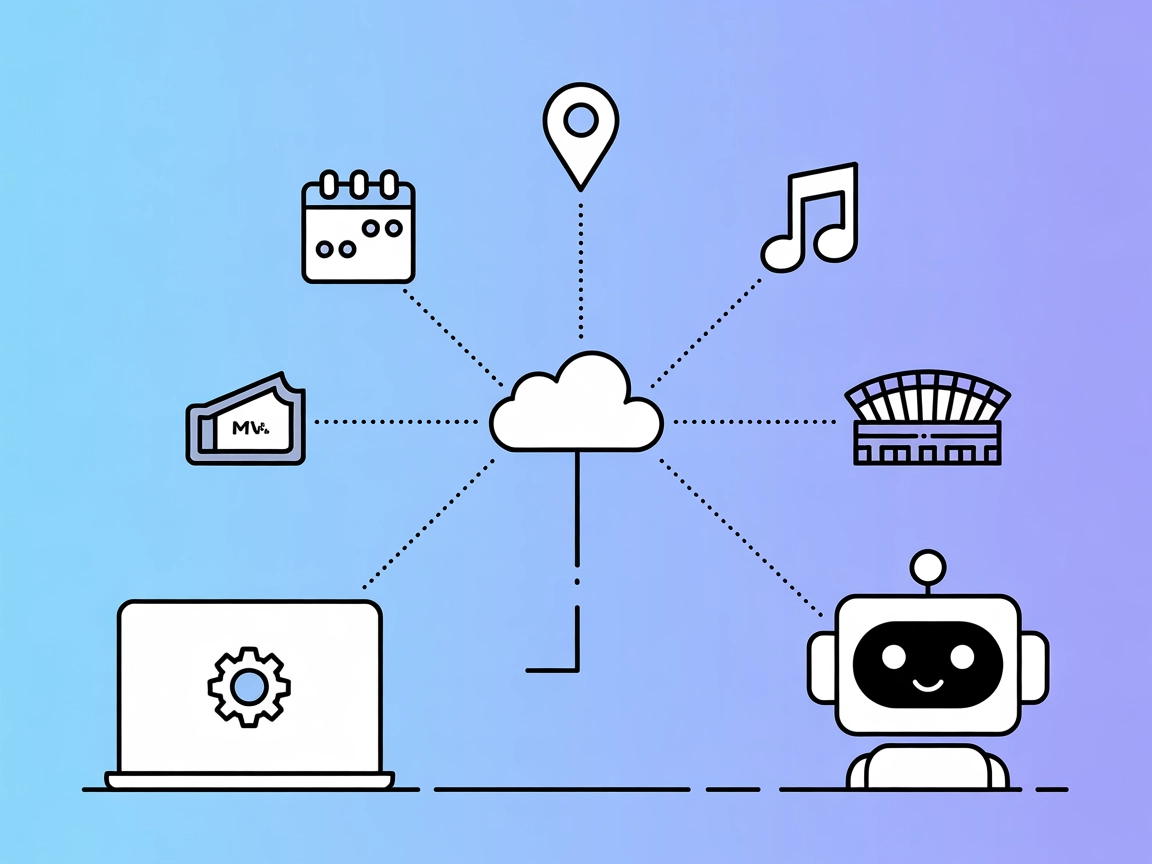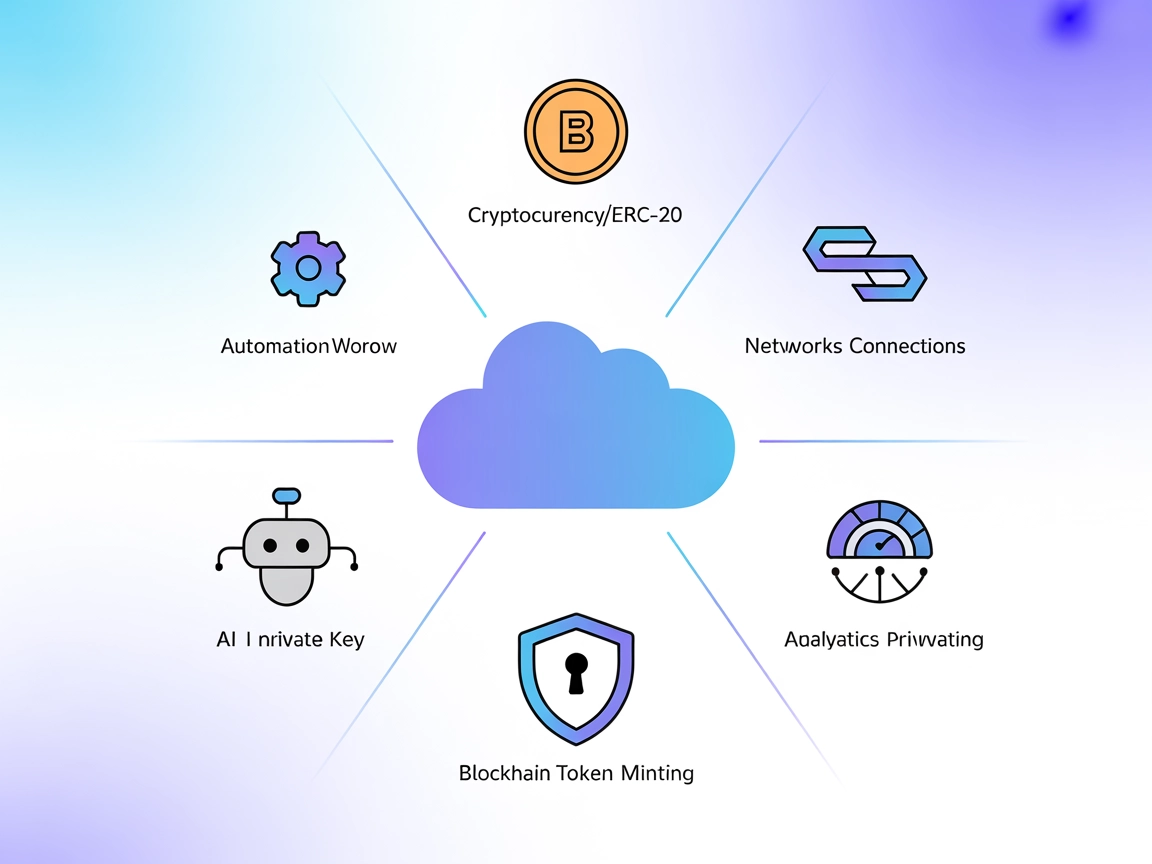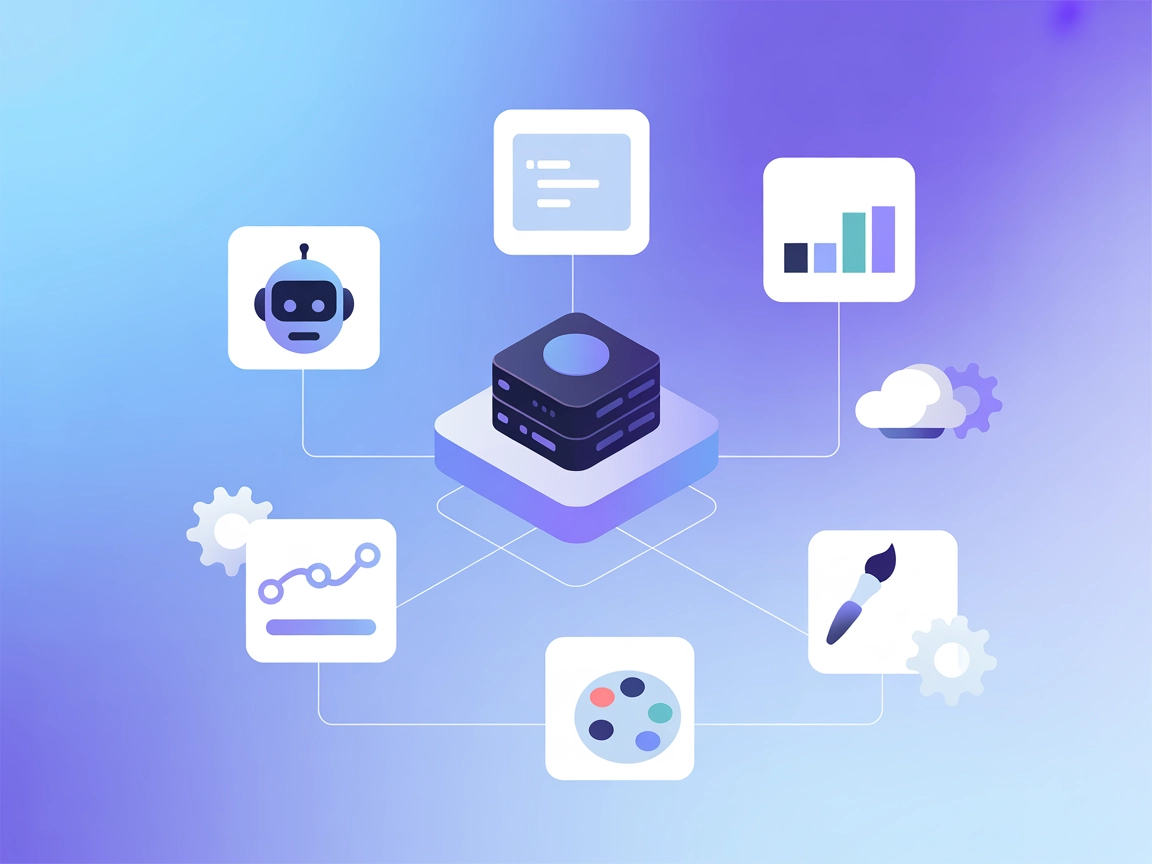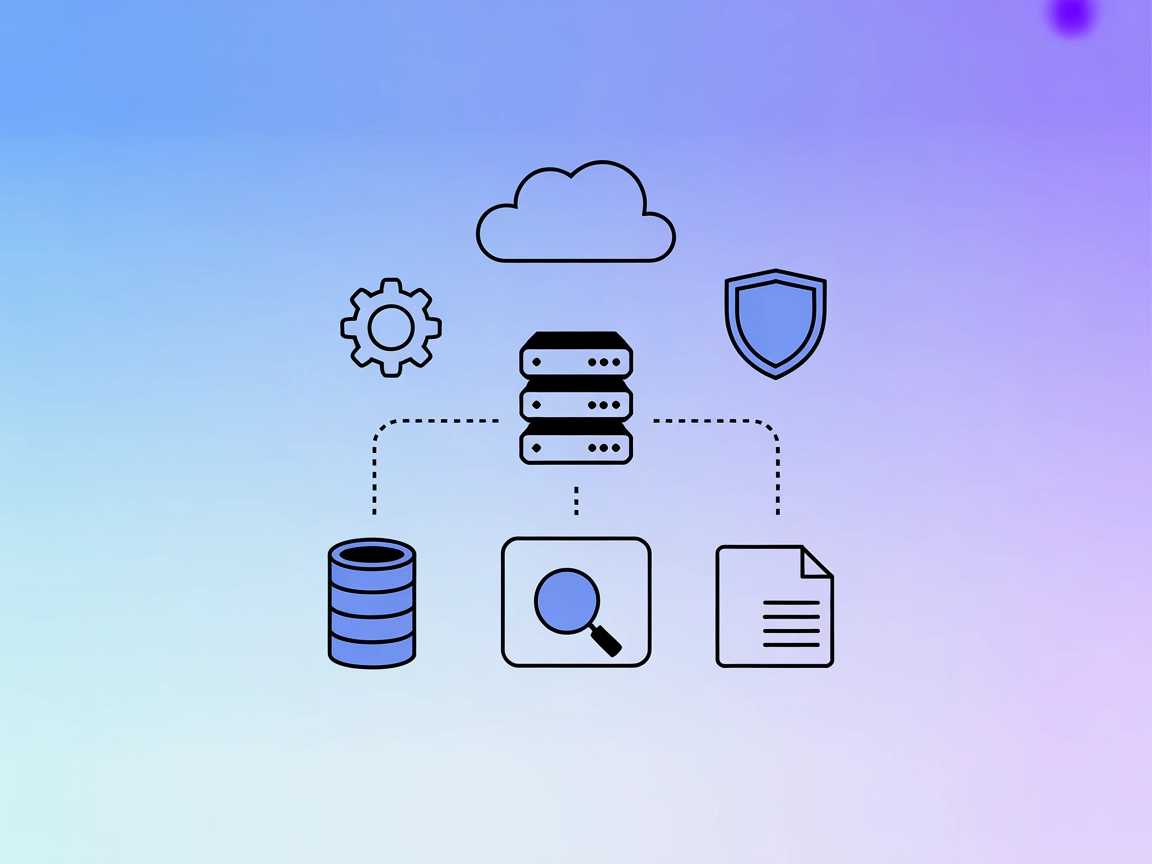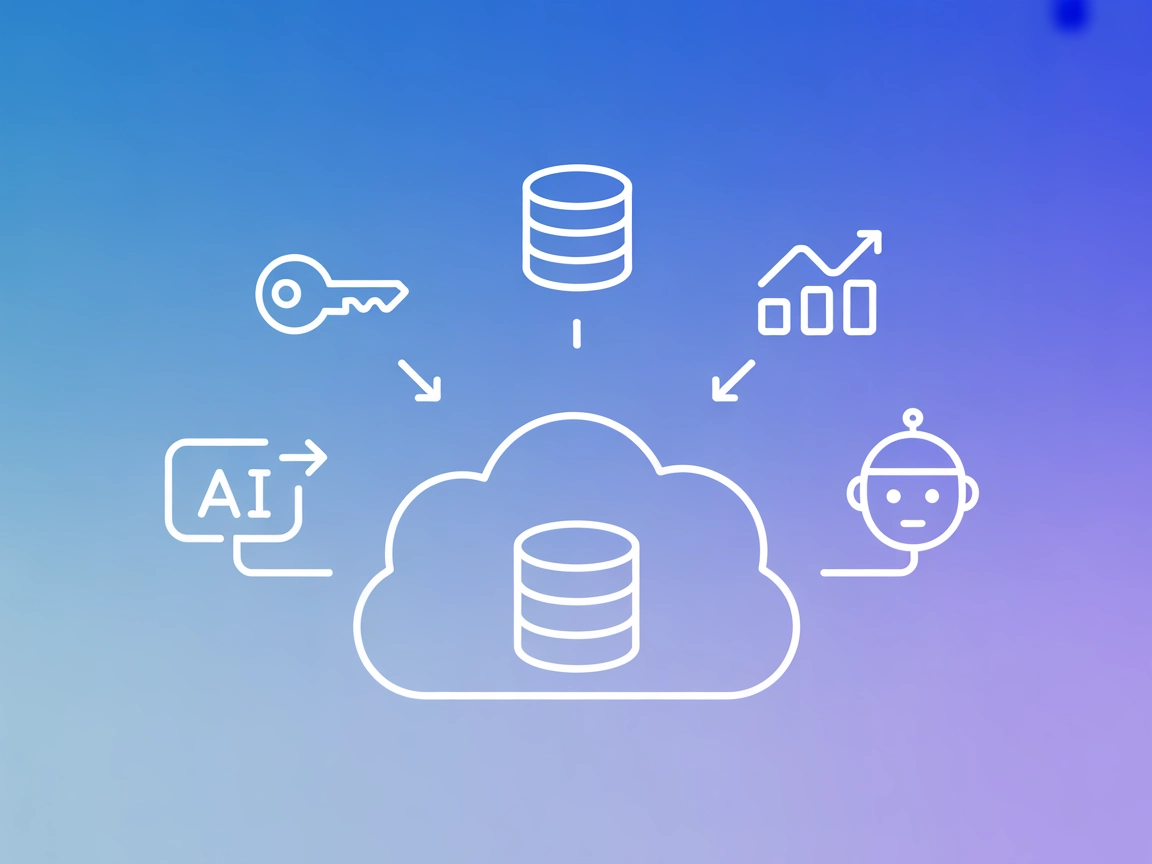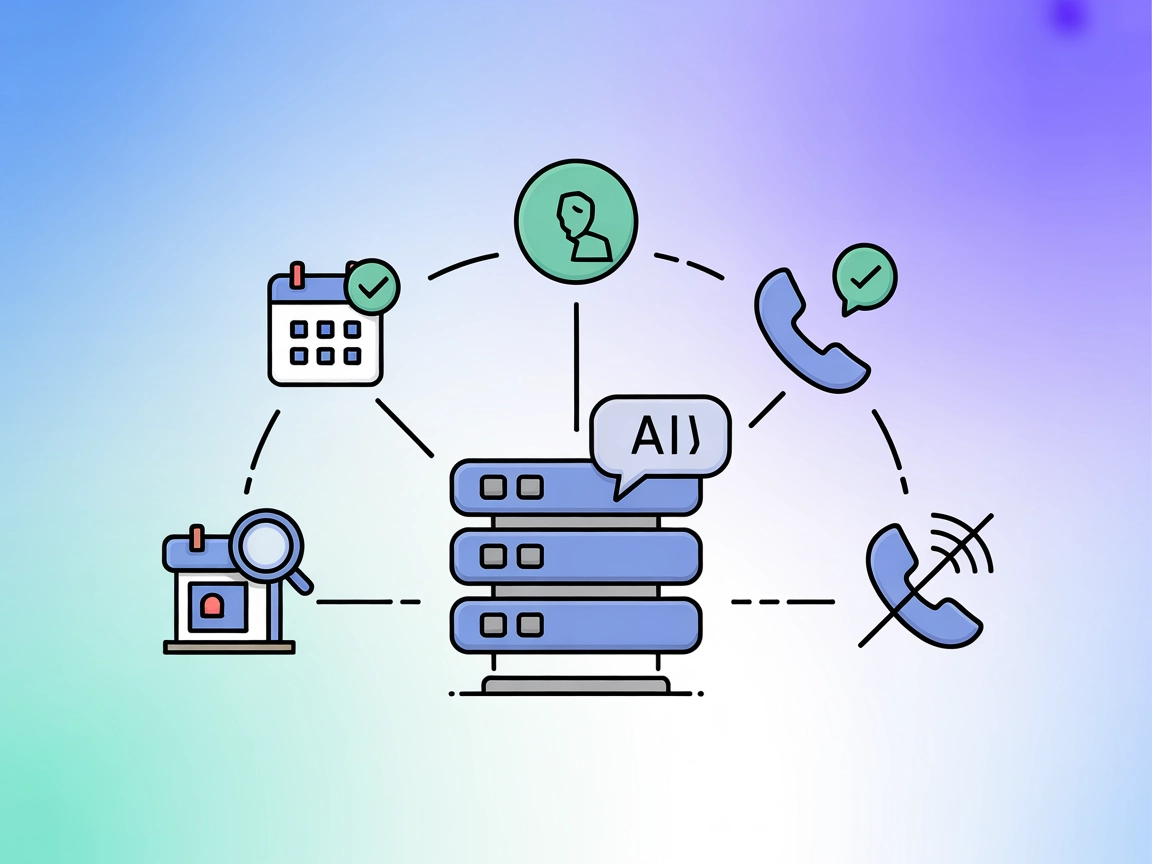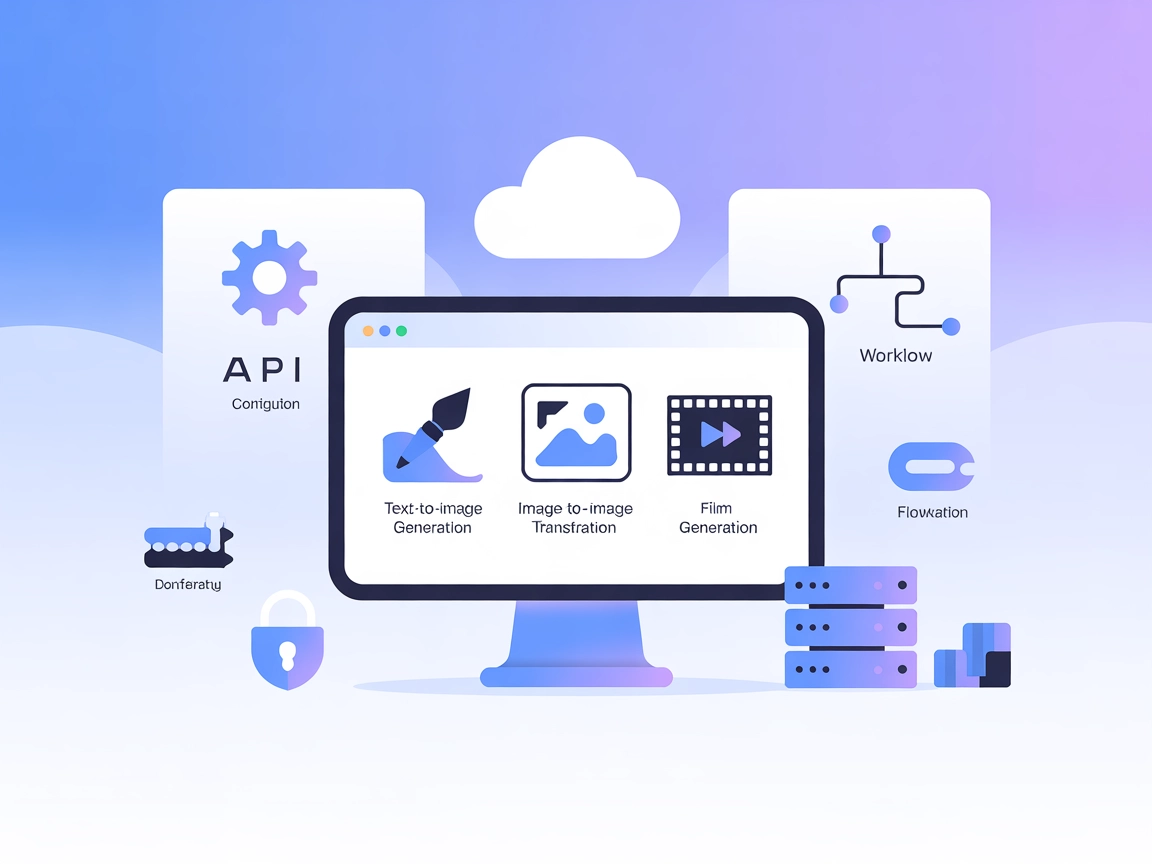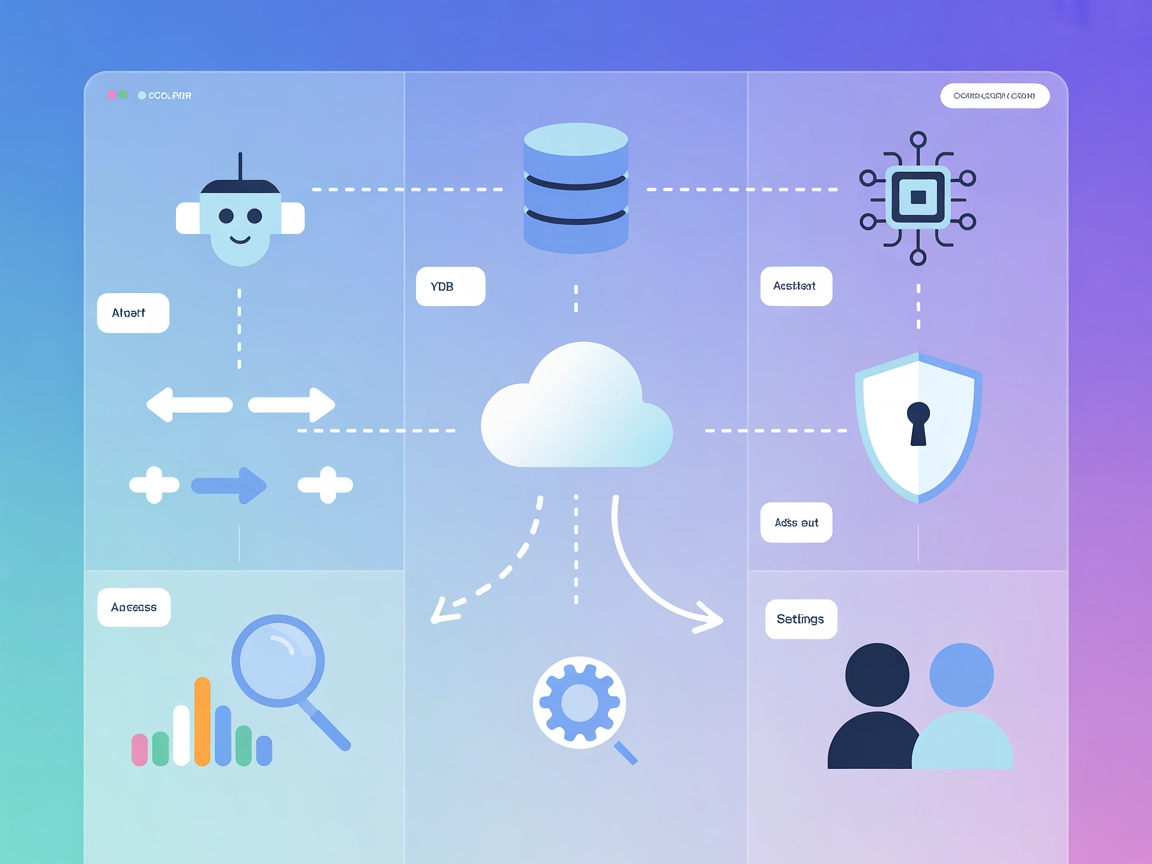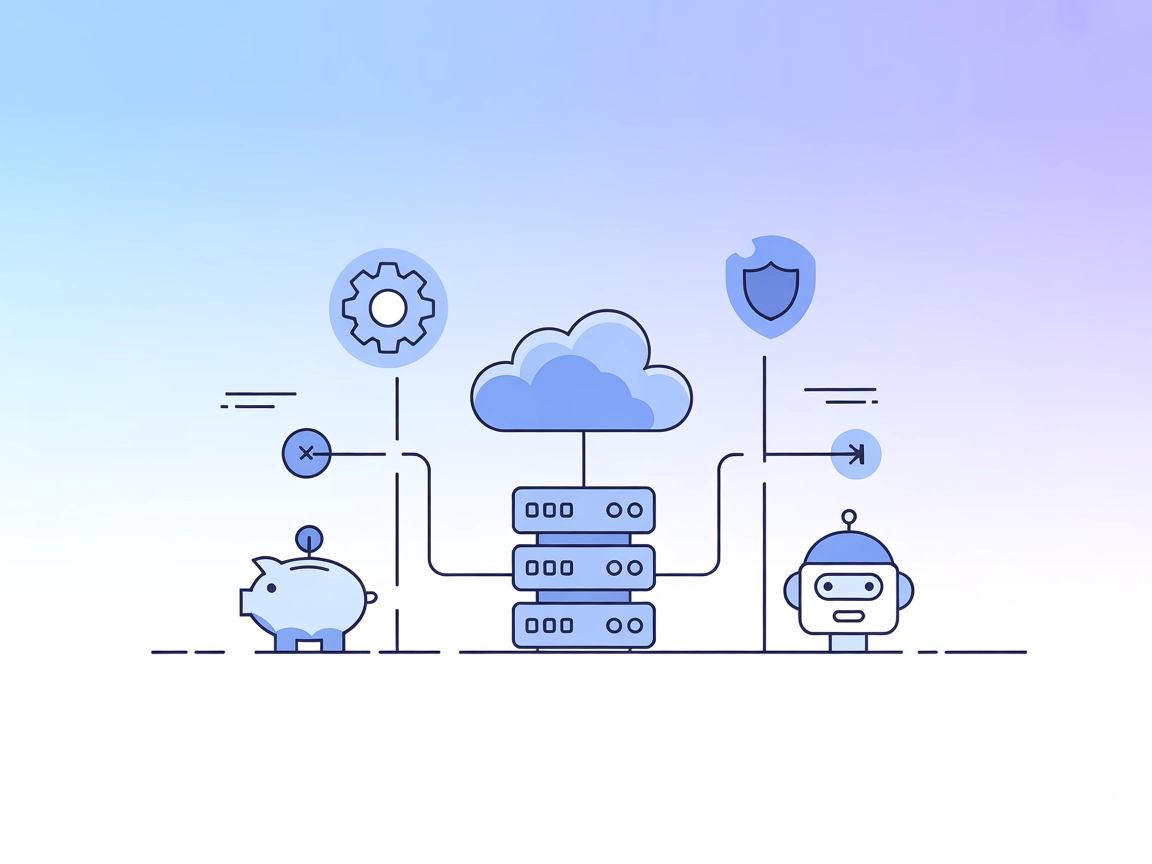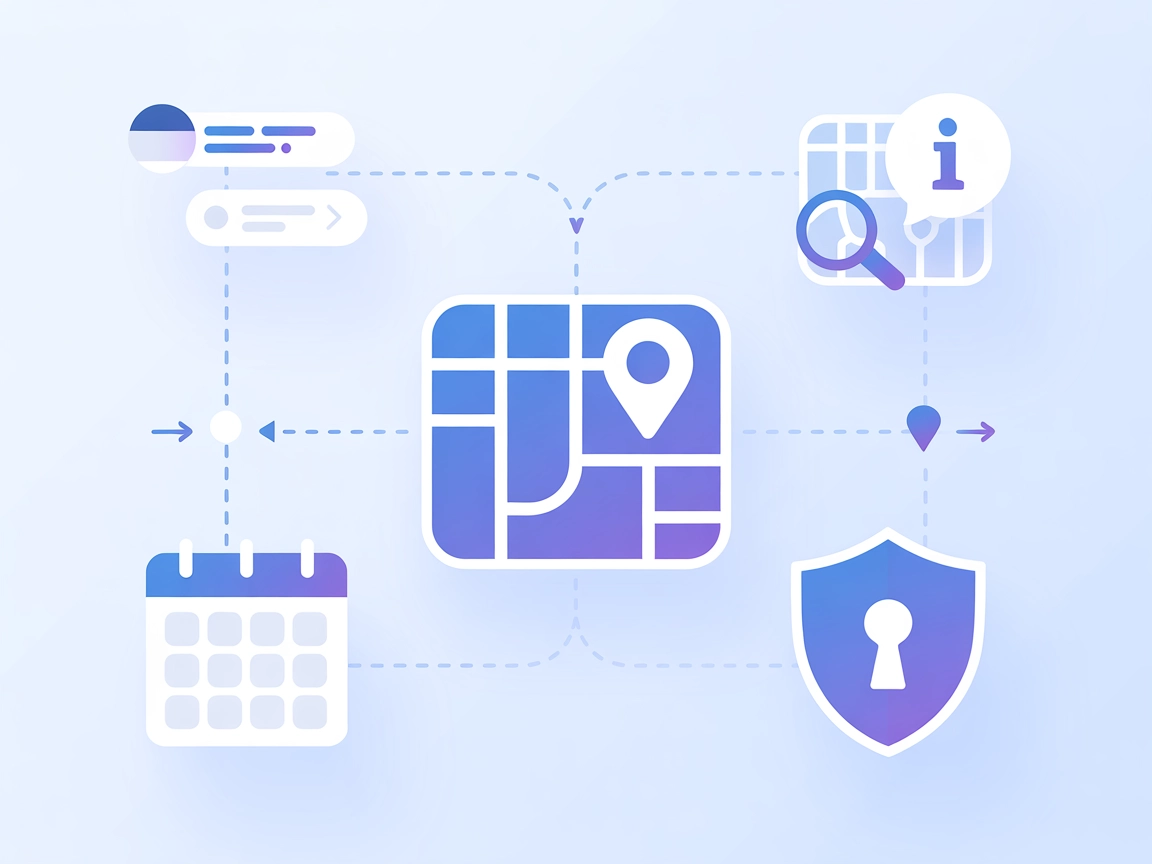
Travel Planner MCP Server
The Travel Planner MCP Server connects AI assistants to real-time travel data using the Google Maps API, enabling intelligent itinerary generation, place discov...
The Travel Planner MCP Server connects AI assistants to real-time travel data using the Google Maps API, enabling intelligent itinerary generation, place discov...
The UnifAI MCP Server connects AI assistants with external data sources, APIs, and services, enabling advanced automation and workflow orchestration within the ...
The Webflow MCP Server connects AI assistants and automation tools to Webflow's APIs, enabling seamless site discovery, automated management, and contextual dat...
The WhatsApp MCP Server bridges AI assistants and your WhatsApp account, enabling programmatic access to messages, contacts, and media for automation, analytics...
The World Bank MCP Server enables seamless access to and analysis of global economic and social indicators via the World Bank open data API. Designed for AI ass...
The wxflows MCP Server bridges AI assistants with external data sources and APIs, enabling secure, modular, and AI-driven workflow automation in FlowHunt. Easil...
The YouTube MCP Server enables FlowHunt AI agents to interact programmatically with YouTube, automating video analytics, transcript retrieval, content managemen...
The YouTube Video Summarizer MCP Server lets AI assistants and developers extract and summarize YouTube video content—including titles, descriptions, and transc...
The Zoom MCP Server enables seamless AI-driven management of Zoom meetings within FlowHunt and other AI platforms. It allows automated scheduling, updating, ret...
The AgentQL MCP Server integrates advanced web data extraction into AI workflows, enabling seamless structured data retrieval from web pages via customizable pr...
The Agentset MCP Server is an open-source platform enabling Retrieval-Augmented Generation (RAG) with agentic capabilities, allowing AI assistants to connect wi...
The Airbnb MCP Server connects AI agents and applications to real-time Airbnb listings, enabling property search, detailed accommodation info retrieval, and tra...
The Alpaca MCP Server enables AI assistants and large language models to interact with Alpaca’s trading platform via natural language, allowing for stock and op...
The AnalyticDB PostgreSQL MCP Server bridges AI assistants with AnalyticDB PostgreSQL databases, enabling seamless execution of SQL operations, schema explorati...
The any-chat-completions-mcp MCP Server connects FlowHunt and other tools to any OpenAI SDK-compatible Chat Completion API. It enables seamless integration of m...
The Auth0 MCP Server bridges AI assistants with Auth0's authentication and identity services. Integrate real-time user authentication, authorization, and identi...
The Bitable MCP Server connects FlowHunt and other AI platforms with Lark Bitable, enabling seamless database automation, schema exploration, and SQL-like query...
The CFBD MCP Server connects AI assistants and applications to the College Football Data API, enabling advanced programmatic access to college football statisti...
Chat MCP is a cross-platform desktop chat application that leverages the Model Context Protocol (MCP) to interface with various Large Language Models (LLMs). It...
Integrate ClickUp project management with AI assistants using the ClickUp MCP Server. This bridge enables AI agents to access and automate tasks, projects, and ...
The Cloudinary MCP Server connects AI assistants with Cloudinary for automated uploading, tagging, and managing images and videos. It streamlines media manageme...
The Cognee MCP (Model Context Protocol) Server connects AI assistants with external data sources, APIs, and services—enabling streamlined workflows, automation,...
Createve.AI Nexus is an open-source MCP server by RootUK, enabling AI assistants to securely access enterprise data, trigger workflows, and interact with busine...
The Data Exploration MCP Server connects AI assistants with external datasets for interactive analysis. It empowers users to explore CSV and Kaggle datasets, ge...
The Databricks MCP Server enables seamless integration between AI assistants and the Databricks platform, allowing natural language access to Databricks resourc...
The Datadog MCP Server bridges FlowHunt and Datadog’s API, enabling AI-driven access to monitoring data, dashboards, metrics, events, and logs for advanced obse...
The DevRev MCP Server brings DevRev’s powerful project management and enhancement tools directly into FlowHunt and AI assistant workflows. It enables programmat...
The dicom-mcp MCP Server enables seamless, secure, and programmatic access to DICOM servers, including PACS and VNA systems. It empowers AI assistants and devel...
The Email MCP Server integrates AI assistants with external email systems, enabling automated email sending, file attachments, and SMTP validation through a str...
The Fantasy Premier League MCP Server connects AI assistants to official FPL data, providing real-time access to player stats, team data, and more—enabling auto...
The Figma-Context MCP Server connects AI coding agents with Figma design layouts by exposing Figma data via the Model Context Protocol (MCP). It enables AI assi...
The Firecrawl MCP Server supercharges FlowHunt and AI assistants with advanced web scraping, deep research, and content discovery capabilities. Seamless integra...
The FRED MCP Server connects FlowHunt and AI assistants to the Federal Reserve Economic Data API, unlocking seamless access to over 800,000 economic time-series...
The GibsonAI MCP Server connects AI assistants to your GibsonAI projects and databases, enabling natural language management of schemas, queries, deployments, a...
The Gitee MCP Server enables seamless integration of AI assistants with Gitee's APIs via the Model Context Protocol, automating repository management, issue tra...
The GitHub MCP Server enables seamless AI-powered automation and data extraction from the GitHub ecosystem by bridging AI agents and GitHub APIs. Enhance your d...
The Google Sheets MCP Server enables secure, programmatic access to Google Sheets for AI agents and developers. It offers robust automation, typed tools, and fl...
The Gyazo MCP Server bridges AI assistants and Gyazo image hosting, enabling automated searching, fetching, uploading, and managing of images and metadata throu...
The Hyperbrowser MCP (Model Context Protocol) Server bridges AI assistants with external data sources, APIs, and services. It streamlines development workflows ...
The iMCP MCP Server bridges AI assistants with your Mac's native apps, providing secure access to Messages, Contacts, Calendar, Reminders, Weather, Maps, and mo...
The Inkeep MCP Server connects AI assistants and developer tools to up-to-date product documentation managed in Inkeep, enabling direct, secure, and efficient r...
The Intercom MCP Server bridges AI assistants and Intercom, enabling advanced customer support automation, analytics, and seamless access to Intercom conversati...
The JSON MCP Server for FlowHunt enables AI agents and developers to query, filter, and manipulate JSON data sources using standardized tools and operations. It...
The Kokoro Text to Speech (TTS) MCP Server enables AI agents and workflows to generate high-quality speech audio from text, with options for cloud storage and c...
Langflow-DOC-QA-SERVER is an MCP server for document question-and-answer tasks, enabling AI assistants to query documents via a Langflow backend. Integrate docu...
The Mac Messages MCP Server securely bridges AI assistants and LLMs with your iMessage database on macOS, enabling querying, automation, and enhanced productivi...
The MCP Code Executor MCP Server enables FlowHunt and other LLM-driven tools to securely execute Python code in isolated environments, manage dependencies, and ...
MCP Create is a dynamic server management service that allows on-demand creation, execution, and orchestration of multiple MCP servers. Designed for scalable, m...
The MCP Proxy Server aggregates multiple MCP resource servers into a single HTTP server, streamlining connections for AI assistants and developers. It enables u...
The mcp-hfspace MCP Server connects AI assistants with HuggingFace Spaces, enabling seamless integration, automation, and management of external AI models, demo...
The mcp-installer MCP Server streamlines and automates the installation of other Model Context Protocol servers, enabling AI assistants and developers to rapidl...
The mcp-server-commands MCP Server bridges AI assistants with secure system command execution, allowing LLMs to interact with the shell, automate development ta...
The mcp-vision MCP Server connects HuggingFace computer vision models—like zero-shot object detection—to FlowHunt and other AI platforms, empowering LLMs and AI...
The Membase MCP Server provides lightweight, decentralized, and persistent memory for AI agents by connecting them to the Unibase-powered Membase protocol. It e...
The Microsoft 365 MCP Server bridges AI assistants with Microsoft 365 services via the Graph API, enabling seamless automation of emails, calendars, files, task...
The Microsoft Fabric MCP Server enables seamless AI-driven interaction with Microsoft Fabric's data engineering and analytics ecosystem. It supports workspace m...
The Mifos X MCP Server bridges FlowHunt AI agents and Apache Fineract®, enabling seamless financial data automation, client onboarding, loan management, and wor...
The Model Context Protocol (MCP) Server bridges AI assistants with external data sources, APIs, and services, enabling streamlined integration of complex workfl...
The ModelContextProtocol (MCP) Server acts as a bridge between AI agents and external data sources, APIs, and services, enabling FlowHunt users to build context...
The Monzo MCP Server connects AI assistants to your Monzo Bank account, enabling secure, programmable access to personal banking data for automation, reporting,...
The Multicluster MCP Server empowers GenAI systems and developer tools to manage, monitor, and orchestrate resources across multiple Kubernetes clusters via the...
The Netdata MCP Server connects AI assistants and automation tools with the Netdata monitoring platform, allowing real-time access to system metrics and streaml...
The Obsidian MCP Server enables seamless AI interaction with Obsidian vaults, allowing automated management of notes, tags, and directories for advanced knowled...
The OceanBase MCP Server bridges secure AI interactions with OceanBase databases, enabling tasks like listing tables, reading data, and executing SQL queries in...
The Opik MCP Server connects the Opik platform with IDEs and development tools, enabling AI assistants to access project management, prompt templates, traces, a...
The Patronus MCP Server streamlines LLM evaluation and experimentation for developers and researchers, providing automation, batch processing, and robust setup ...
The Plane MCP Server enables FlowHunt and other LLM-powered platforms to automate and streamline project and issue management in Plane.so. It bridges AI assista...
The puremd MCP Server bridges AI assistants and agents with web content by unblocking and scraping sites, rendering dynamic pages, and converting resources into...
The Quickchart MCP Server integrates the QuickChart.io service with FlowHunt, enabling AI assistants and clients to generate dynamic charts programmatically. Id...
The Recraft MCP Server connects AI assistants and clients to the Recraft AI platform, offering advanced raster and vector image generation, style creation, vect...
Reexpress MCP Server brings statistical verification to LLM workflows. Using the Similarity-Distance-Magnitude (SDM) estimator, it delivers robust confidence es...
The Rememberizer MCP Server bridges AI assistants and knowledge management, enabling semantic search, unified document retrieval, and team collaboration across ...
The Room MCP Server enables AI assistants to collaborate in virtual rooms via the Room protocol, supporting multi-agent workflows, invitation management, transc...
The Root Signals MCP Server bridges AI assistants with the Root Signals Evaluation Platform, enabling advanced automation, telemetry, and workflow orchestration...
The Salesforce MCP Server integrates AI assistants with Salesforce, enabling automated workflows such as sending emails and deploying Apex code directly through...
The Sample S3 MCP Server connects AI agents with AWS S3 buckets, exposing PDF documents as MCP resources and enabling advanced workflows like document retrieval...
The Sanctions MCP Server connects AI assistants to robust sanctions screening capabilities, enabling automated compliance checks against global sanctions lists ...
The Shortcut MCP Server bridges AI assistants with the Shortcut project management platform, enabling seamless automation and integration of Shortcut’s data and...
The Slack MCP Server enables seamless integration between AI assistants and Slack Workspaces, allowing message automation, workflow integration, and secure conn...
The Splunk MCP Server bridges AI assistants and Splunk, exposing search, alert, index, and macro functionalities as tools for seamless operational integration a...
The Spotify MCP Server bridges FlowHunt AI assistants with Spotify’s API, enabling automated playback control, music search, playlist management, metadata retri...
The Spring Initializr MCP Server allows AI assistants to generate and download Spring Boot projects programmatically, streamlining backend development by automa...
The Telegram MCP Server bridges Telegram’s API with AI assistants using the Model Context Protocol, enabling automated workflows for messaging, dialog managemen...
The Teradata MCP Server integrates AI assistants with Teradata databases, enabling advanced analytics, seamless SQL query execution, and real-time business inte...
The TFT MCP Server connects AI assistants to the Riot Games API, enabling programmatic access to Team Fight Tactics (TFT) player match history and detailed matc...
TheGraph MCP Server connects AI agents with indexed blockchain data from The Graph protocol, enabling seamless access, querying, and analysis of on-chain inform...
Think MCP Server provides a structured reasoning tool for agentic AI workflows, enabling explicit thought logging, policy compliance, sequential decision-making...
The thirdweb-mcp MCP Server bridges AI assistants with blockchain and web3 resources, enabling automated blockchain data querying, smart contract management, an...
Integrate the Ticketmaster MCP Server with FlowHunt to empower your AI assistants with real-time event discovery, venue search, and attraction exploration using...
The Token Minter MCP Server empowers AI assistants and agents to seamlessly interact with blockchain ecosystems, enabling automated deployment, querying, and tr...
The TouchDesigner MCP Server enables seamless AI integration with TouchDesigner, allowing for automated project control, generative art, and creative coding wor...
The Twilio MCP Server bridges AI assistants with Twilio’s APIs, enabling automated SMS, calls, and resource management within FlowHunt and other AI-driven workf...
The Typesense MCP Server connects AI agents to Typesense, an open-source search engine, enabling LLMs to search, retrieve, and analyze structured data collectio...
The Upstash MCP Server empowers AI assistants and agents to seamlessly manage Upstash cloud databases using natural language or programmatic MCP commands. Strea...
The Voyp MCP Server enables FlowHunt AI assistants to connect with telephony services, allowing them to make phone calls, schedule appointments, retrieve busine...
WavespeedMCP is a Model Control Protocol (MCP) server designed for WaveSpeed AI services, providing advanced image and video generation capabilities via standar...
The Whois MCP Server bridges AI assistants and the WHOIS database, enabling seamless domain, IP, and ASN lookups inside development environments like Cursor, Cl...
The Workflowy MCP Server connects AI assistants with Workflowy, enabling automated note-taking, project management, and productivity workflows directly within F...
The YDB MCP Server connects AI assistants and LLMs with YDB databases, enabling natural language access, querying, and management of YDB instances. It empowers ...
The YNAB MCP Server bridges You Need A Budget (YNAB) with AI systems via standardized Model Context Protocol endpoints, enabling secure, automated access to fin...
